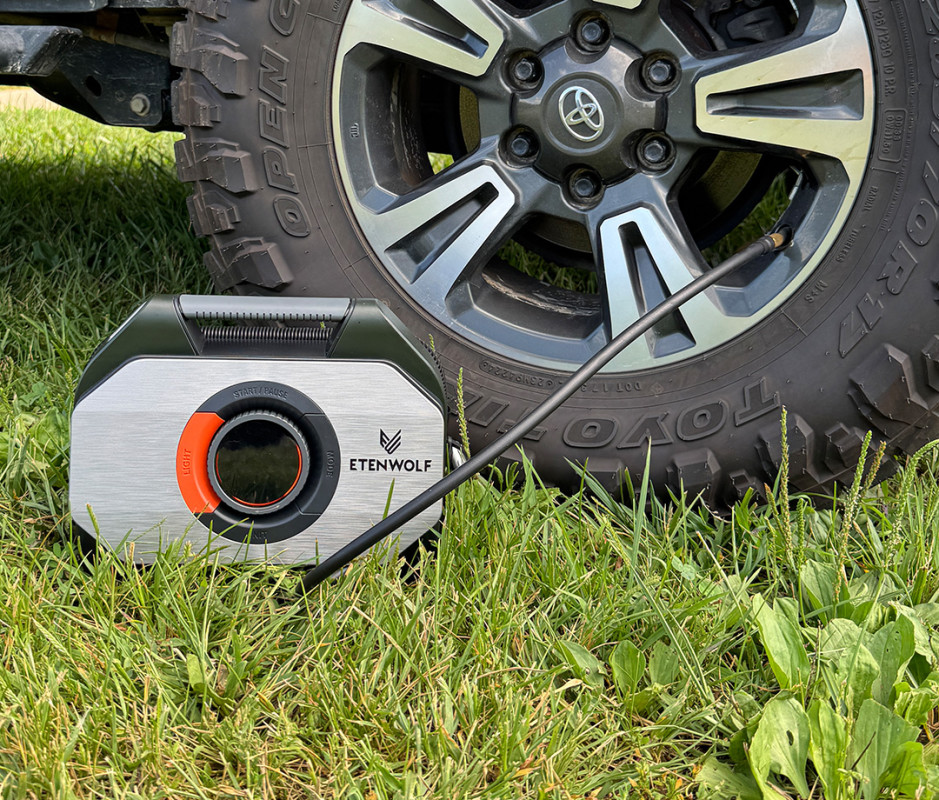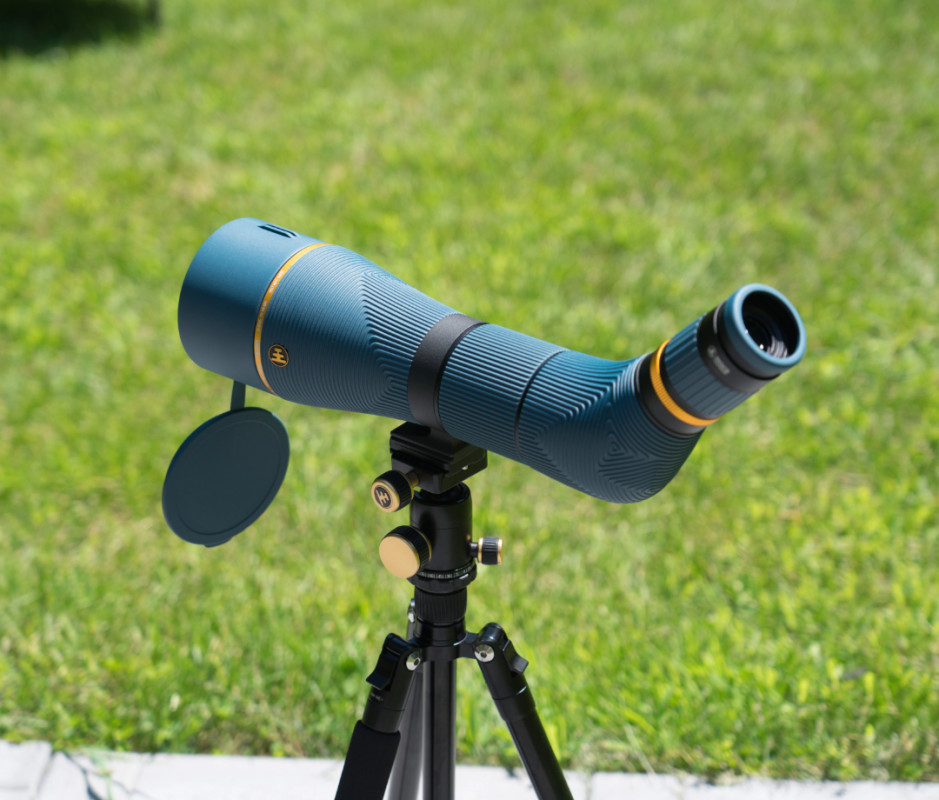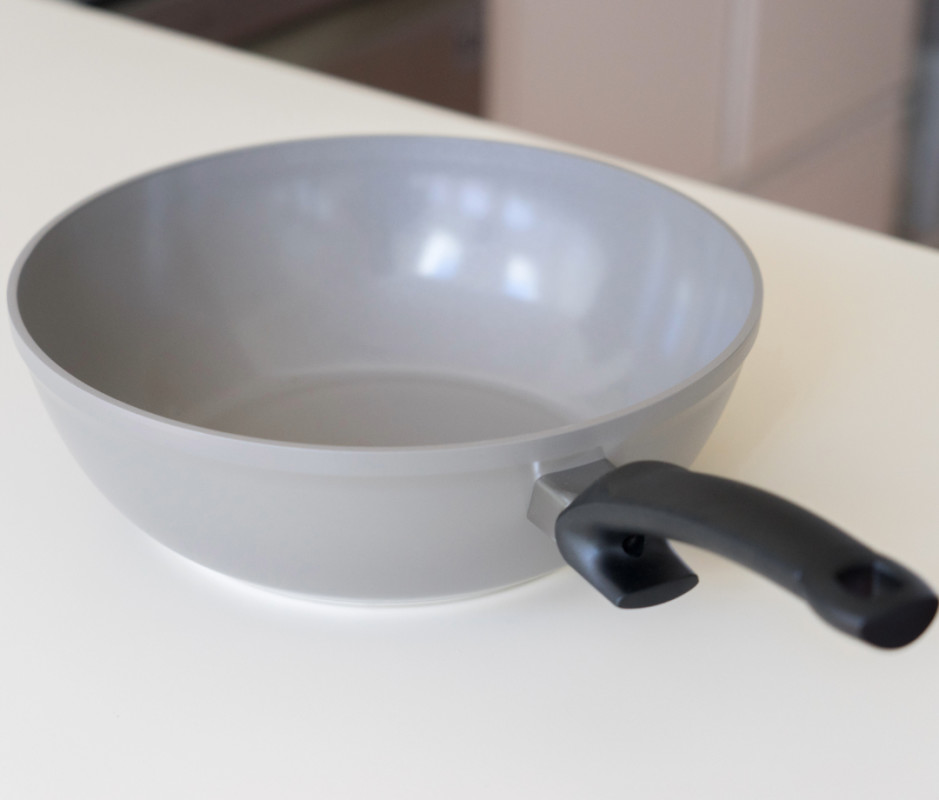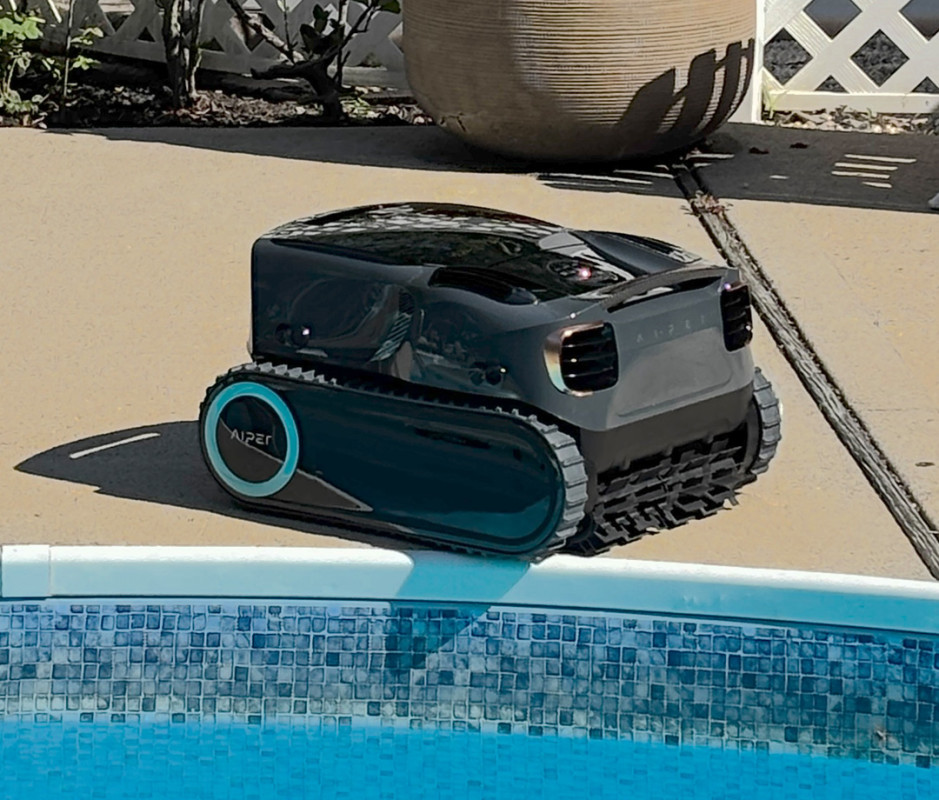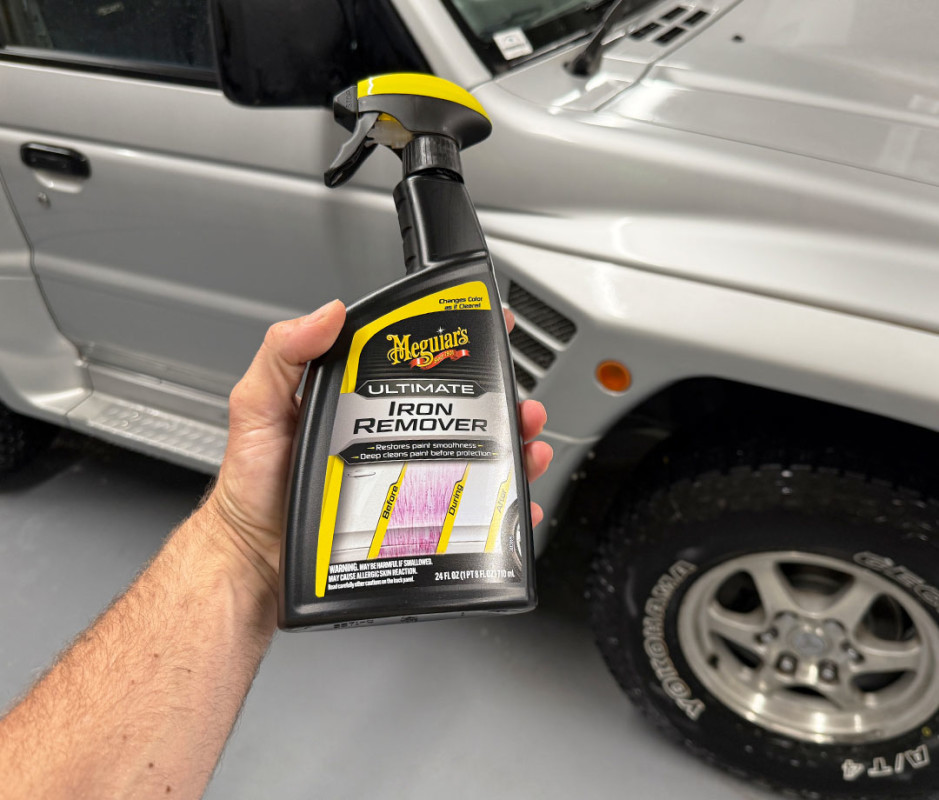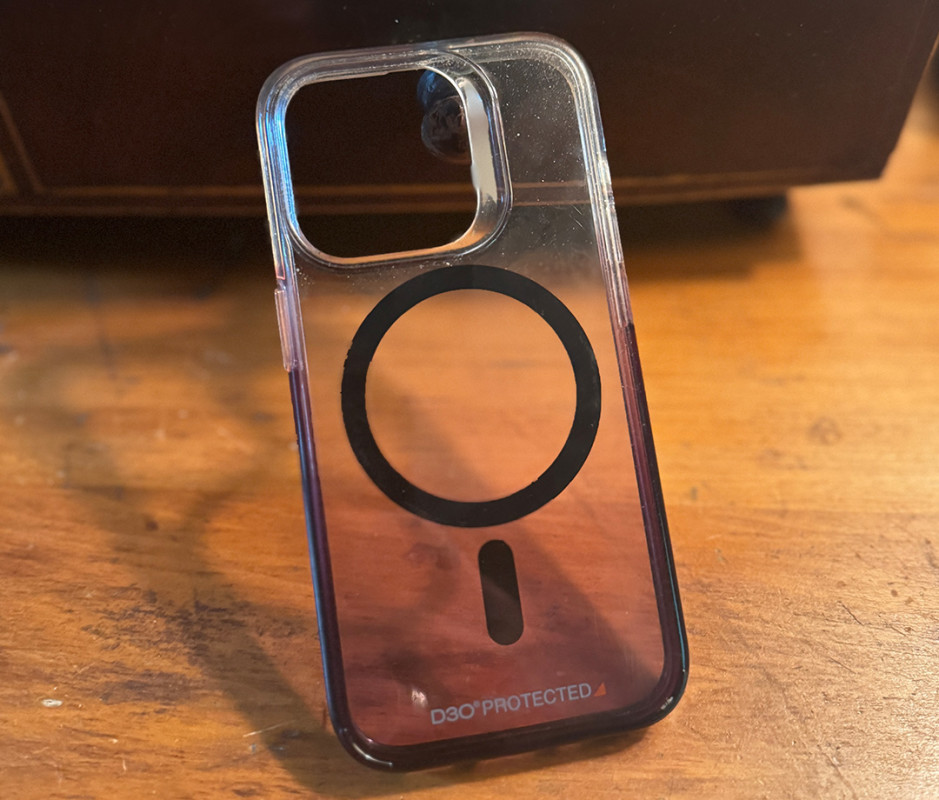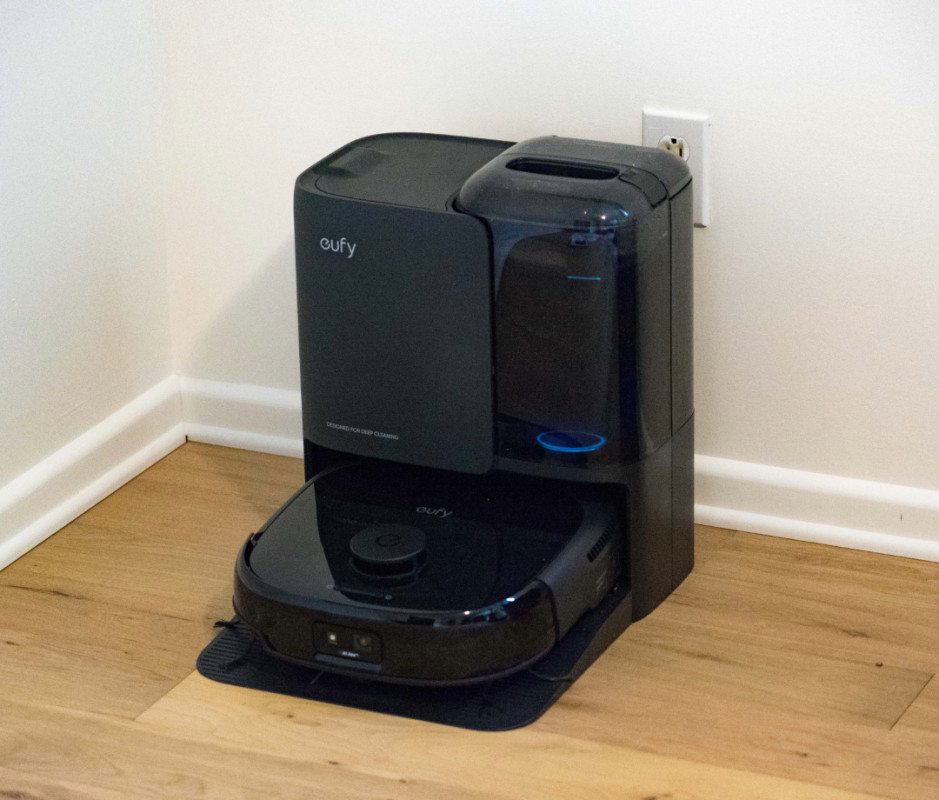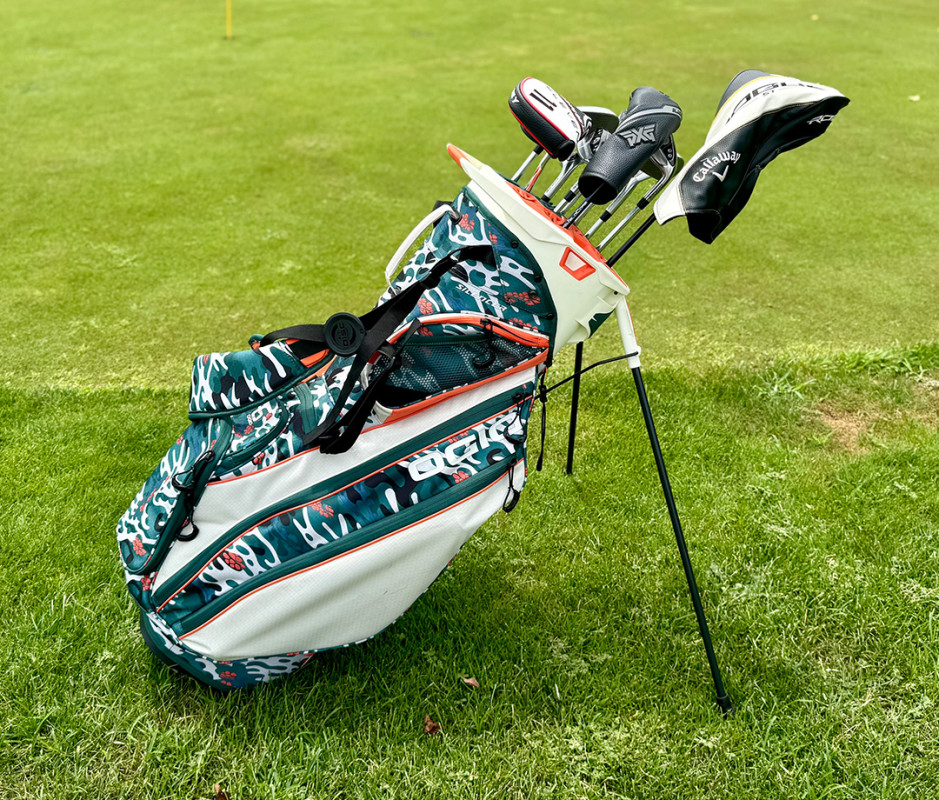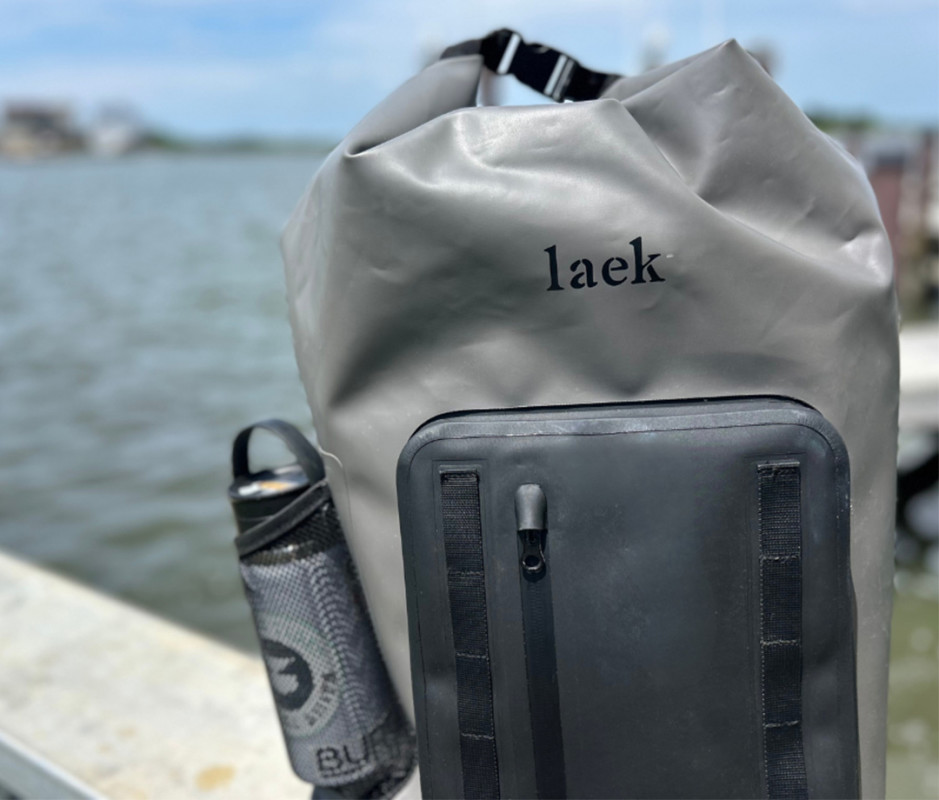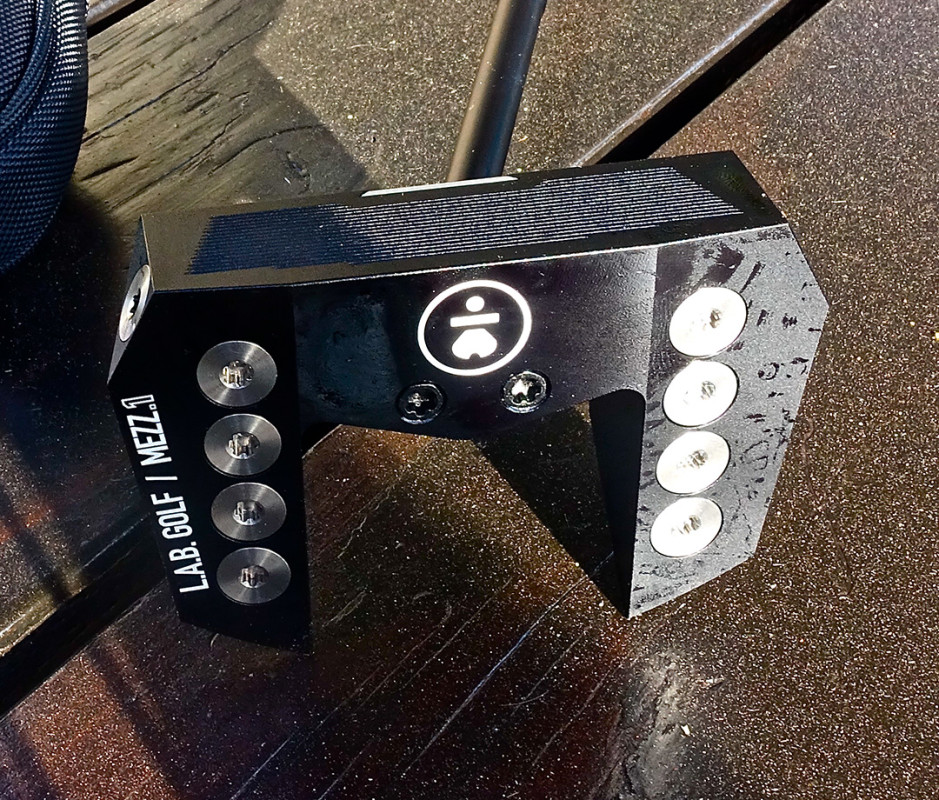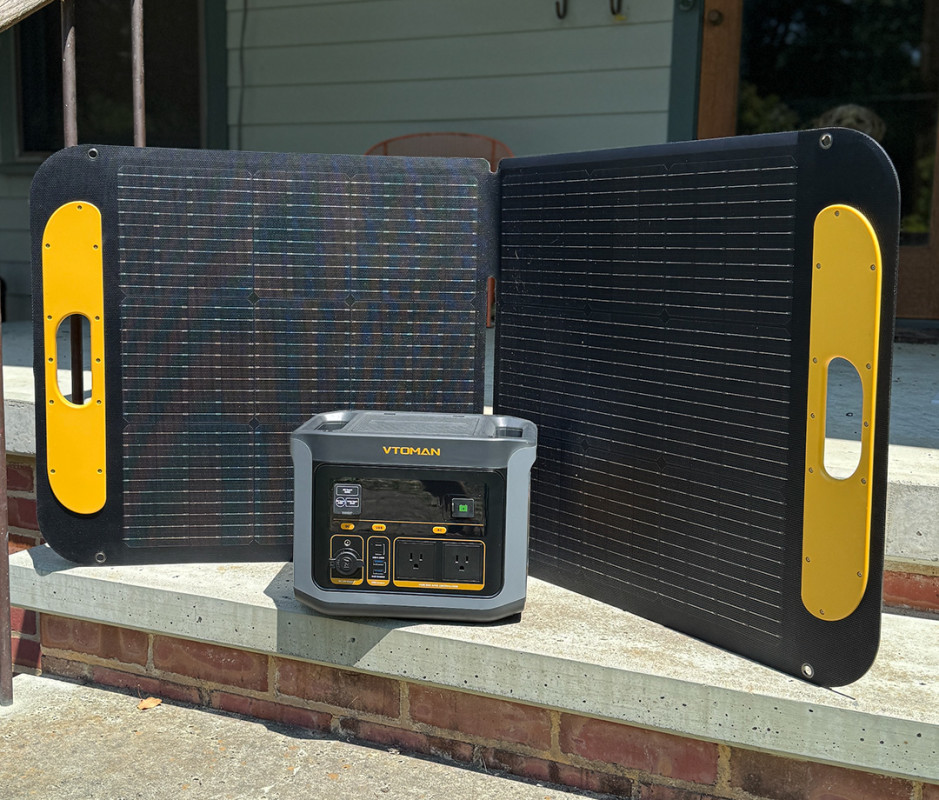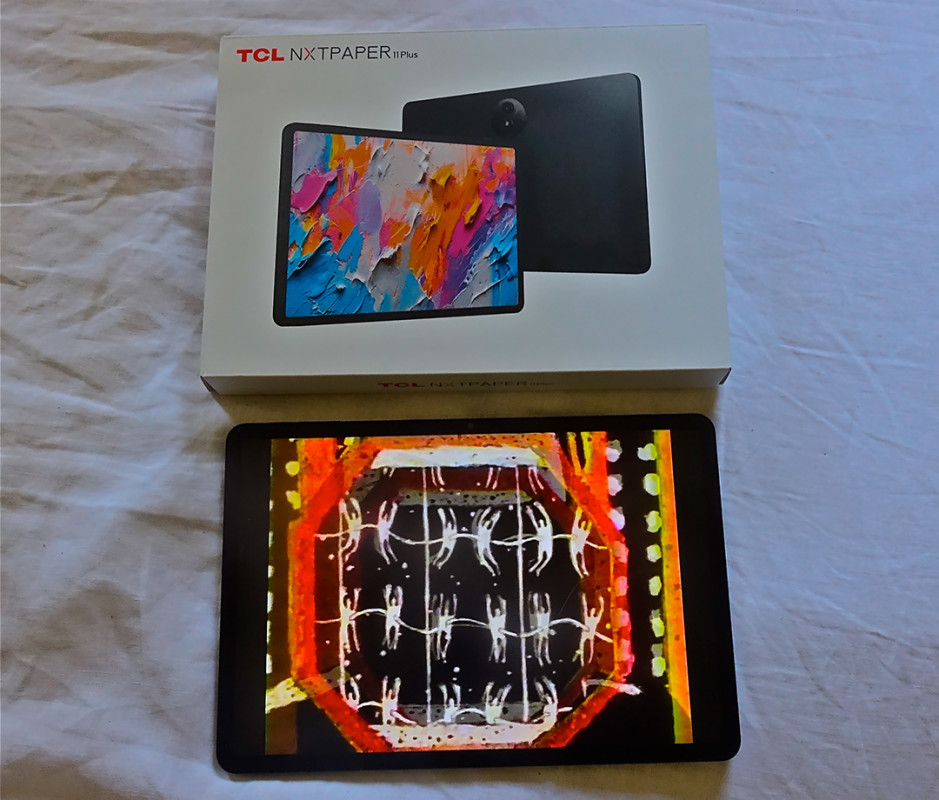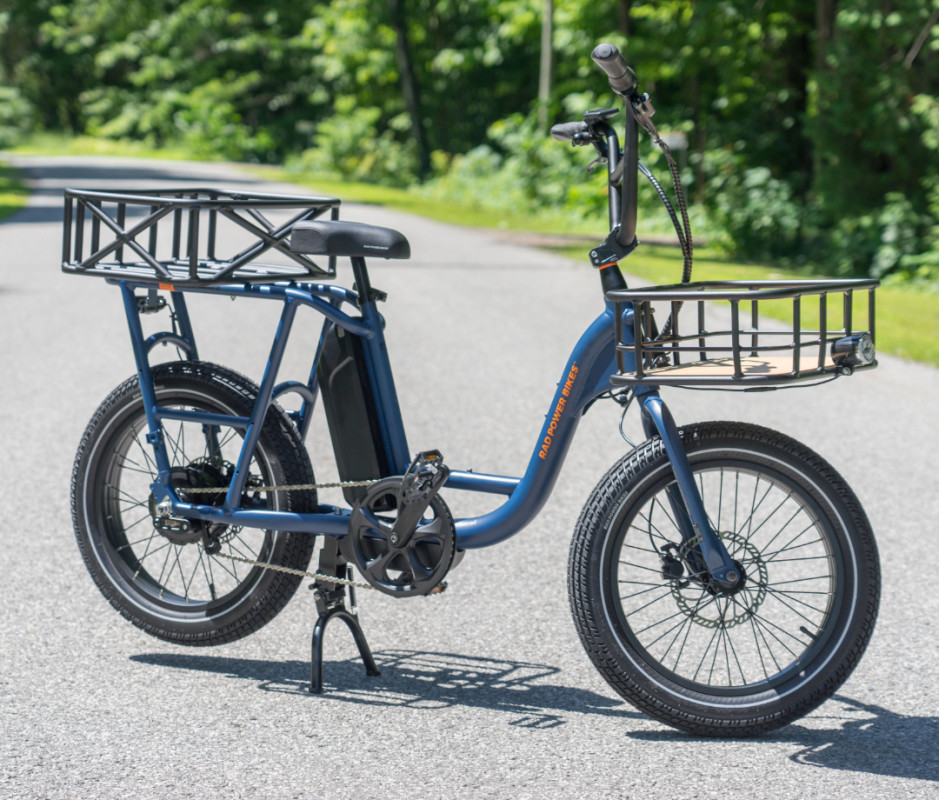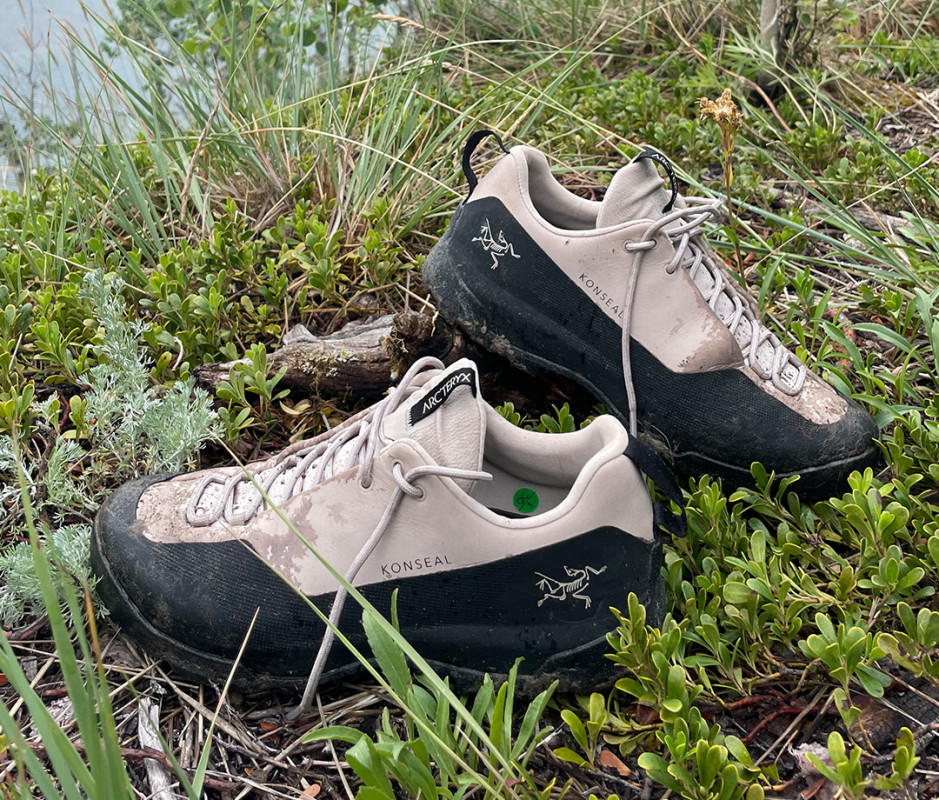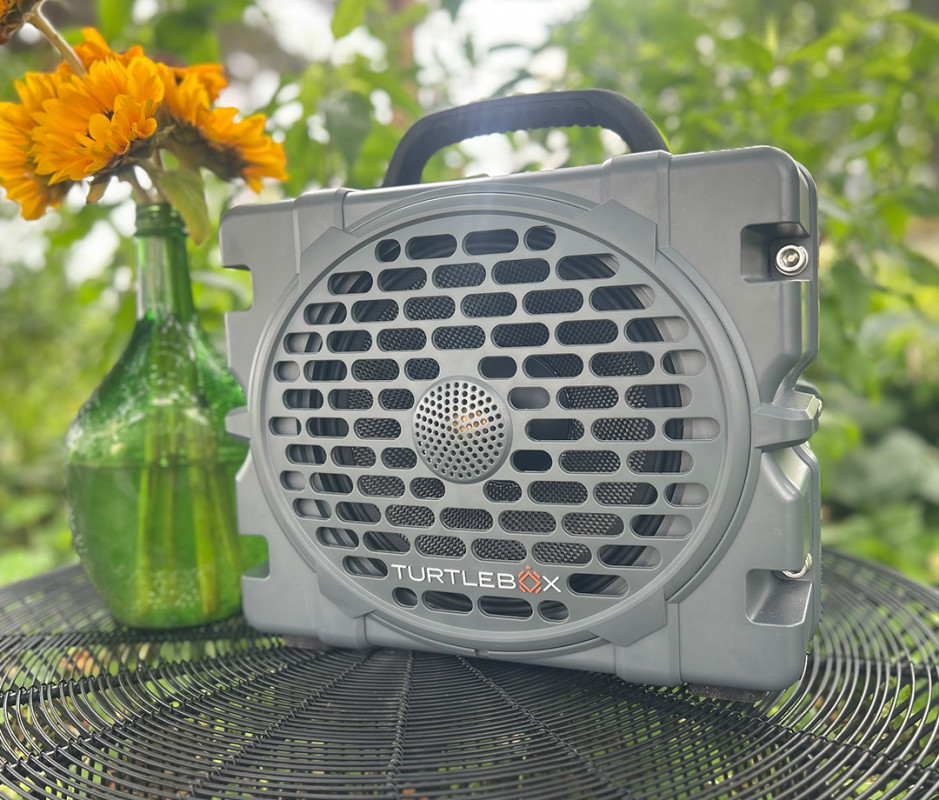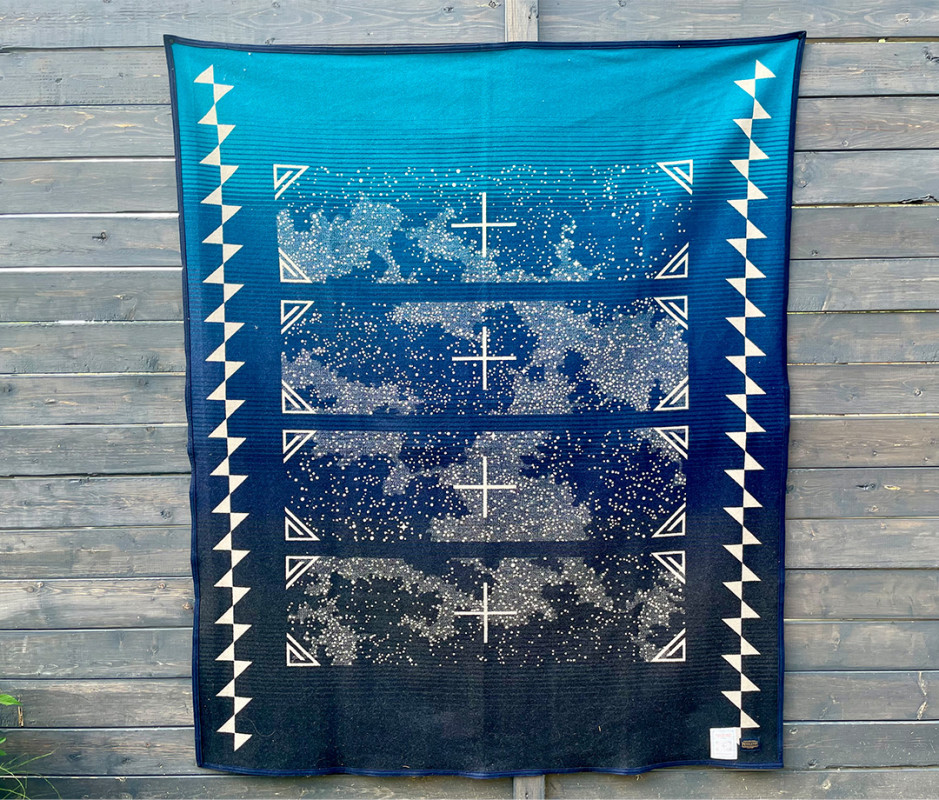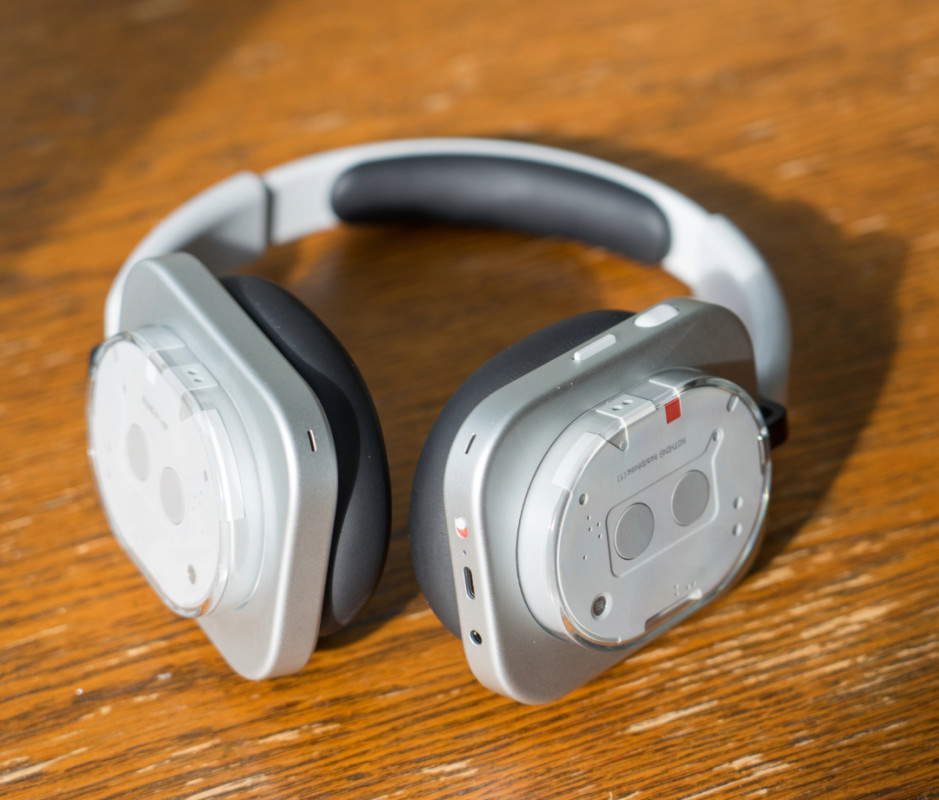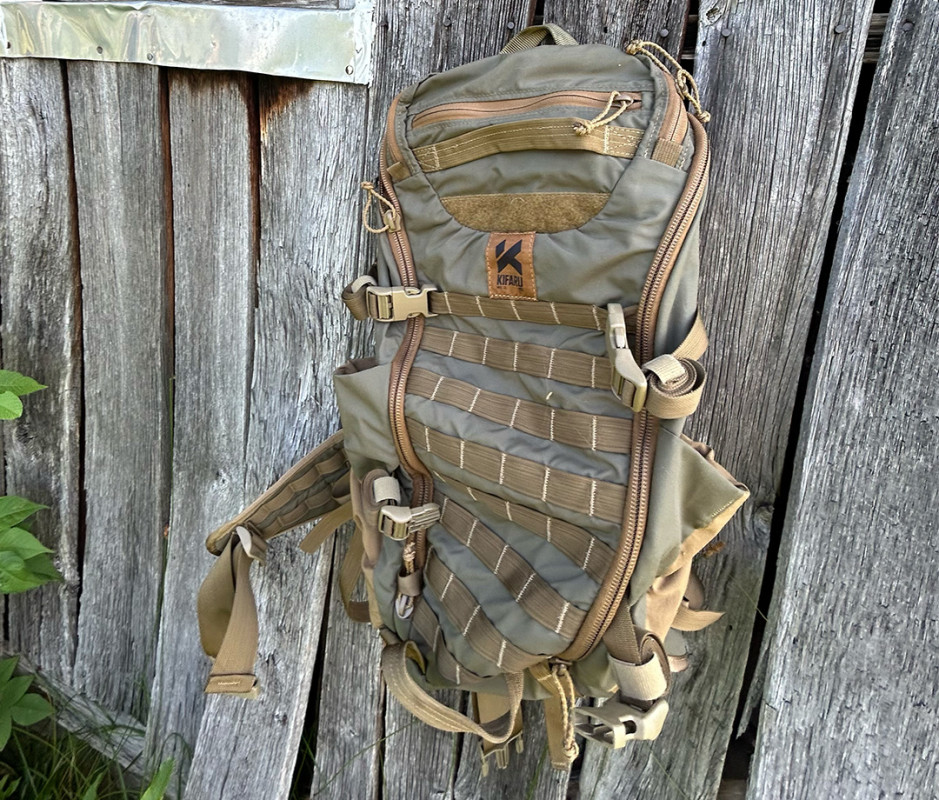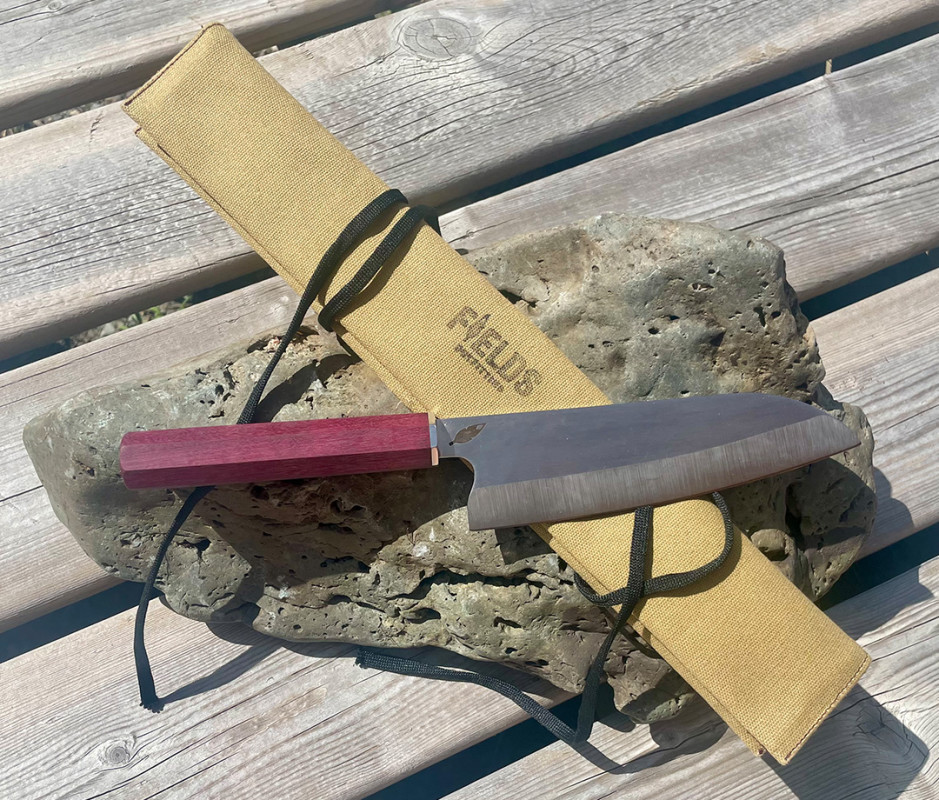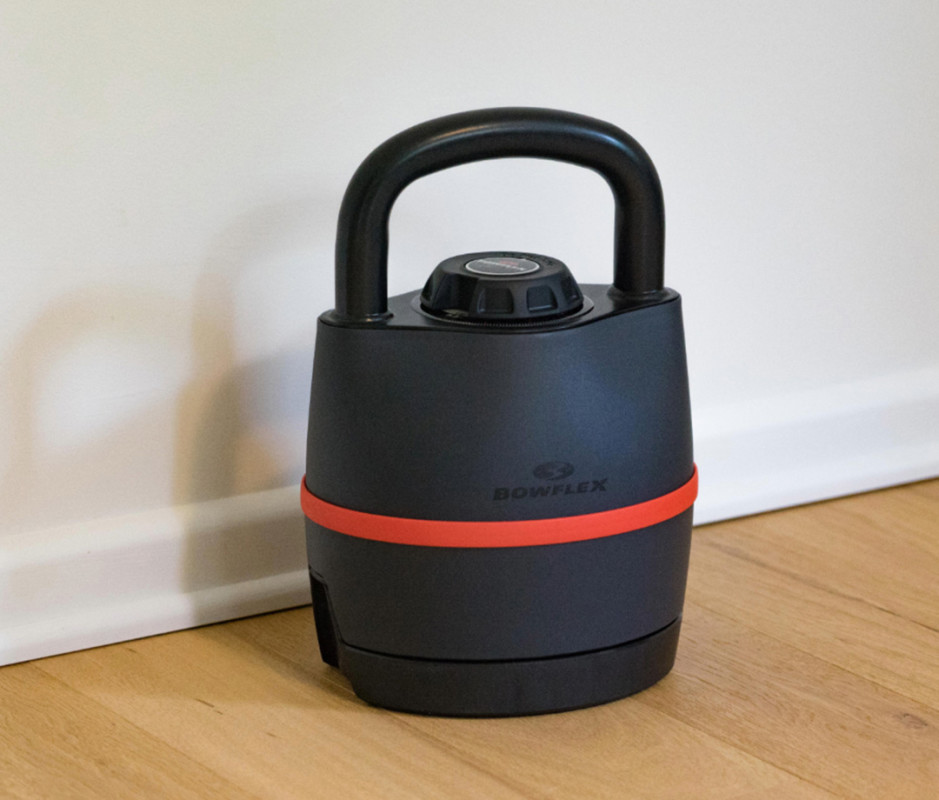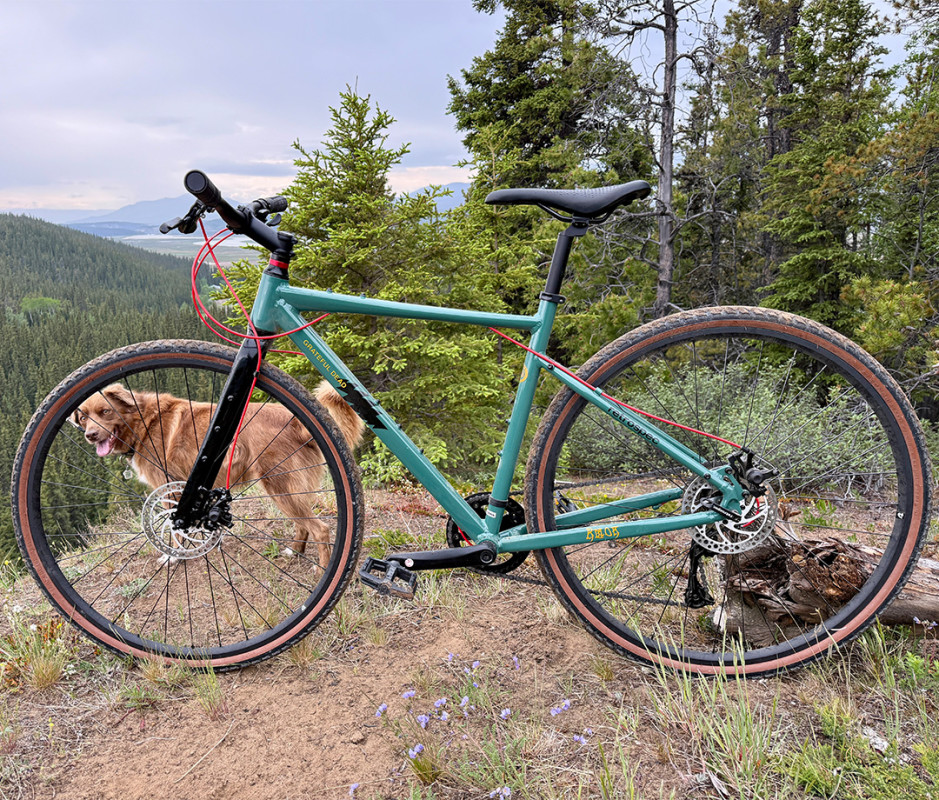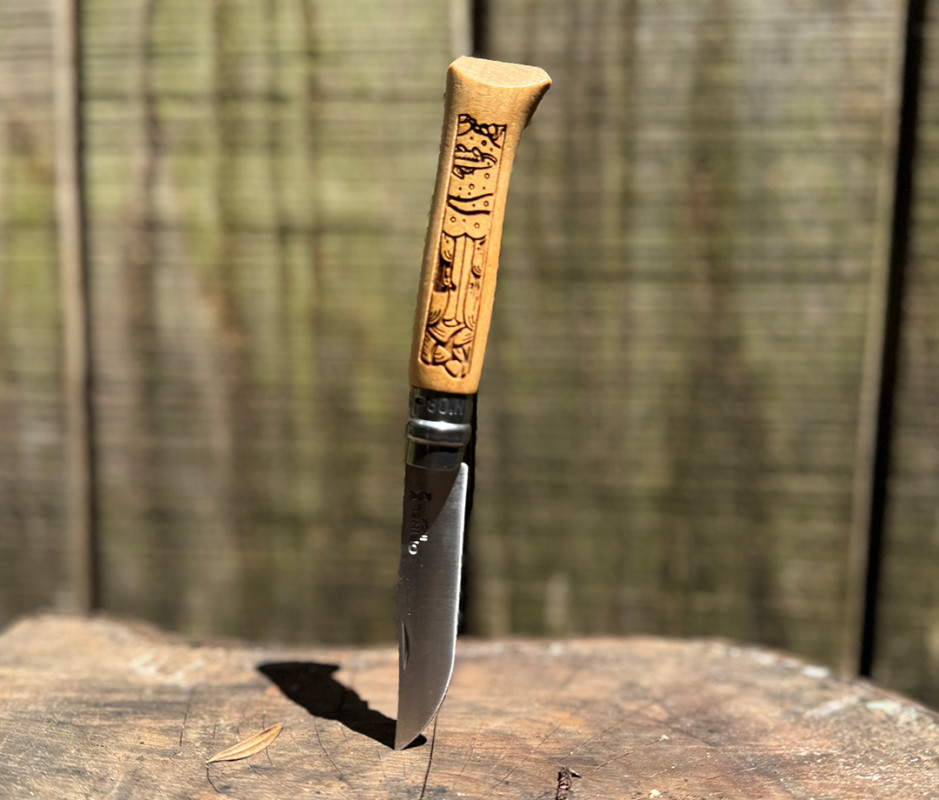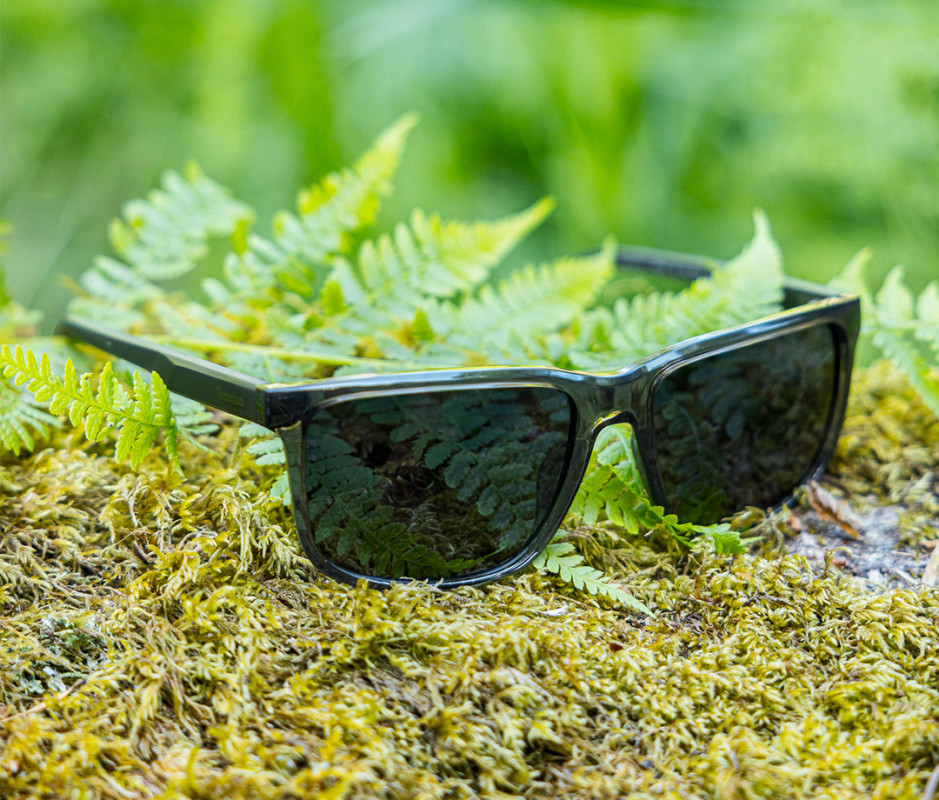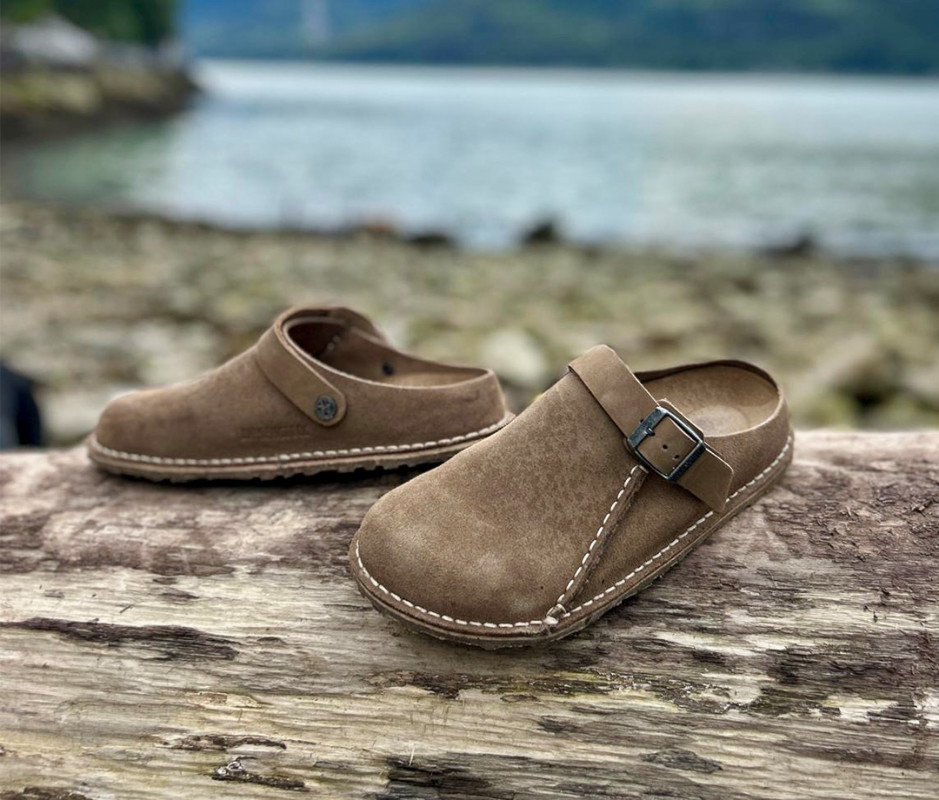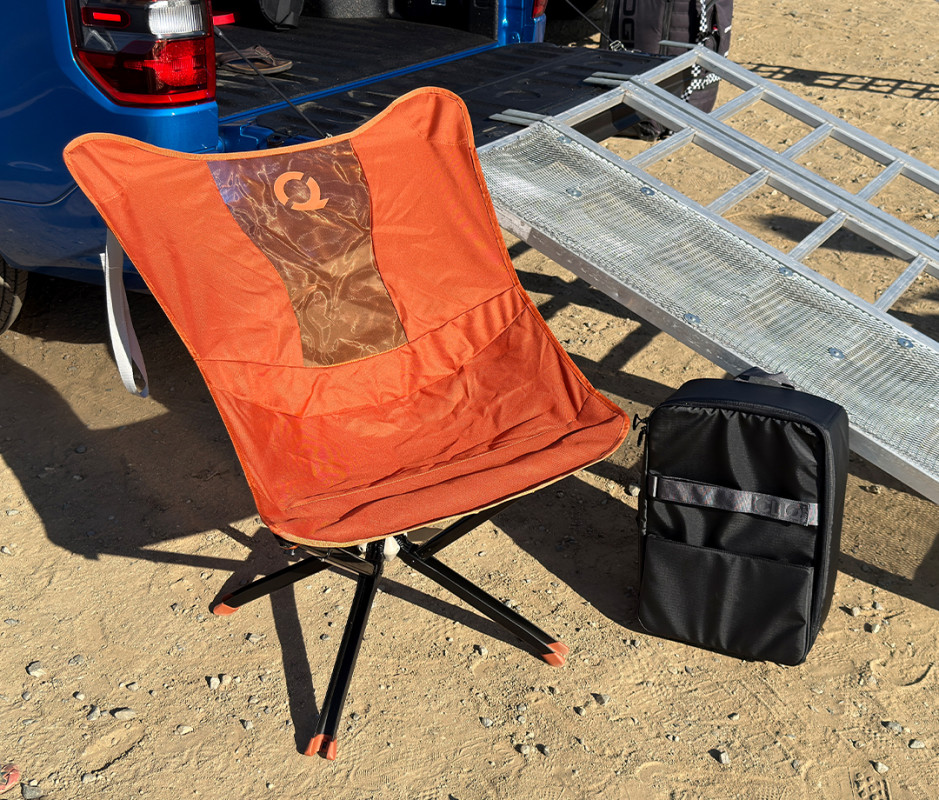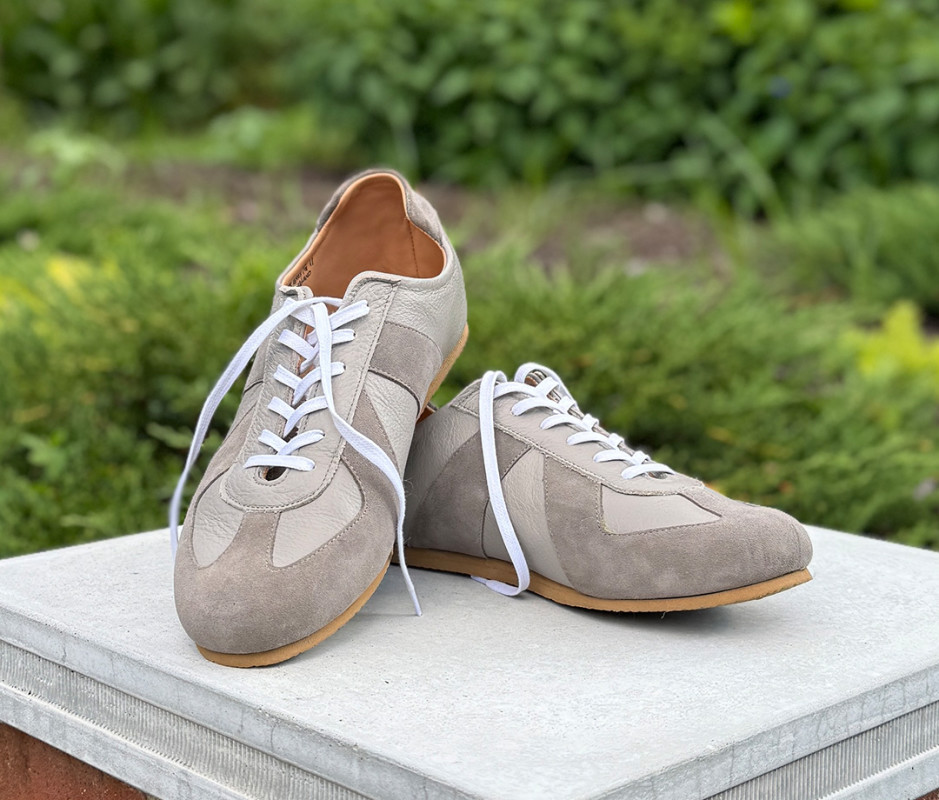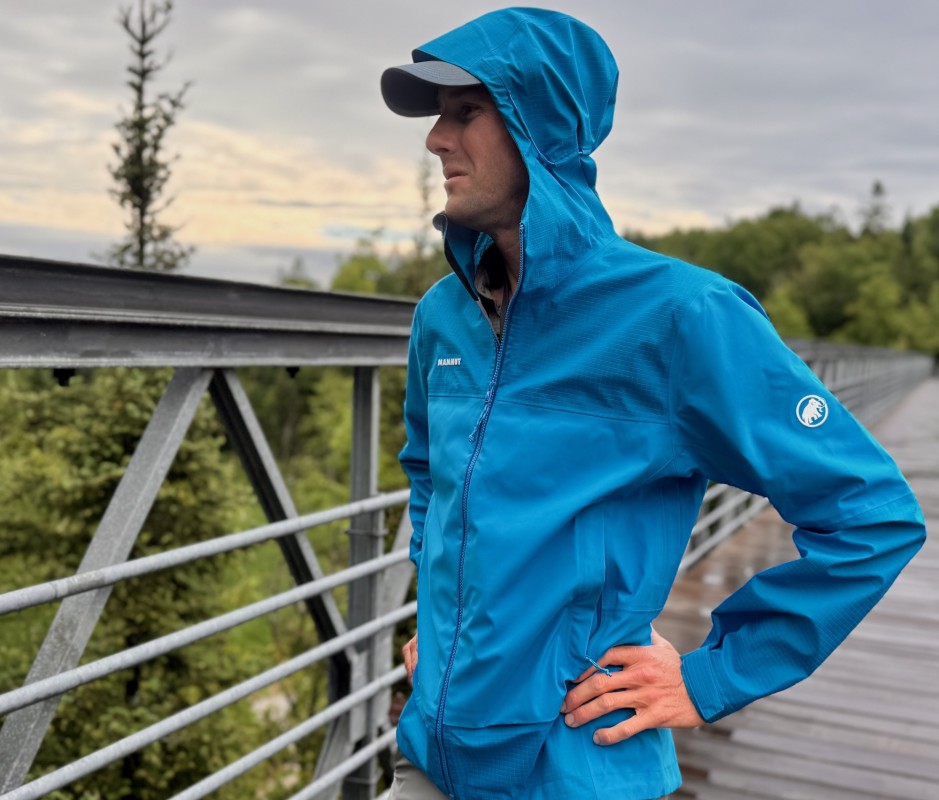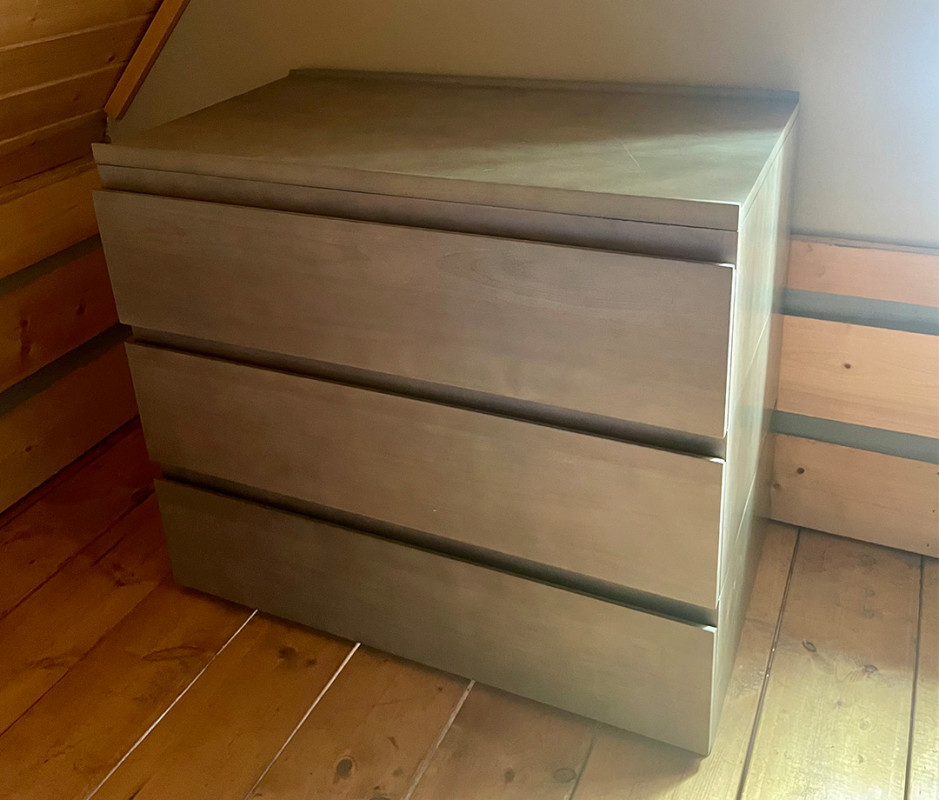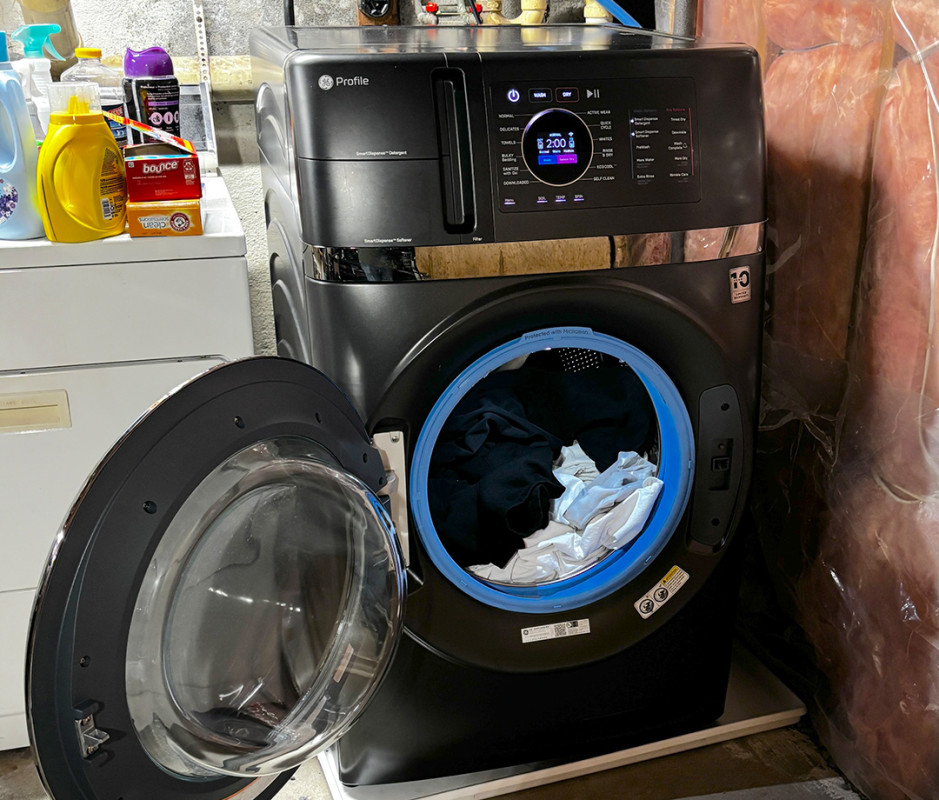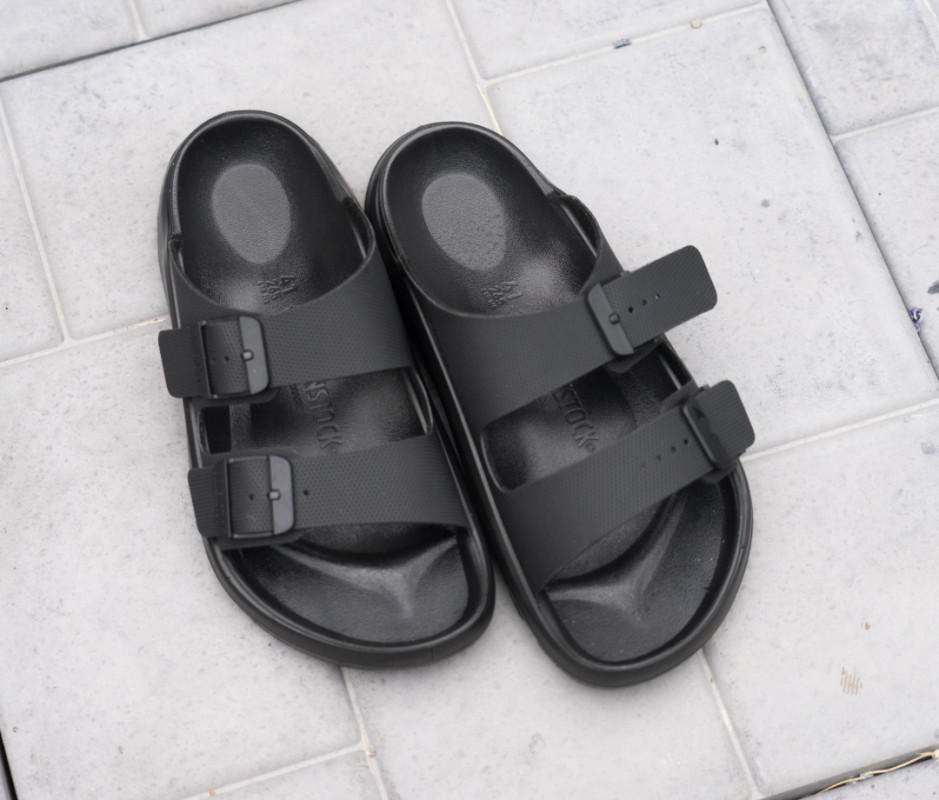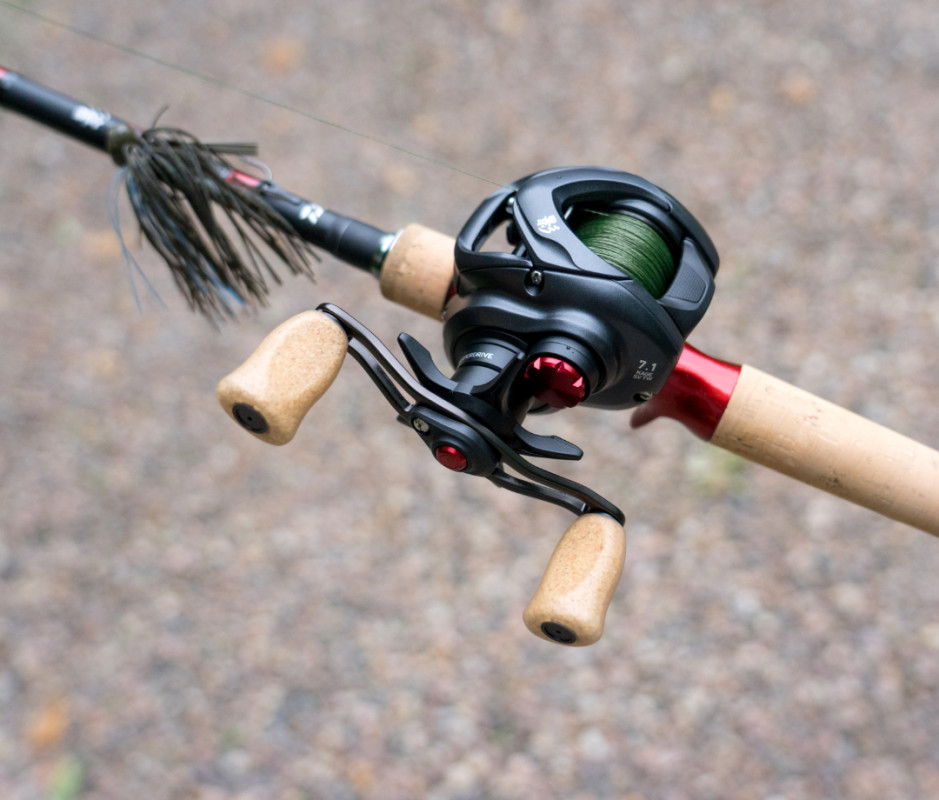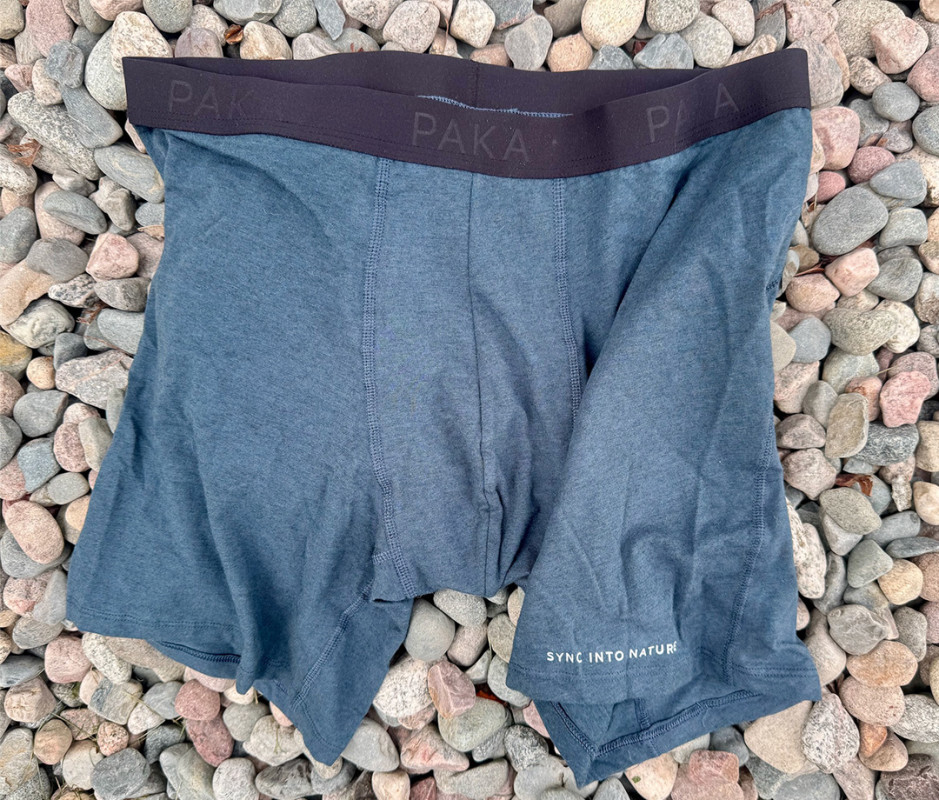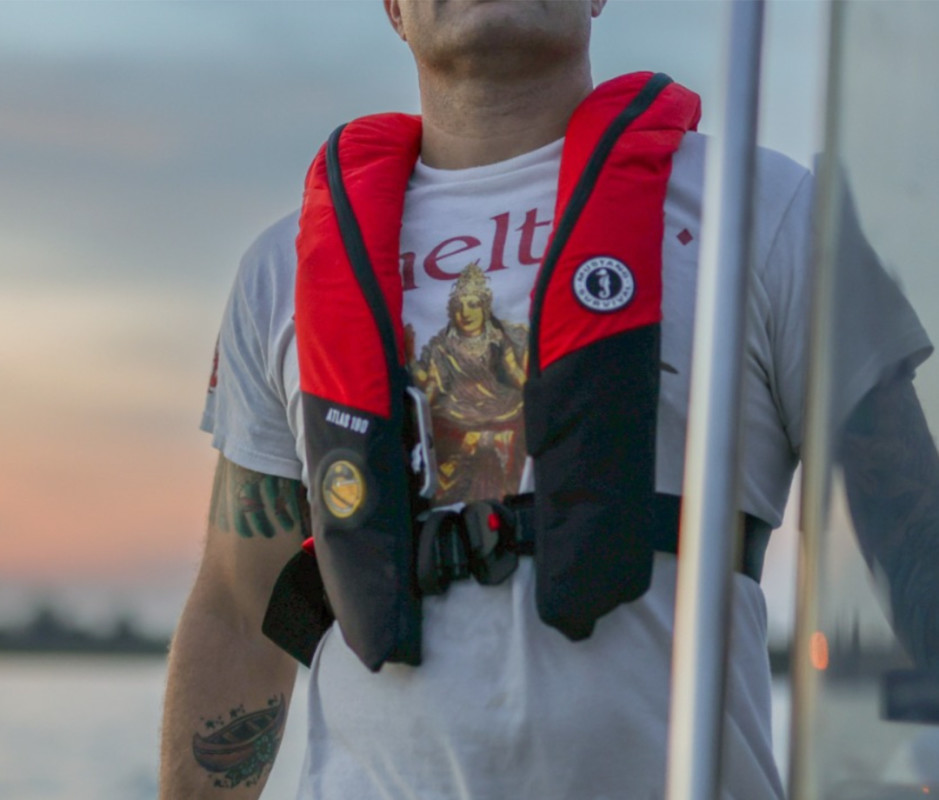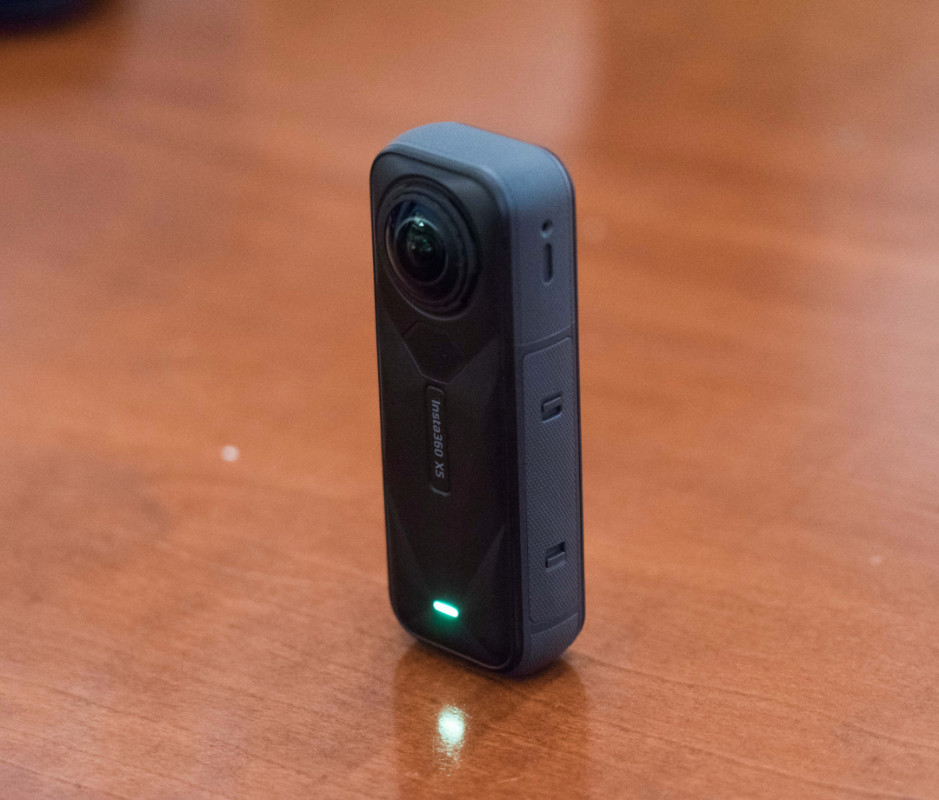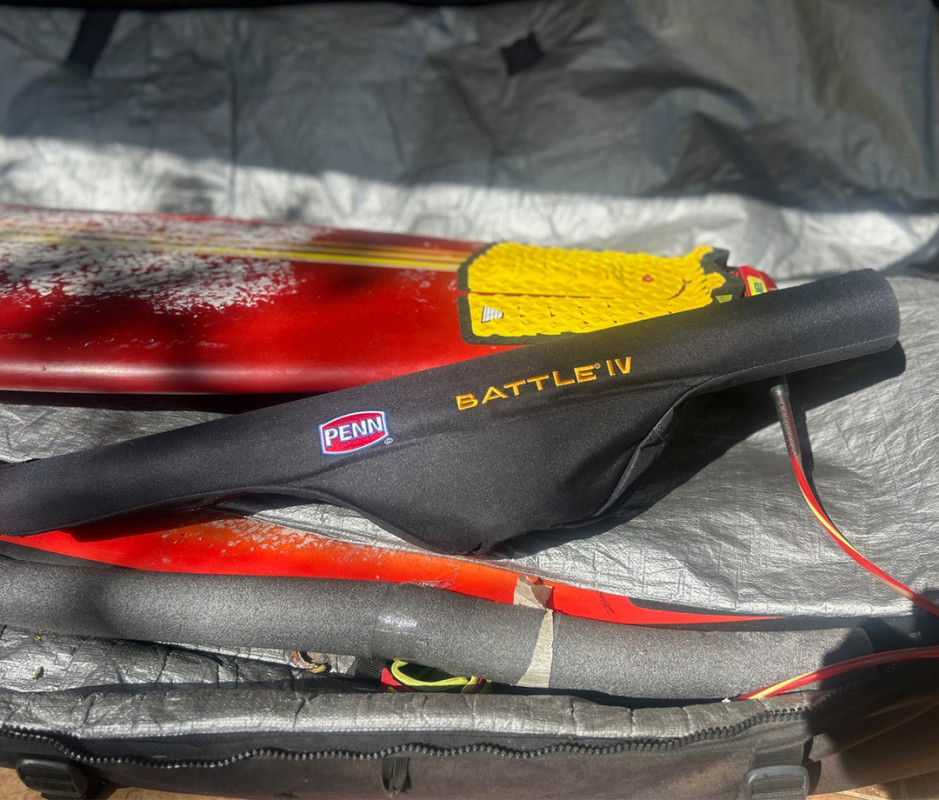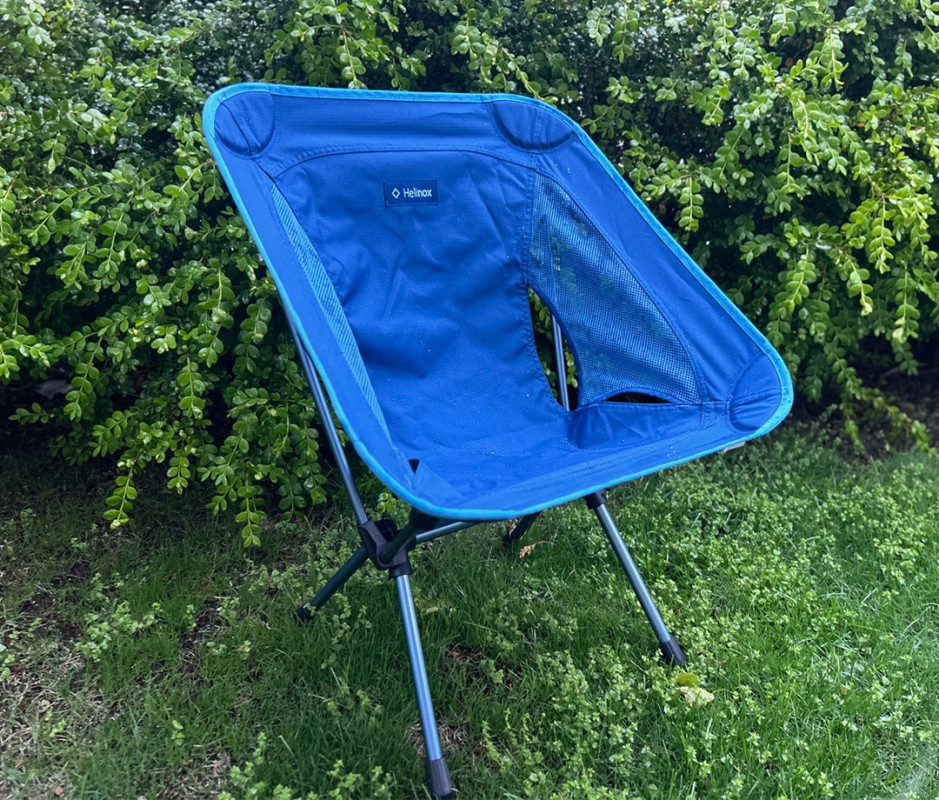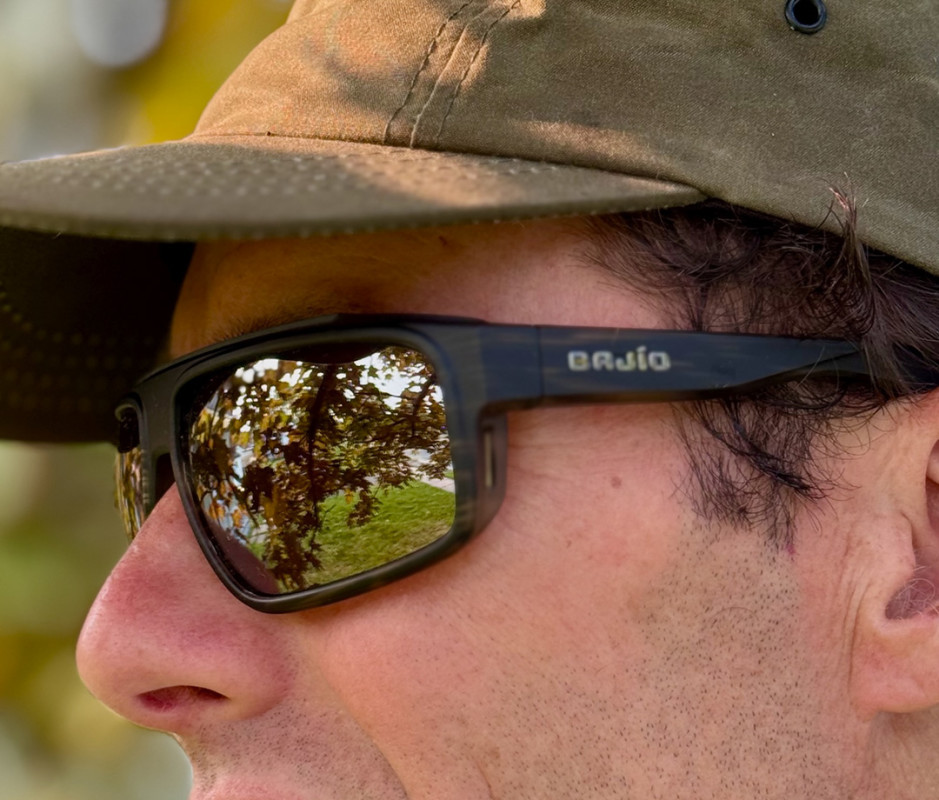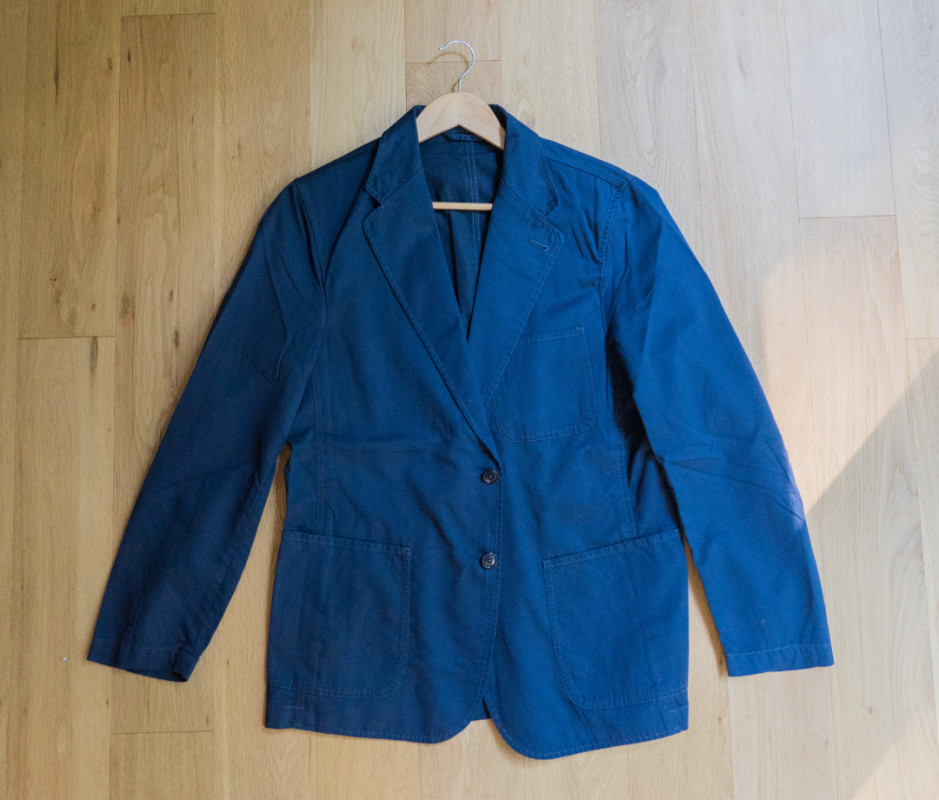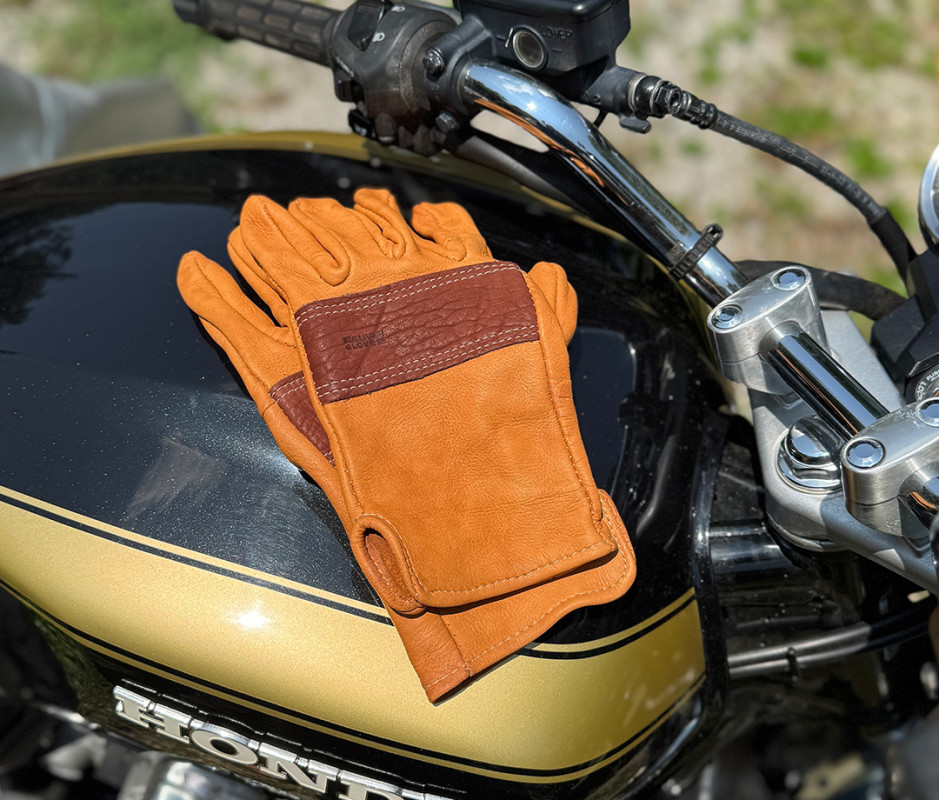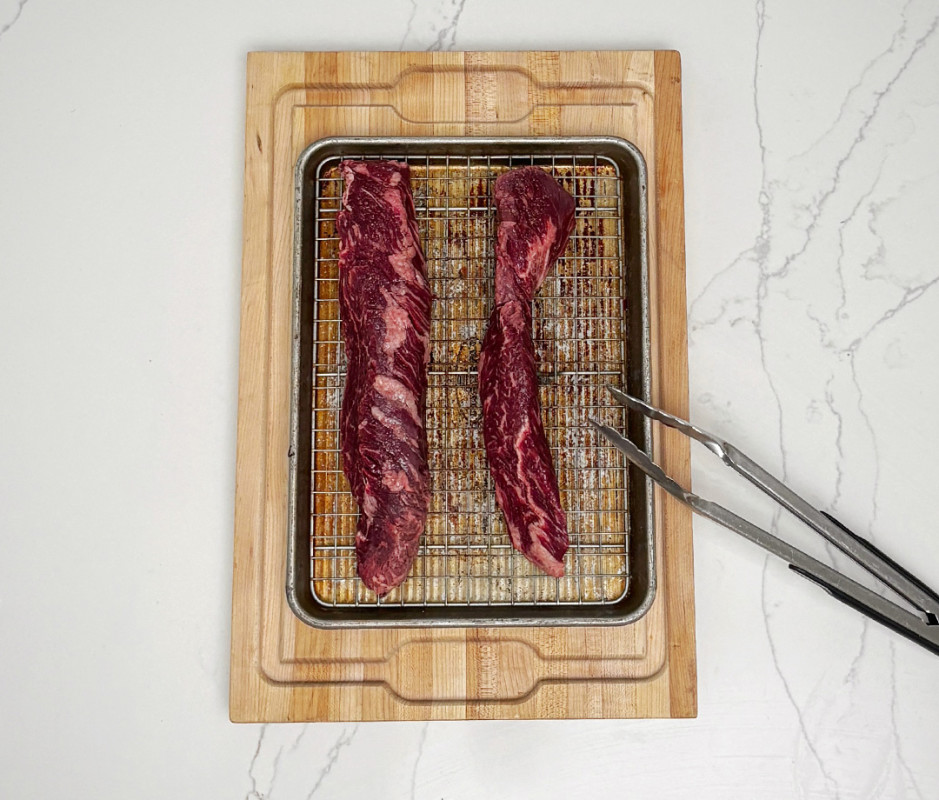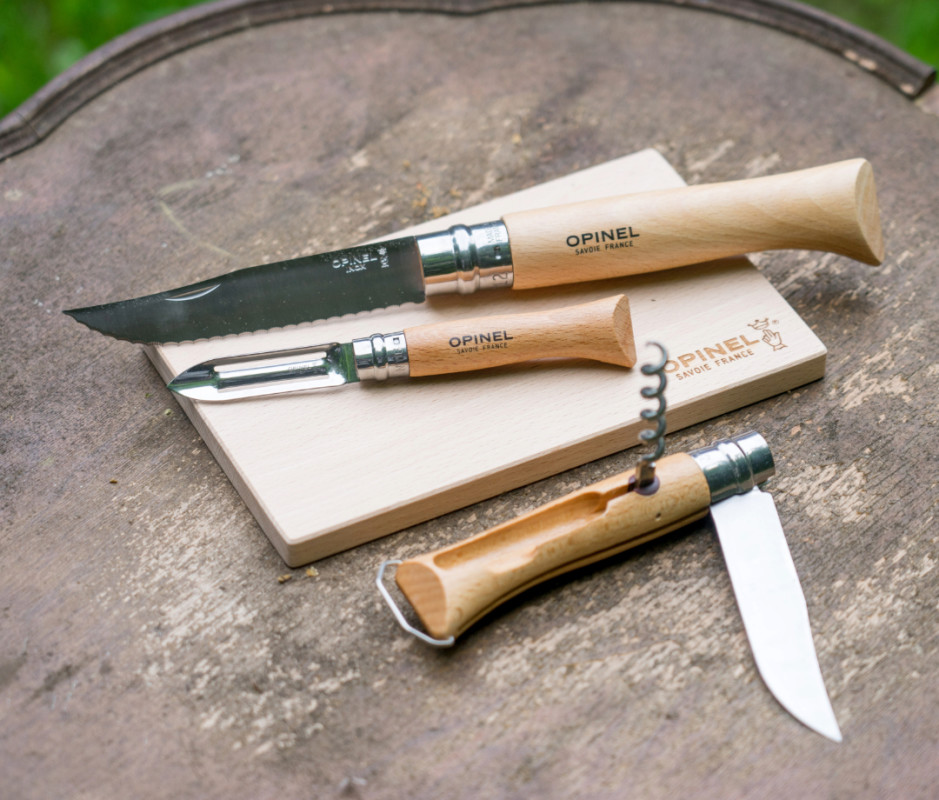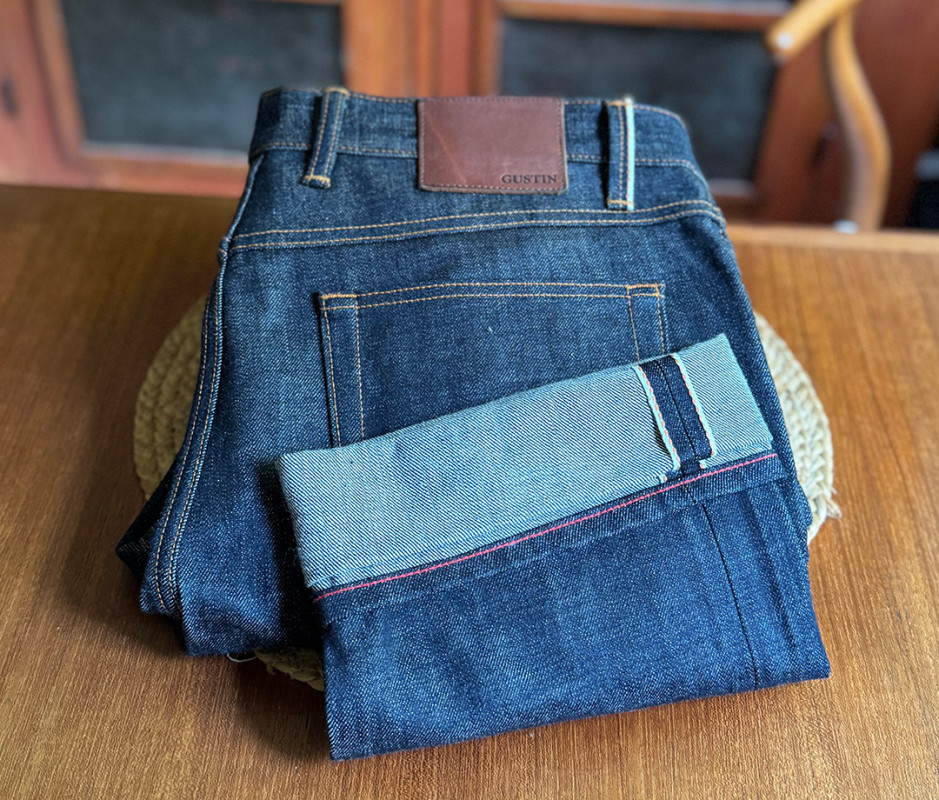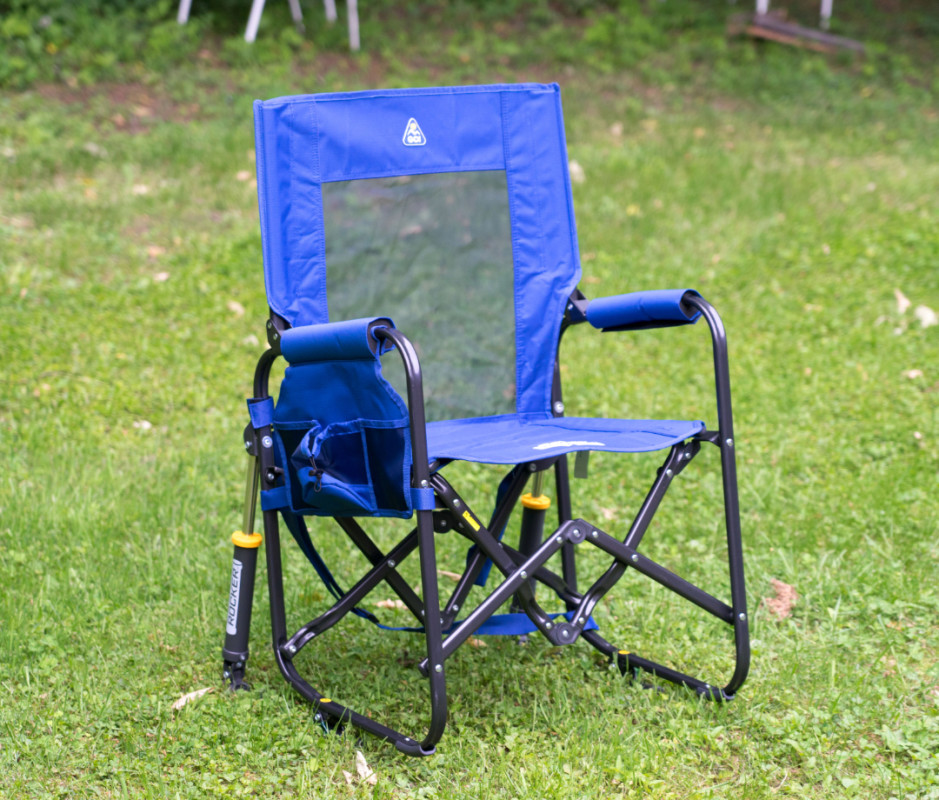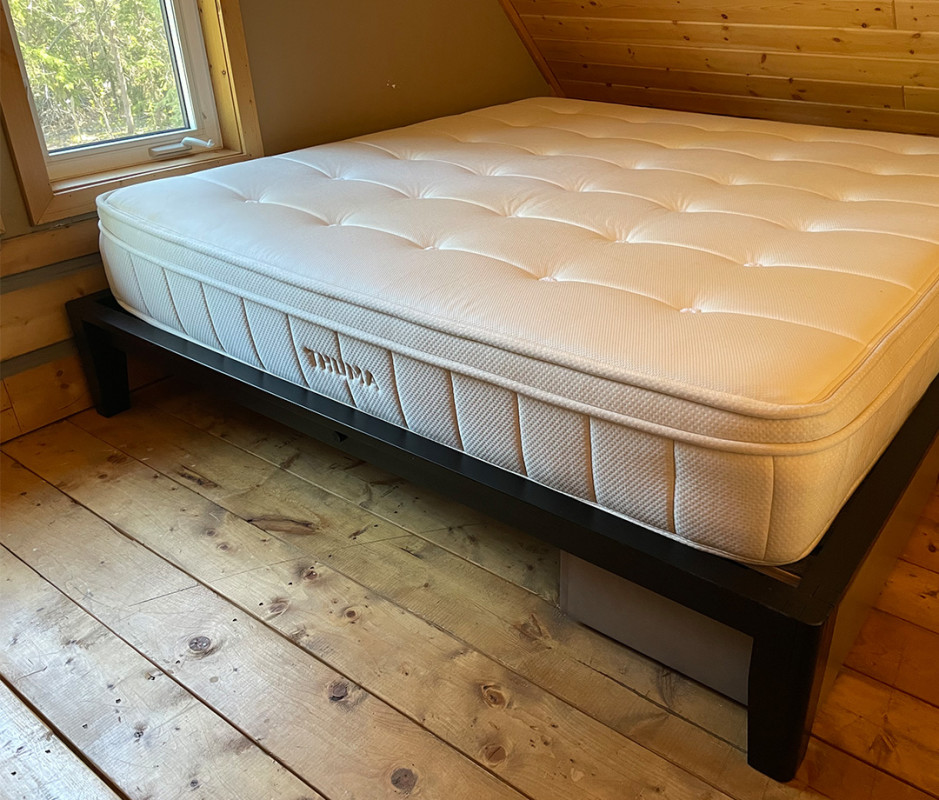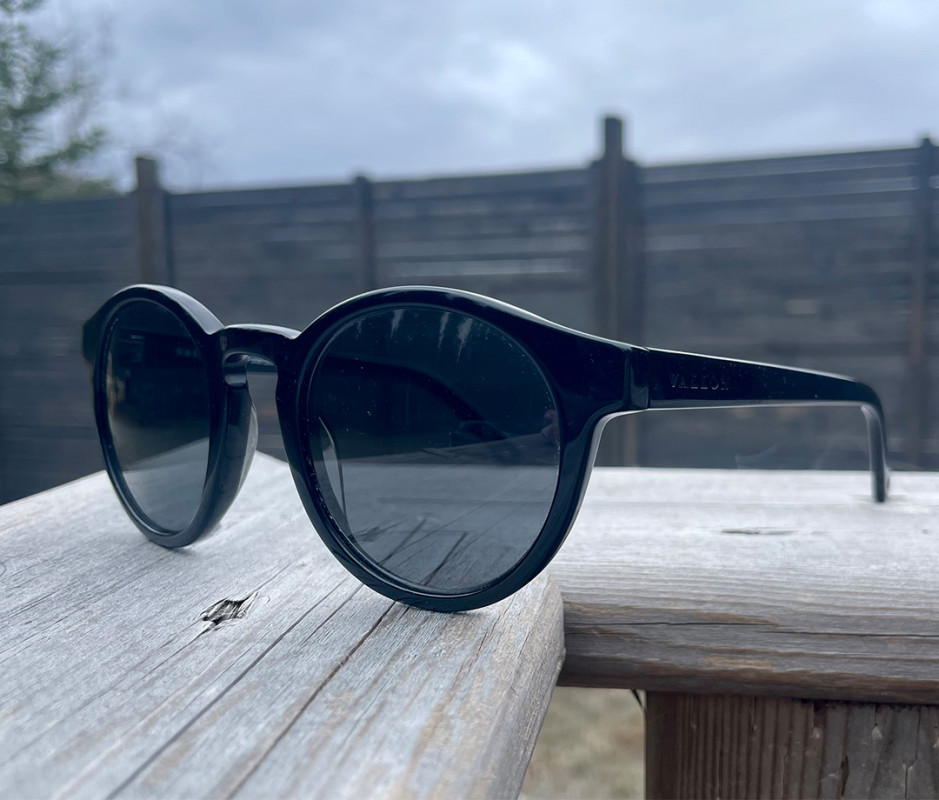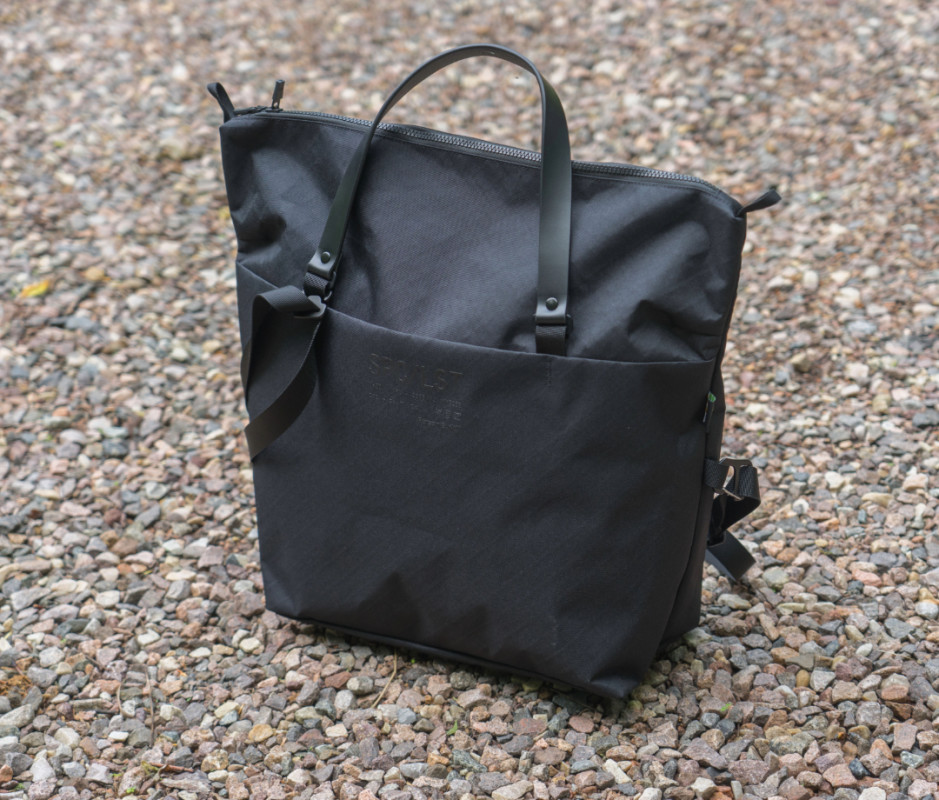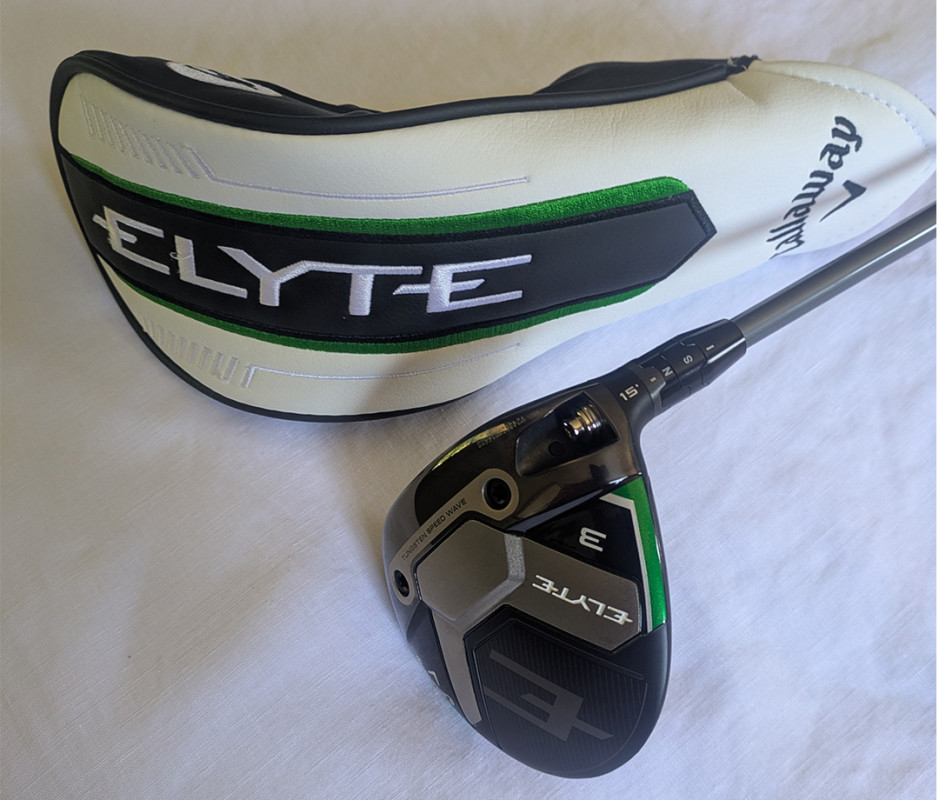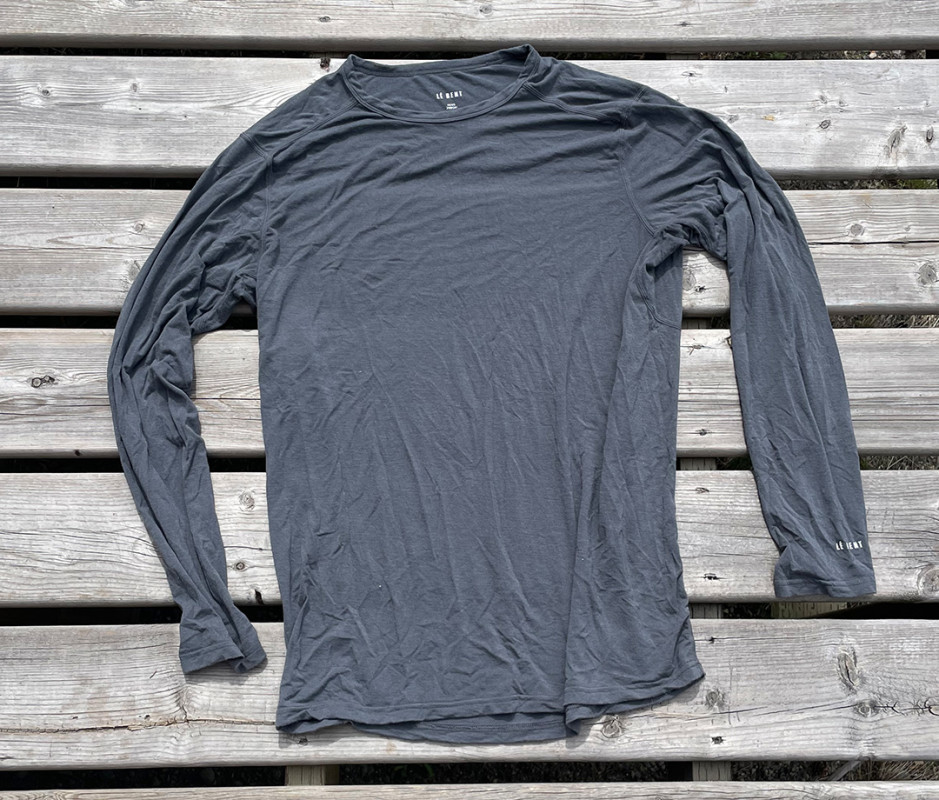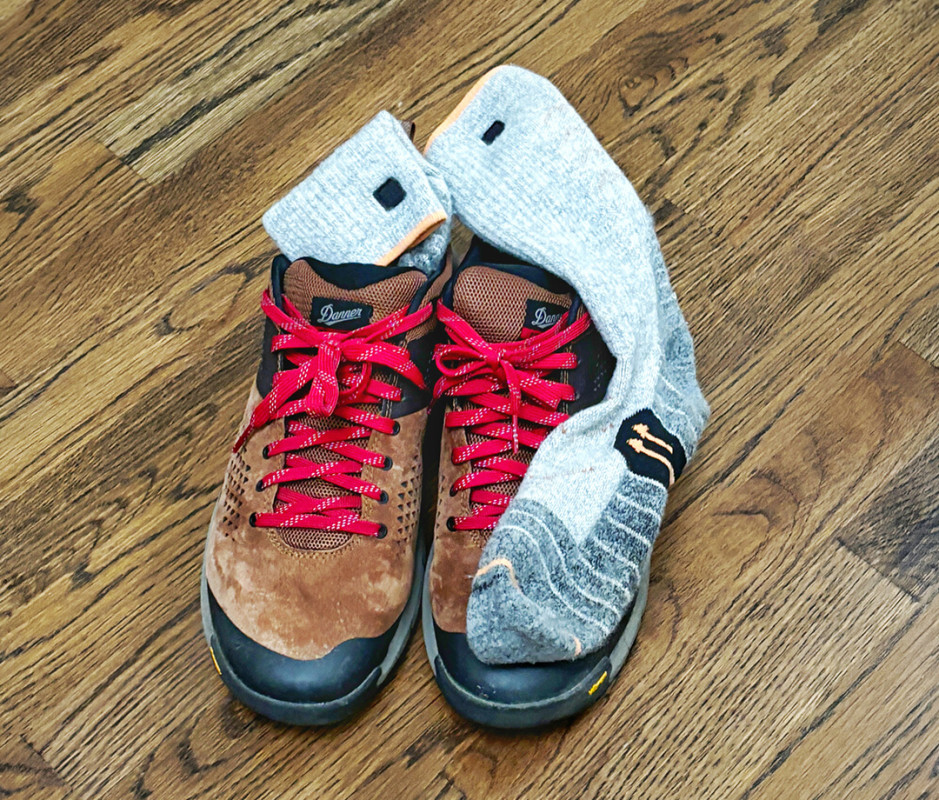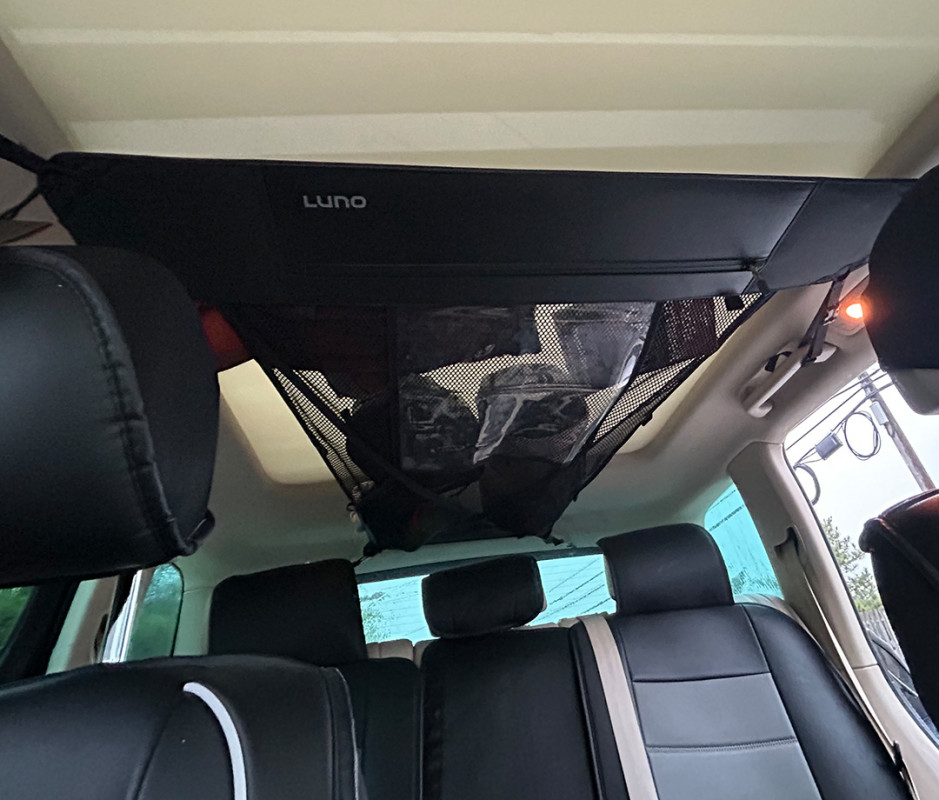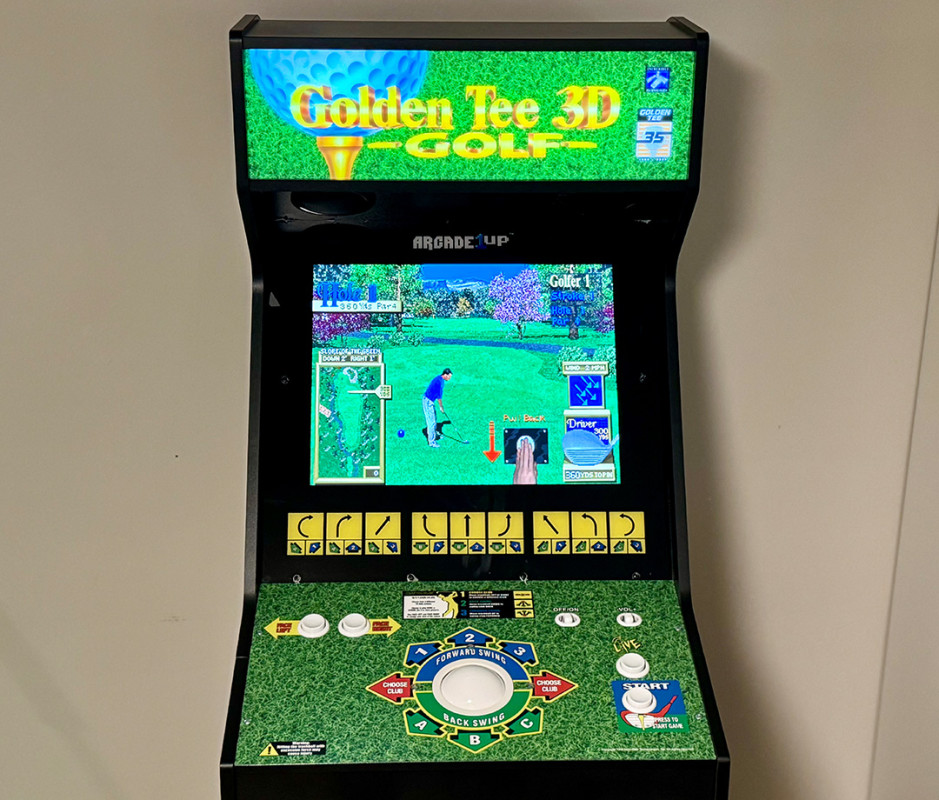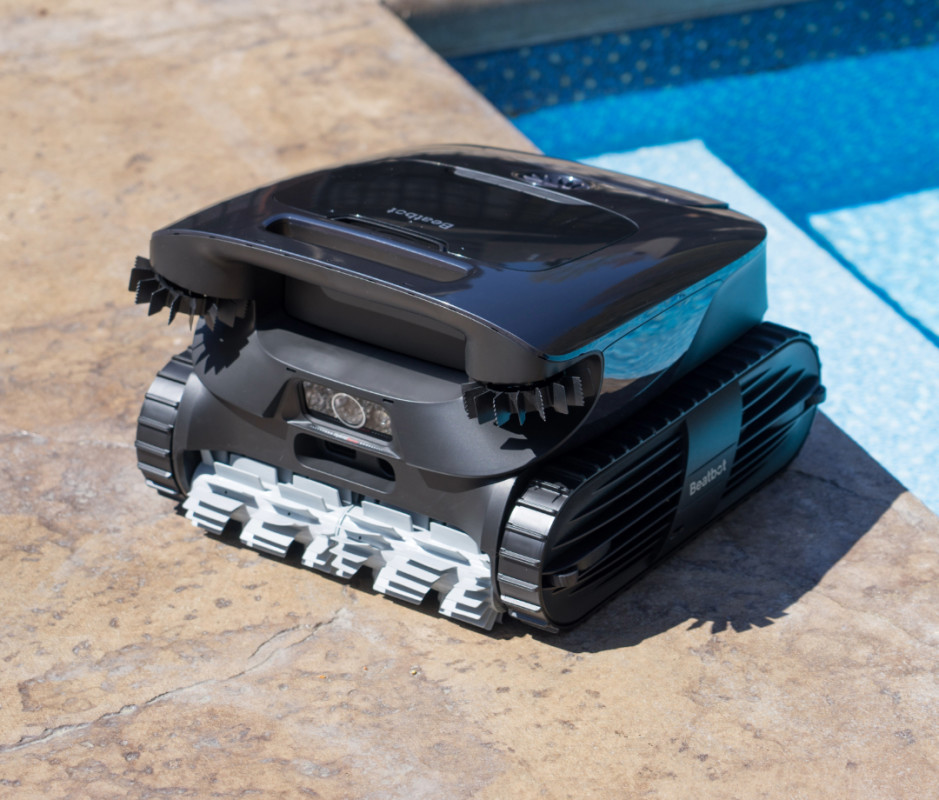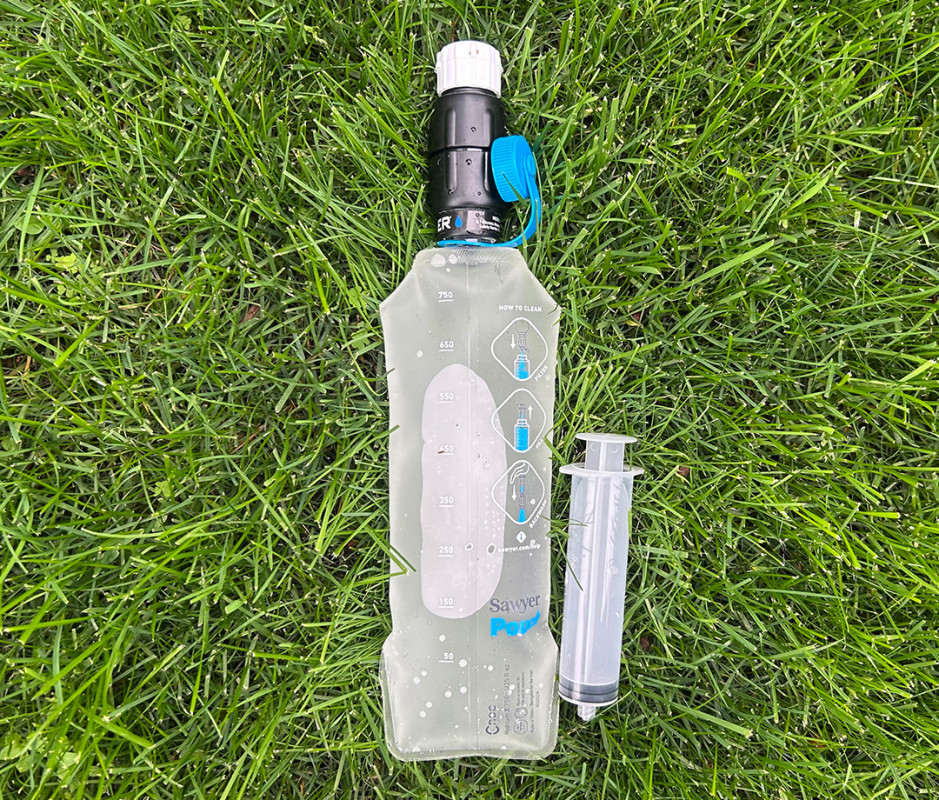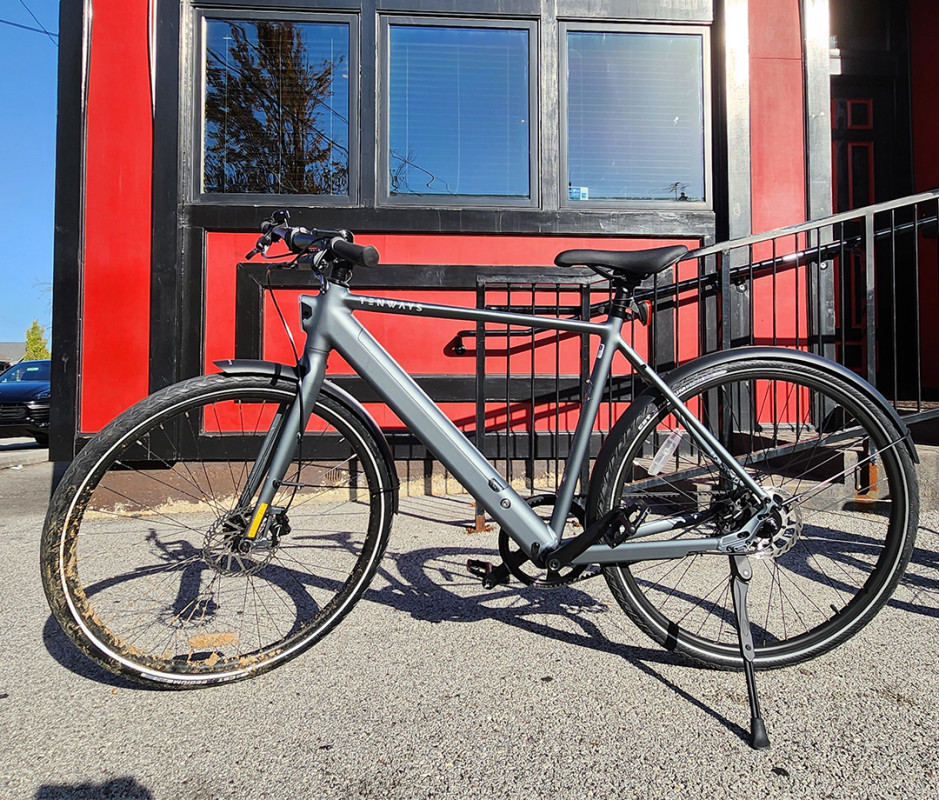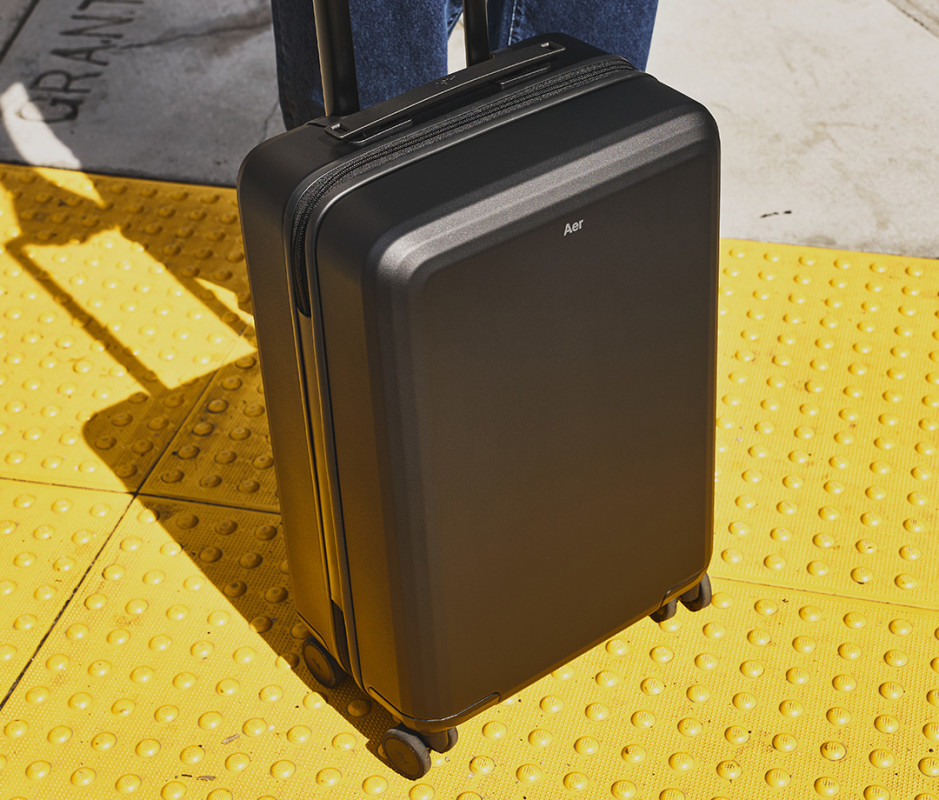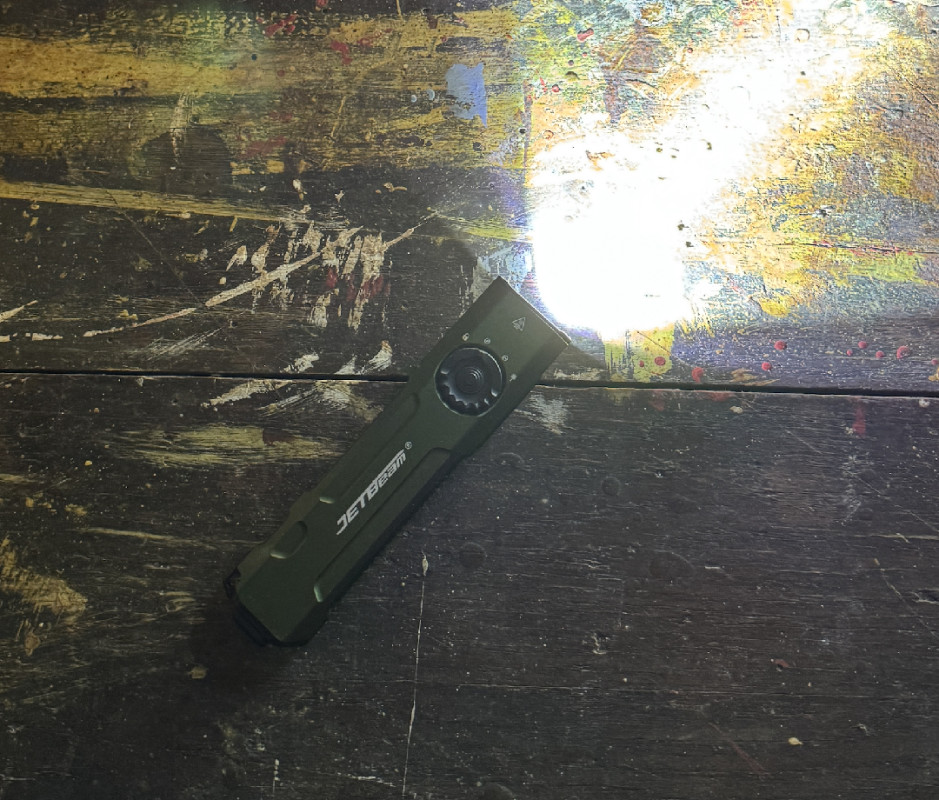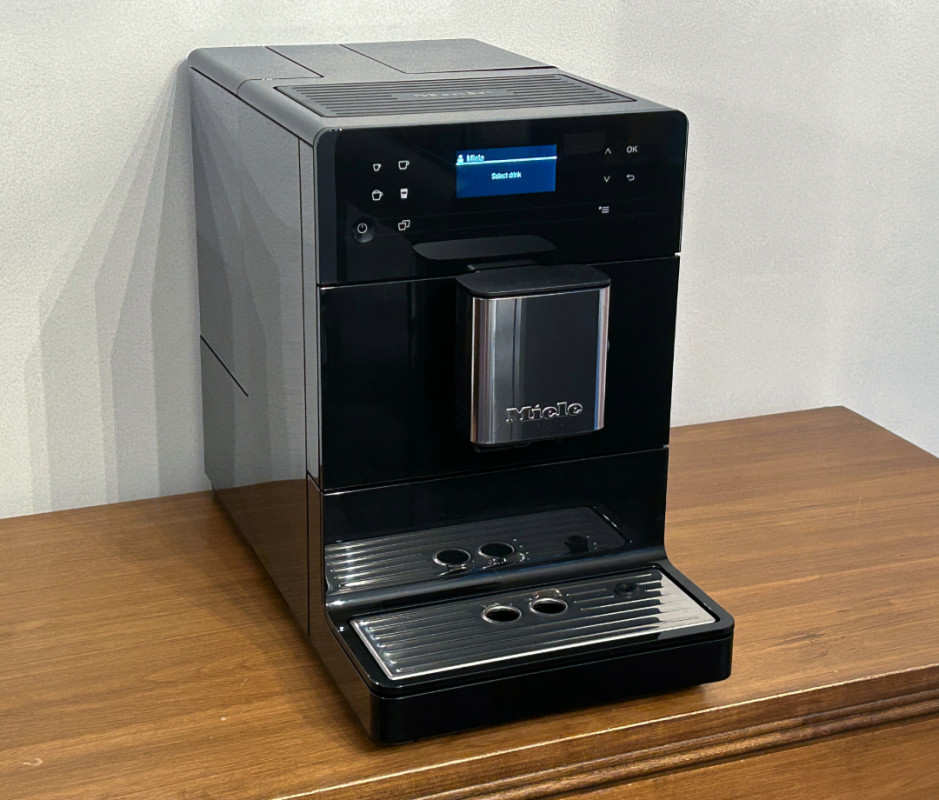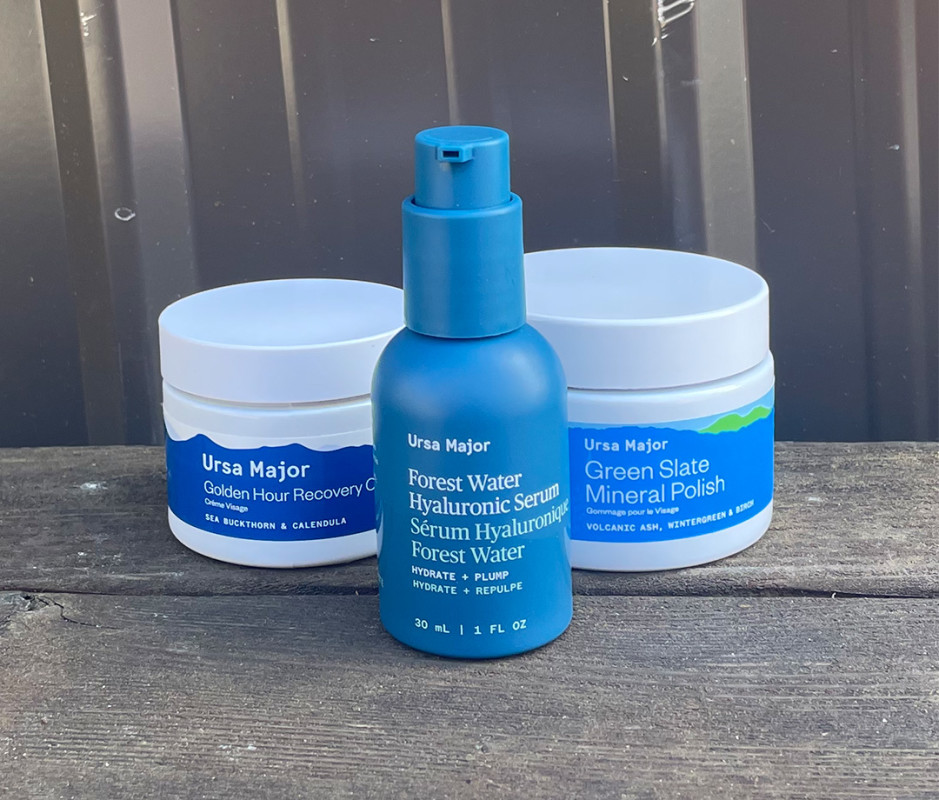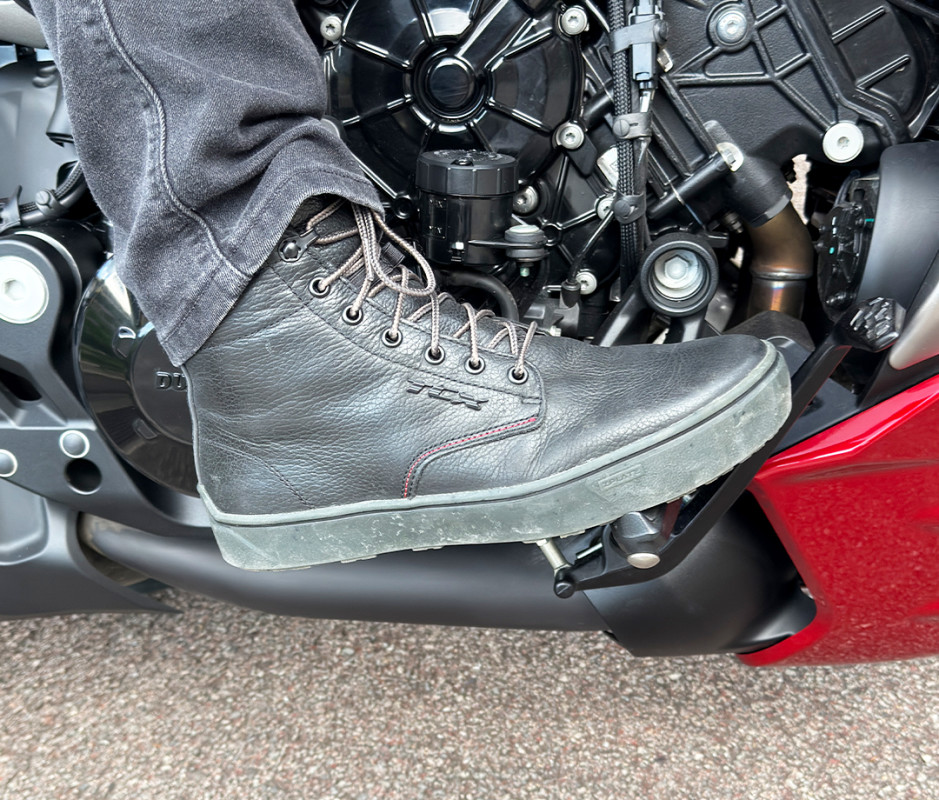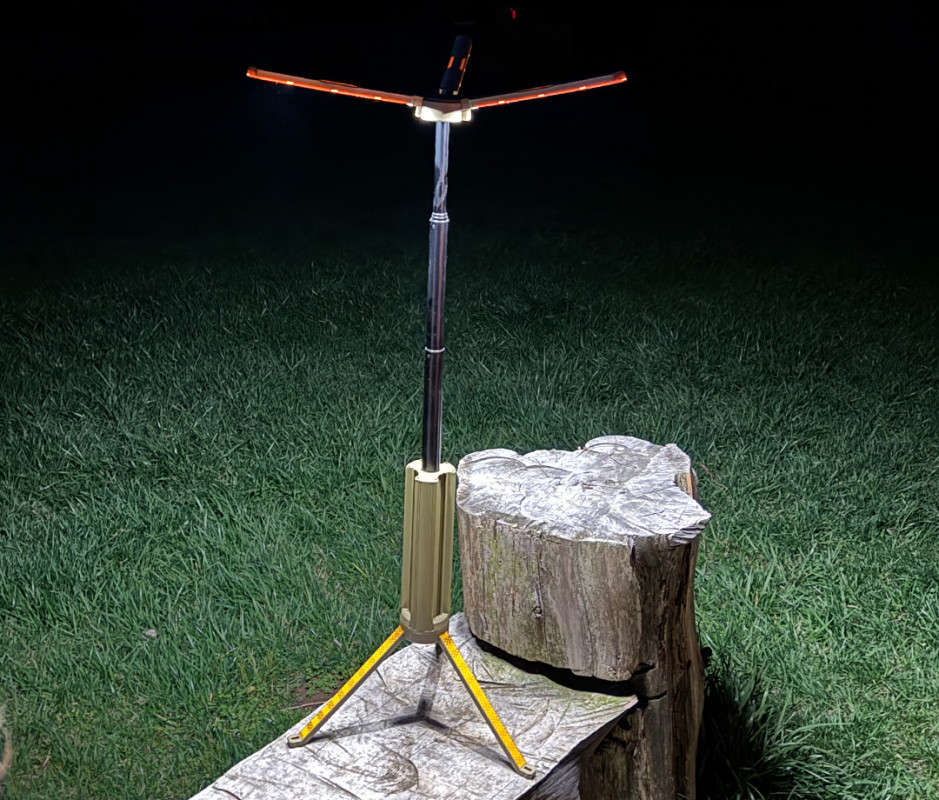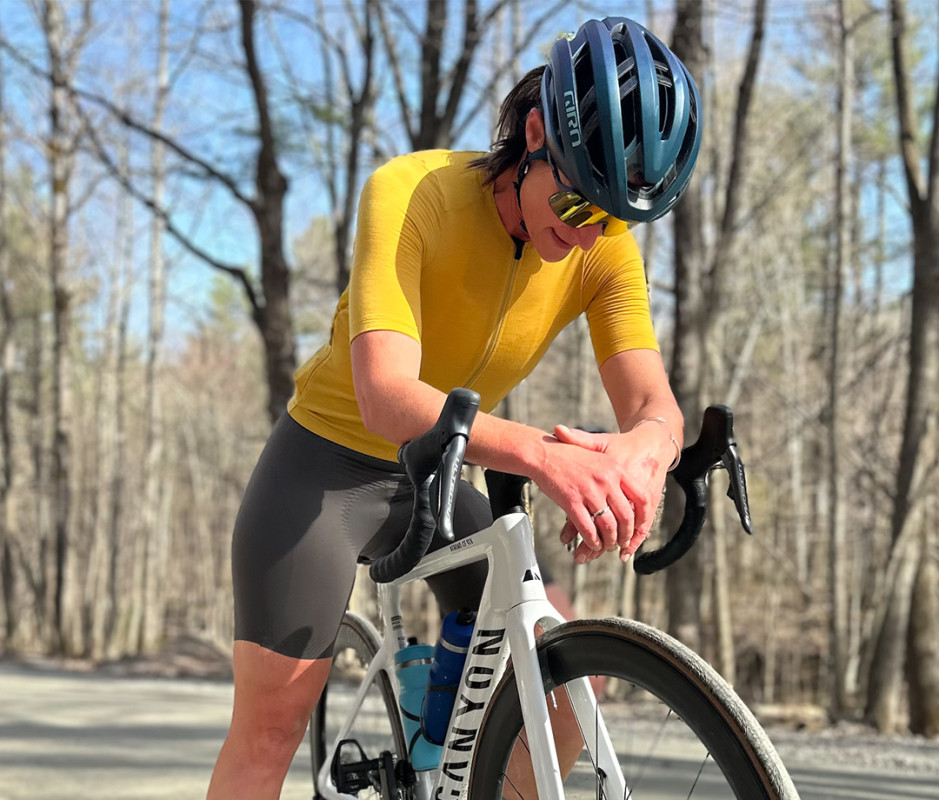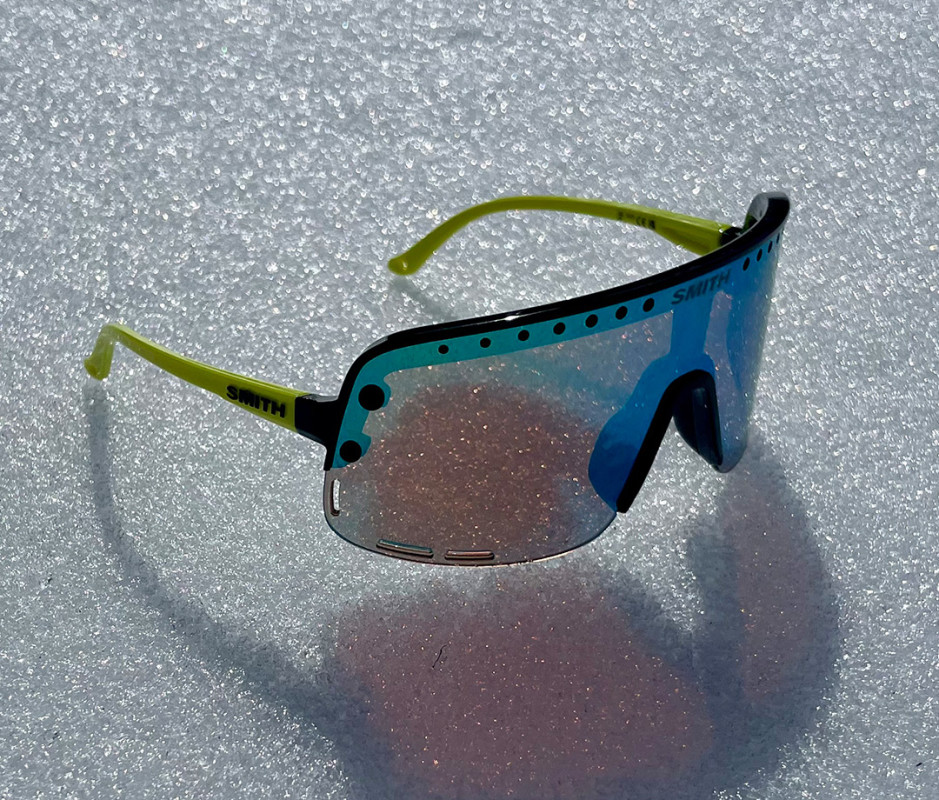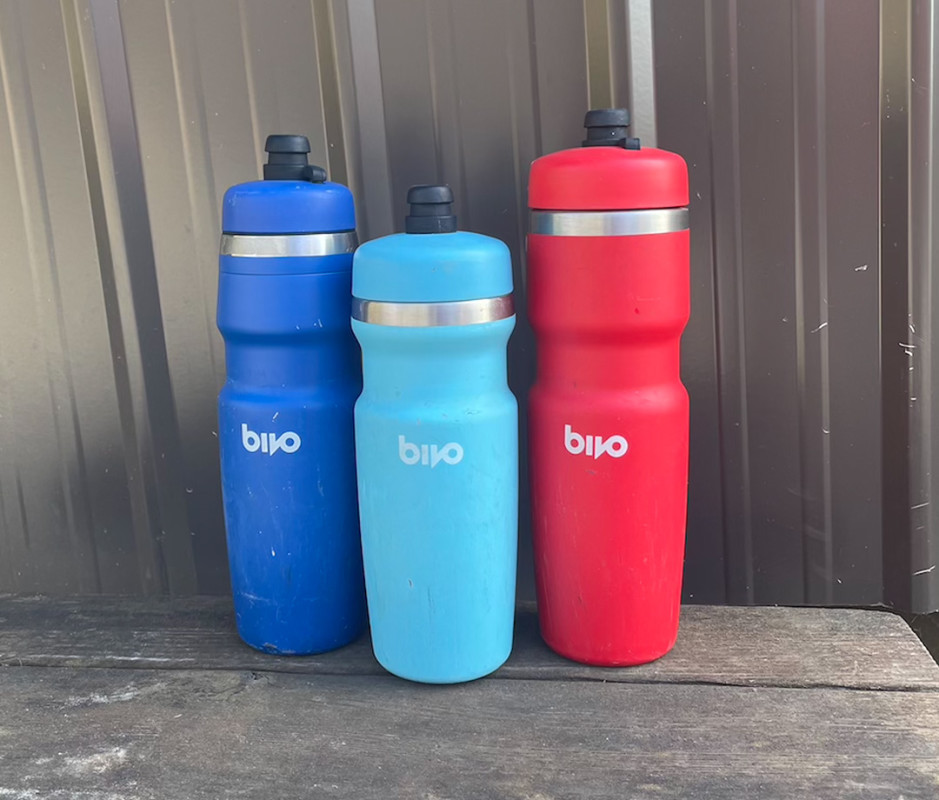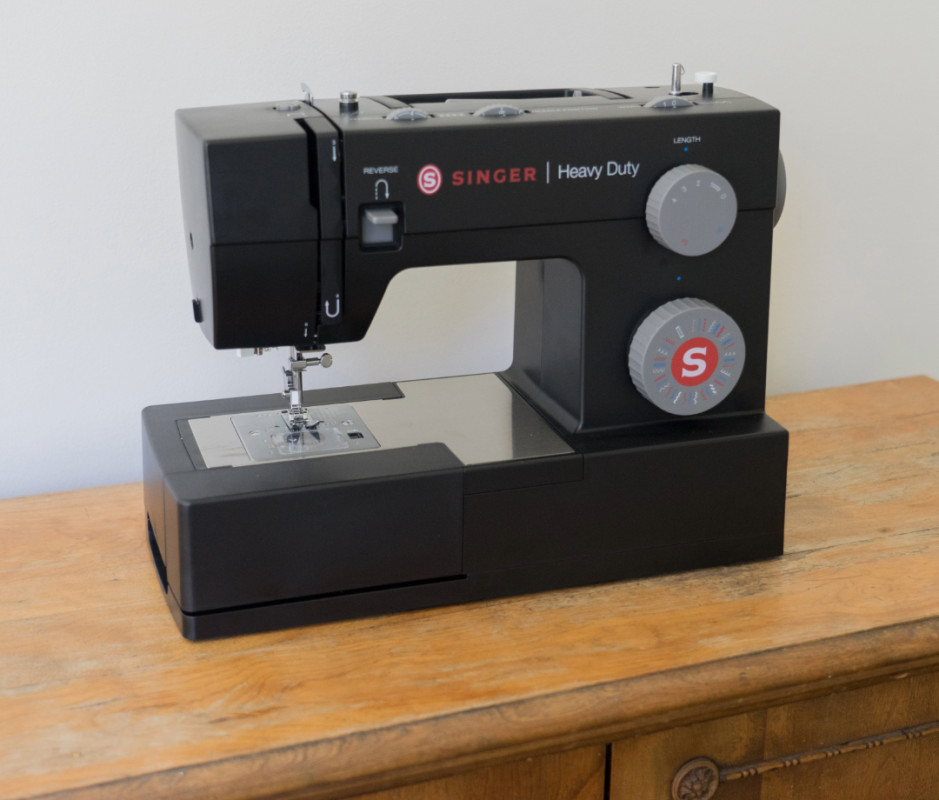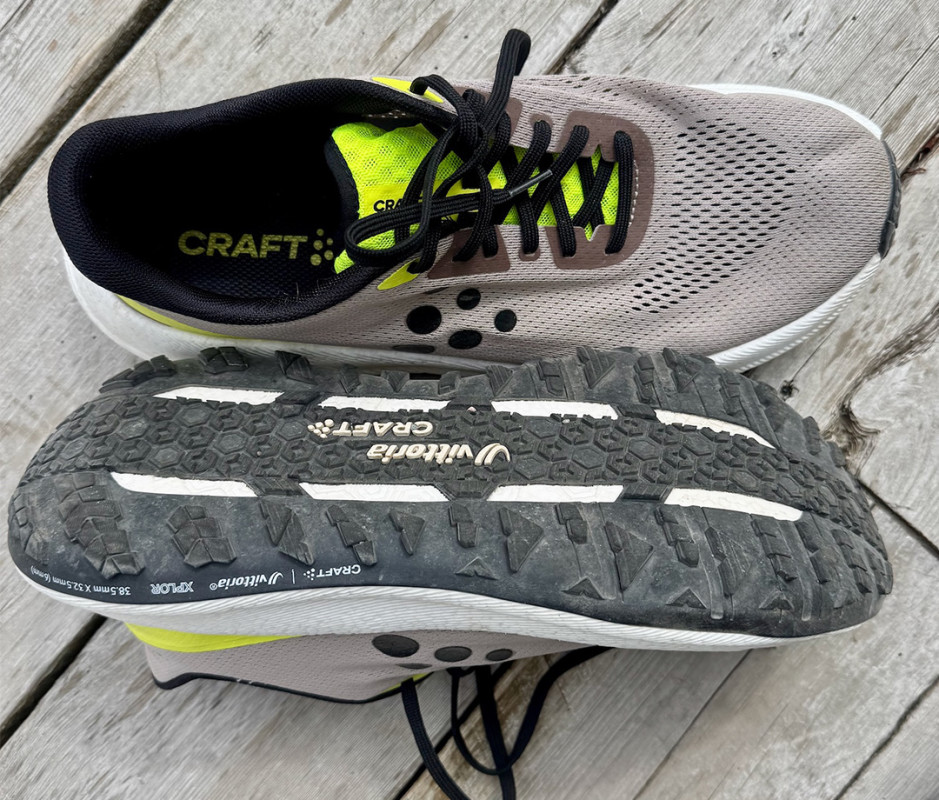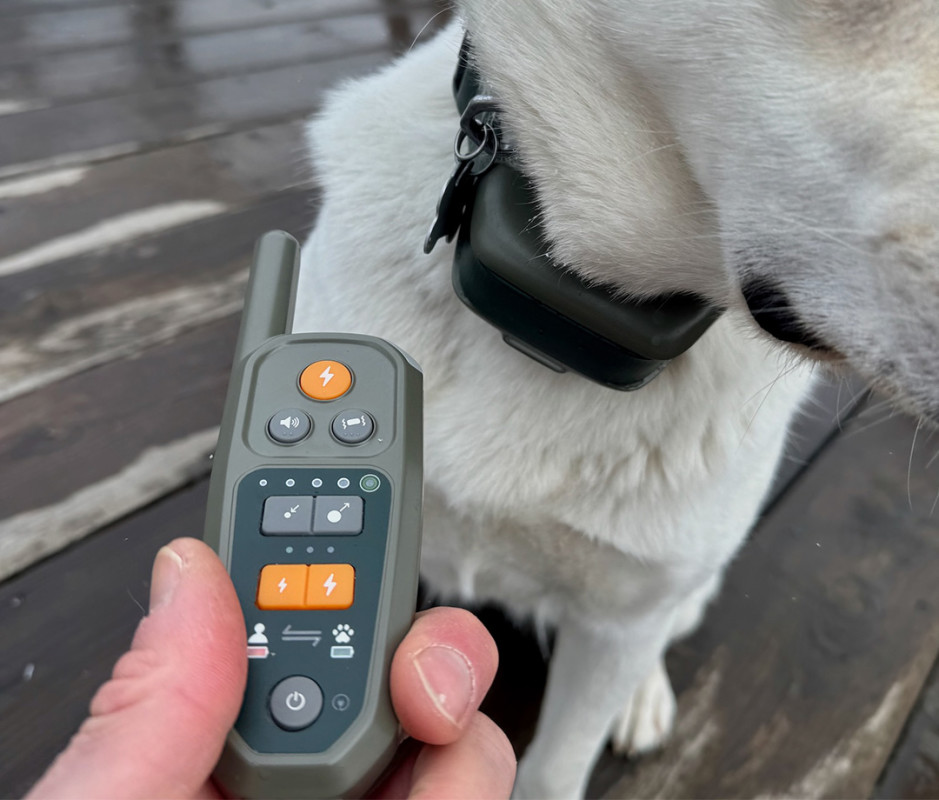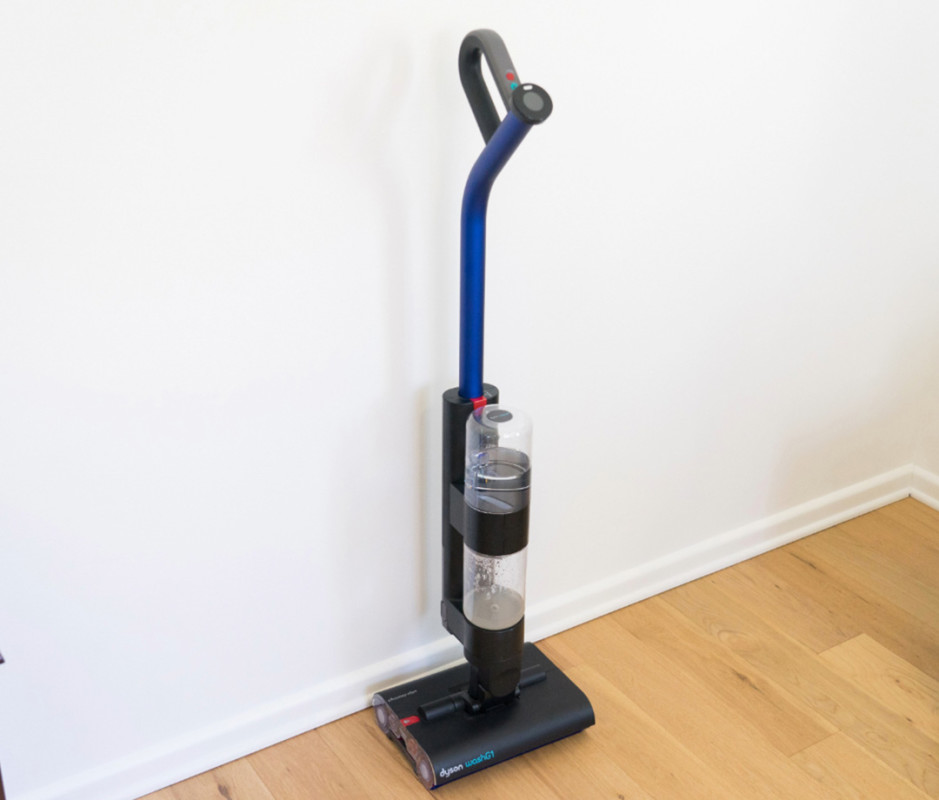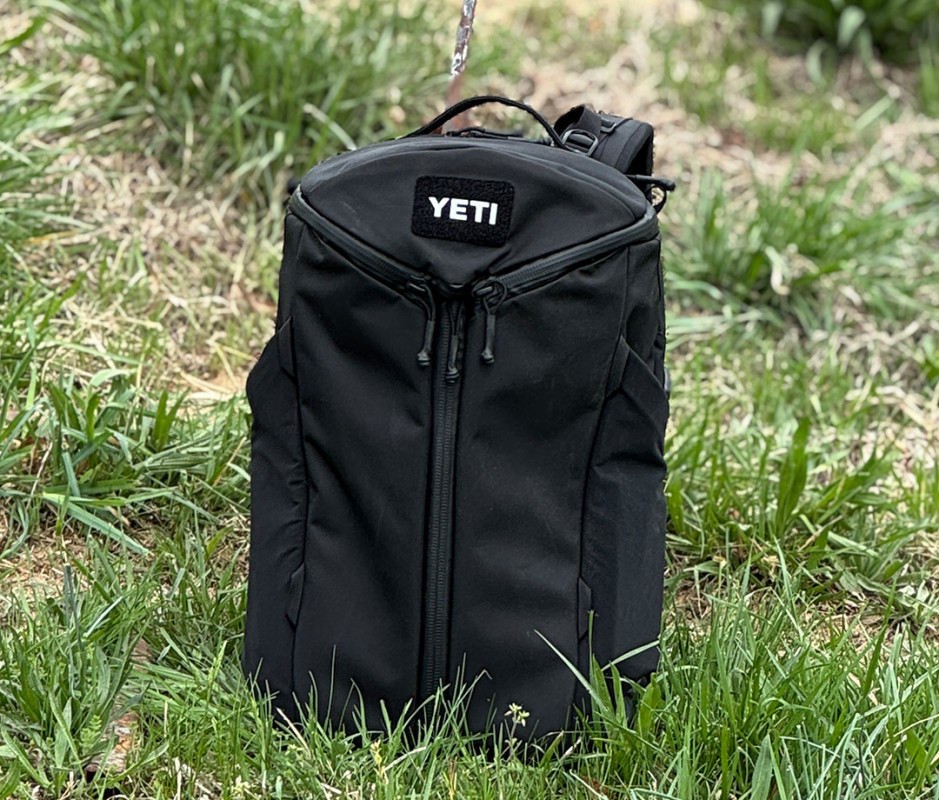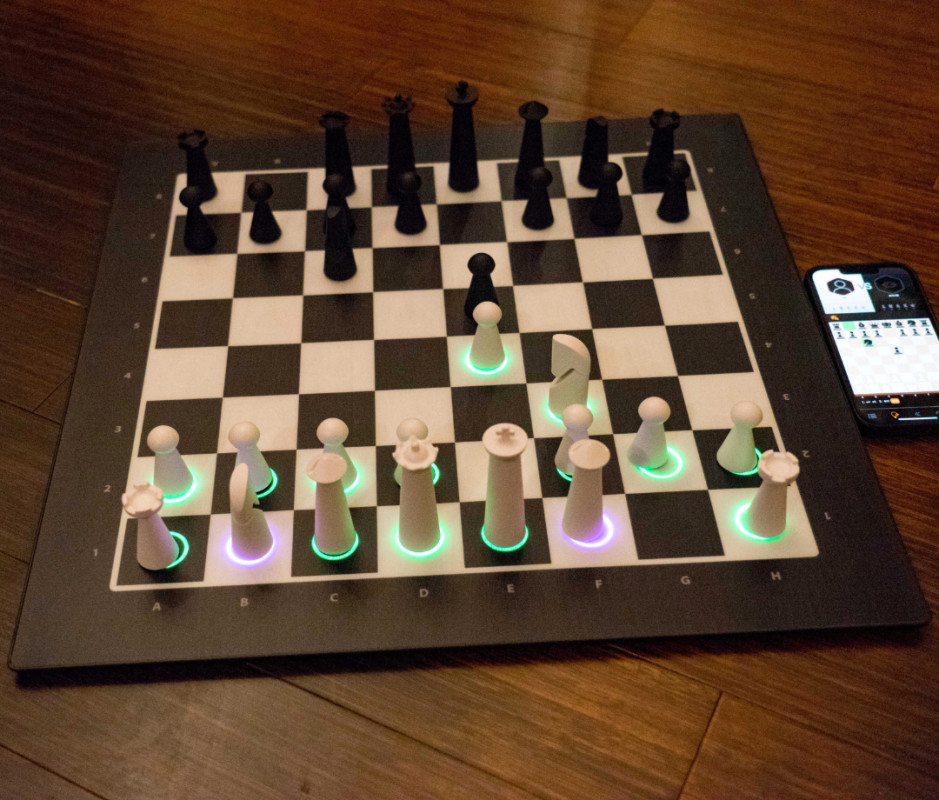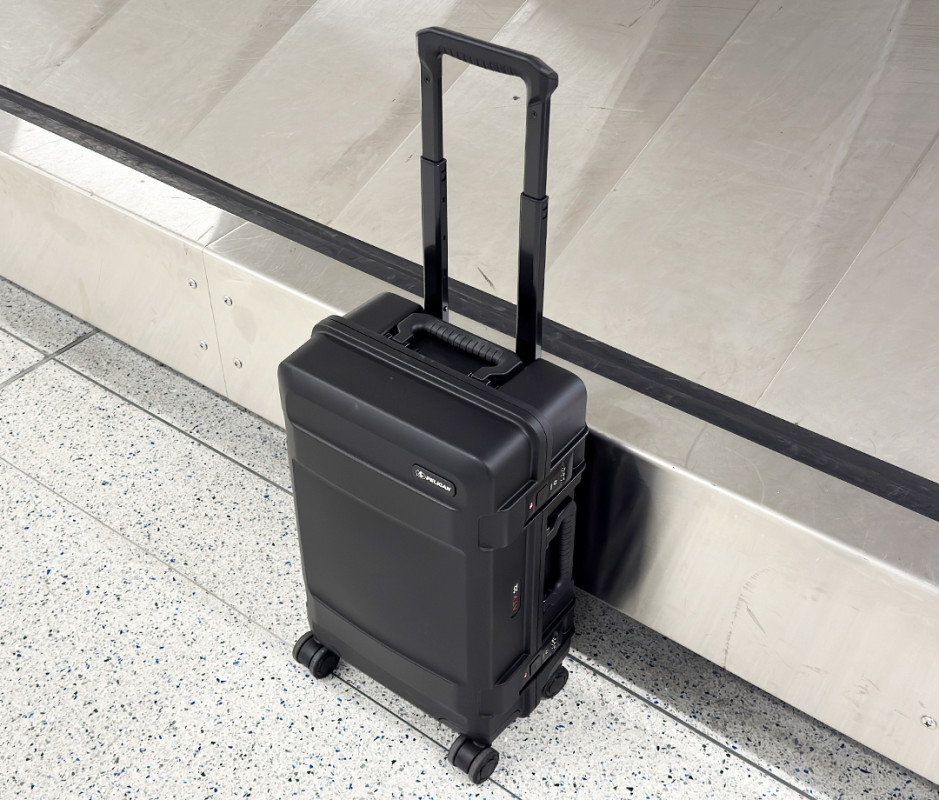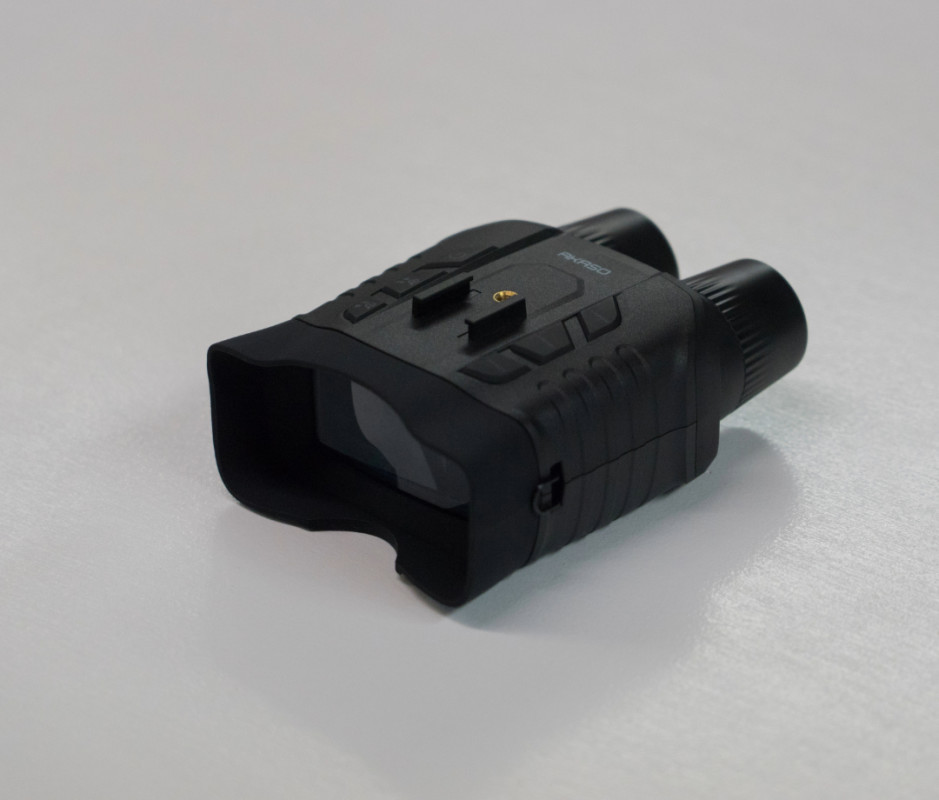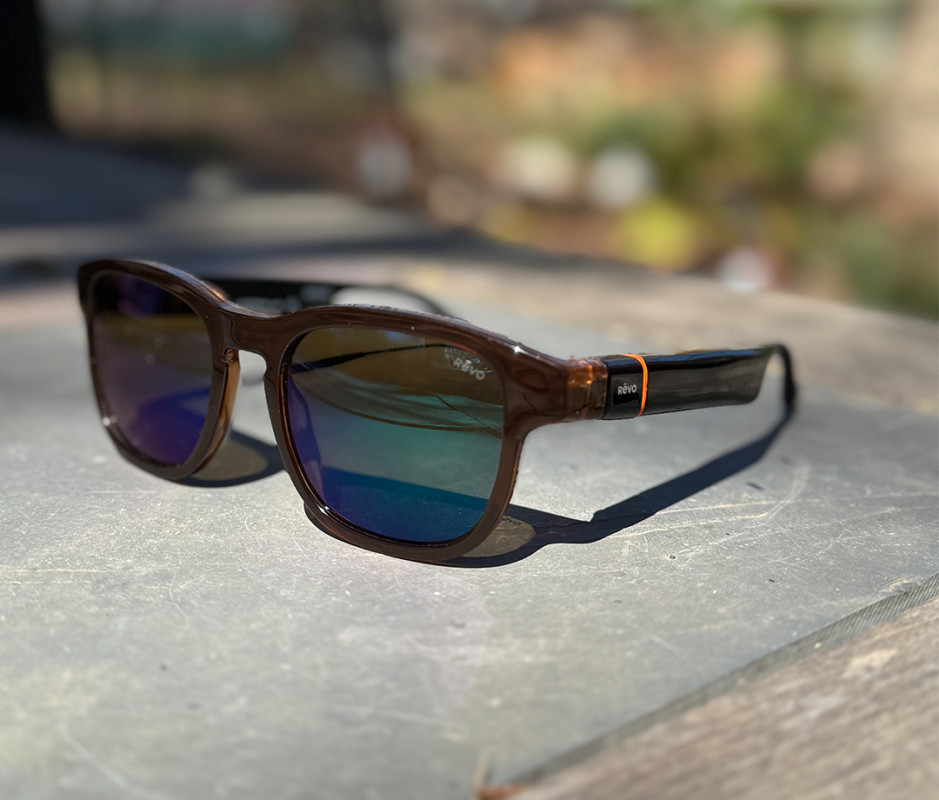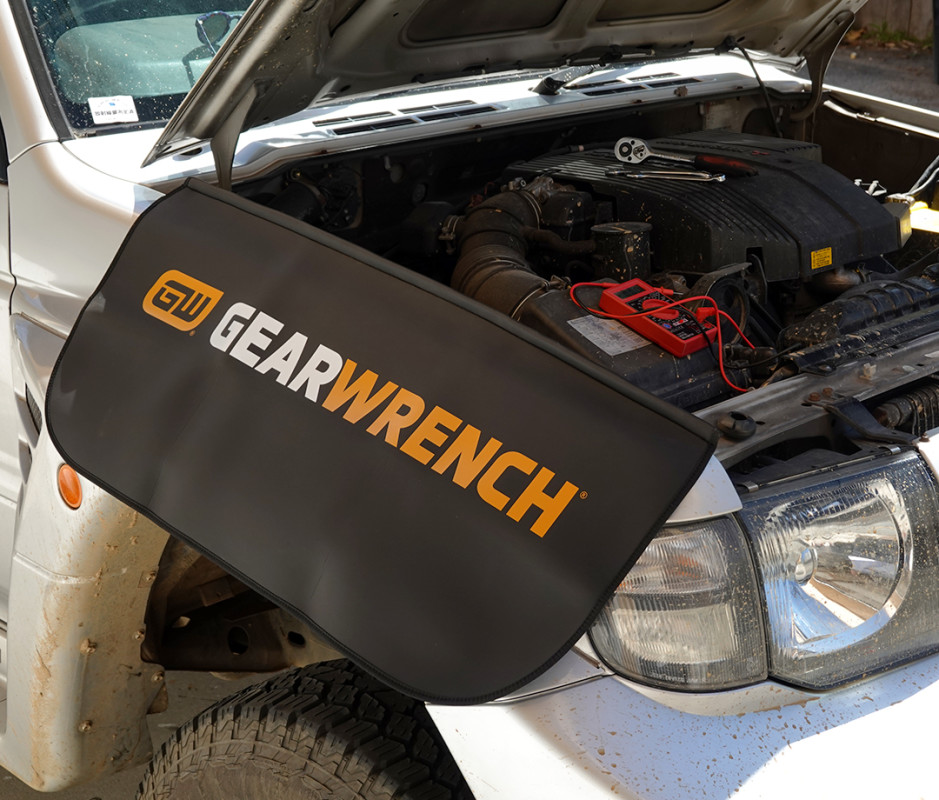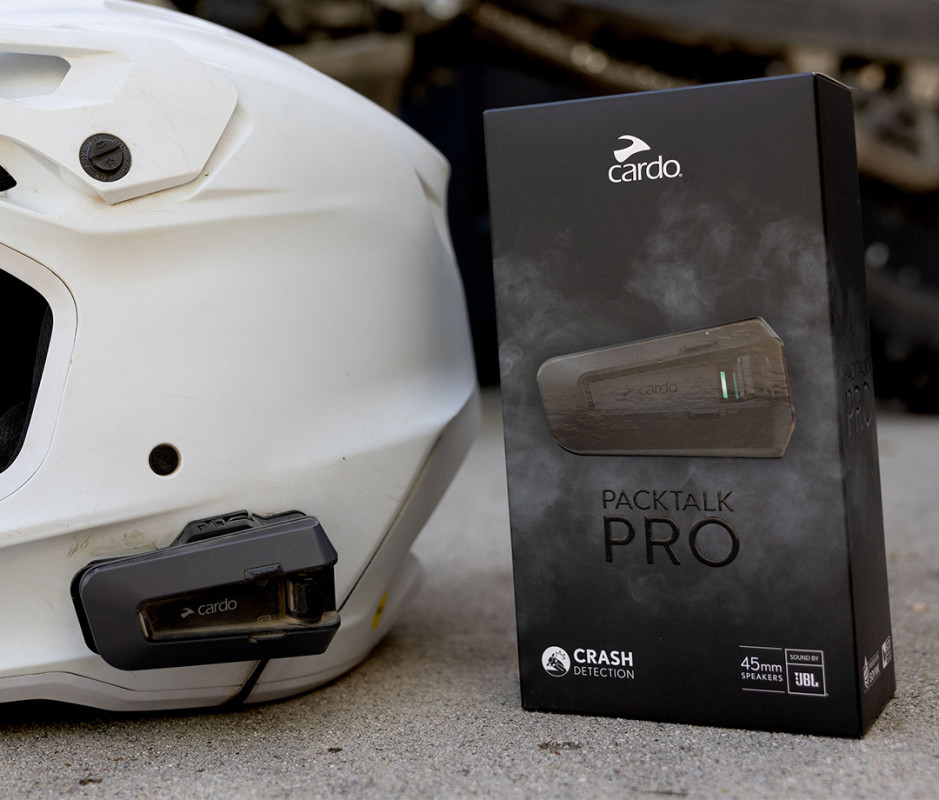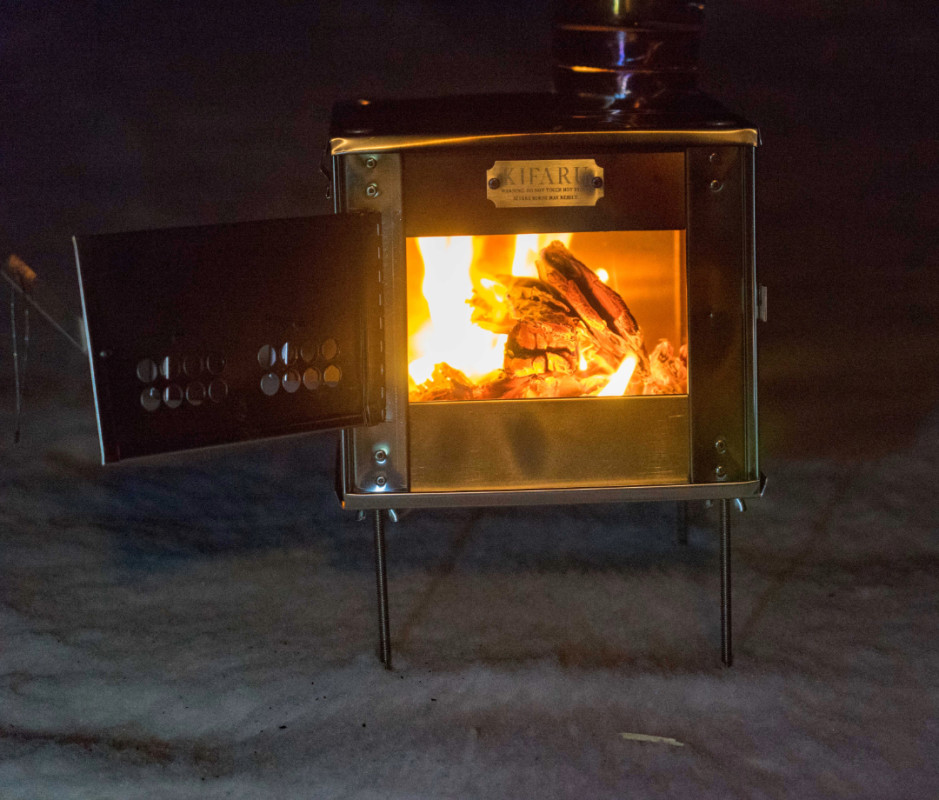Here at Men’s Journal, our team of editors and writers are constantly testing the latest gear and cool gadgets to find the best new products. This is the newest and best stuff out there that you should know about to take on your next adventure, use during a workout, add to your wardrobe, or simply enhance every other part of your life. That includes everything from the best new adventure gear and outdoor gadgets to the absolutely coolest home tech along with the latest and greatest in tools, electronics, and cookware.
Here, check out our writers’ and editors’ favorite picks for Gear of the Week. Come back each week to see an updated list of our favorite new products, along with a selection of the previous weeks’ gear picks.
Men’s Journal aims to feature only the best products and services. We update when possible, but deals expire and prices can change. If you buy something via one of our links, we may earn a commission.
Week of August 11
ETENWOLF Vortex S7 Heavy Duty Air Compressor
With overlanding and off-roading in general becoming more popular and ever-more capable trucks, SUVs, and even CUVs, hitting the market, the need for a reliable, rechargeable, and fast air compressor is apparent. Most of us who have been wheeling for years use a bulky tire inflator that clips to the 12 volt battery or, for those more serious about their off-road adventures, have a dedicated one mounted under the hood (or somewhere on the truck). The problem is that most of those options (minus a burly vehicle-mounted inflator or CO2 gas system) are slow as molasses at refilling big off-roading tires. Rechargeable air compressors have come a long way and are more compact and powerful than ever, but still are pokey when refilling truck tires after a backcountry trail adventure.
The new ETENWOLF Vortex S7 Heavy Duty air compressor, though, is touted as a faster and more efficient rechargeable inflator that’s purpose built to quickly refill bulky 4×4 tires. I got one to test recently so I put it to the test before heading out on some intermediate terrain in the woods around a friend’s farm.
To test, I simply deflated my Toyo Open Country R/T 285/70R17 (or 33-inch) tires on a 2007 Toyota FJ Cruiser to 18 psi. Then I dialed the ETENWOLF to 34 psi, my regular road air pressure, and hit the Start button at the same time as my iPhone stopwatch. The Vortex S7 sprang to life immediately and started chugging away at a considerable faster pace than most rechargeable air compressors, as far as my ears could tell. When it got close to 34 psi, around 33.5, it stopped and stuttered a few times, which I thought was a glitch, but apparently (after trying it on my other tires) it does that when it nears your max pressure as it throttles back to not go past it.
After timing it on all four tires, it had an average of 2 minutes and 20 seconds, which was much better than my other, less powerful compressors, but wasn’t close to the claimed stat of 30 seconds on a 30-inch tire. I’m not sure if that’s from dead flat to the recommended pressure of around 30 to 40 psi, but that was close to my experience. Nevertheless, this is a powerful compressor and I will still be using it to air up my tires for the foreseeable future, considering that it holds up over time. Battery life seems impressive with it only dropping one bar after filling all of my four tires, plus one tire twice.
The Vortex S7 uses two 260-watt motors with a 38,400 mAh battery to get things inflated quickly, which includes all kinds of vehicle tires, bike tires, motorcycle tires, inflatables, and more. It has a handy LED light for nighttime, roadside fill ups and claims to stay charged for 24 months, which is huge if true. There’s nothing more disheartening that pulling a rechargeable from your truck to find them almost dead, whether a power bank, inflator, or jump box.
It has a high pressure hose (up to 160 psi) and a flexible soft hose for inflatables with a inflate and deflate option. It comes with two attachments for that hose, an insertable type and screw on, but not one of the locking types that fit with most rigid inflatables like SUPs and kayaks, unfortunately. I learned that the hard way, so pack one with it if you plan on airing those up.—Adam Bible, Gear Editor
[$200; etenwolf.com]Nocs Provisions Long View Spotting Scope
Nocs Provisions has done it again by creating a niche product and packaging it in a way that appeals to a wide variety of outdoor enthusiasts. I bought one of their monoculars a couple of years ago and to this day, I still toss it in my pack anytime I go camping, fishing or hiking. That said, their all-new Long View Spotting Scope is a bit more of a commitment to carry around, but it still comes with a protective soft case that fits nicely into a backpack.
While it’s originally designed with birders in mind, I’d argue that just about anyone with a general interest in the outdoors could find value in owning something like this. Whether you’re doing a morning surf check, scouting lines for backcountry skiing or just admiring the beauty of mountainsides and wildlife from a distance, this scope brings a point of view that feels very unique.
The Long View is equipped with 20-60x magnification which on a clear day can push visibility well past 2,000 feet. The 85mm body is also great for gathering light on those lower light dusk and dawn sessions. As you’d expect this scope includes a built-in tripod mount that works with nearly any standard consumer tripod so you can focus on catching the action and not holding it still. With magnification this powerful it’s not quite meant for close range environments like forests. It’s best suited to open landscapes, beaches, alpine areas, ridgelines, deserts or valleys where subjects may be a few hundred feet or more away.
Like many of Nocs’ other products, the Long View features the brand’s signature Wave Grip texture that is oddly satisfying to handle while also having IPX7 waterproof protection. This is a bit of a splurge piece of gear but, if the allure of observing your distant surroundings with vivid clarity is something that intrigues you, it’s well worth the investment, especially since it comes with a “no-matter-what” lifetime warranty.—Peter Matlashewski, contributor
[$600; nocsprovisions.com]Kindle Scribe
My relationship with Kindle has been complicated, mostly because I haven’t had Amazon’s tablet in years. Reading on the Kindle app on iOS or Android tablets often tires my eyes faster than paper, which I attribute to the glossy screen and lack of e-ink. While Kindles are small and affordable, I’ve stuck with traditional tablets for their utility. But the Kindle Scribe changes the conversation by adding note-taking and, frankly, doodling features.
The Scribe combines high-quality e-reading with note-taking. It has a generous 10.2-inch screen that lets you write, draw, annotate PDFs, and sketch directly on the device. While larger than most Kindles, the Scribe’s size is comfortable for holding one-handed. Its sharp 300-pixels-per-inch display delivers crisp text, offering plenty of space and color warmth that helps reduce eye strain and allows users to increase font size without disrupting layout.
The included electro-magnetic resonance (EMR) stylus is accurate, responsive, comfortable to hold, and doesn’t rely on a battery to work. The only downside is the button’s awkward placement near the tip, making it a bit difficult to press while writing to switch functions, like changing to a thicker marker. The pen magnetically docks to the side of the Scribe, and you can, if you want, replace it with another brand’s EMR stylus. The sensation of writing isn’t pen or pencil on paper, but it’s tactile and a pleasant experience overall.
A key strength of the Scribe is its digital notebook system, which supports multiple notebooks with various templates—lined, grid, and planners—and organizes them in folders you can share. While I didn’t use this feature extensively, it’s useful for marking up PDFs. Compared to devices dedicated solely to note-taking, like the ReMarkable 2, the Scribe is a bit more basic, lacking some advanced editing tools and template options, but it works well for general note-taking and quick scribbles. I found myself reaching for it while on long phone calls or while half paying attention to whatever was on TV.
Like other Kindles, the Scribe boasts impressive battery life, lasting weeks rather than days, even with frequent use. It features a USB-C charging port and adjustable screen lighting, including warm and dark modes. A major advantage remains the Kindle ecosystem’s vast eBook library and smooth integration. I found myself reading longer, in both bright light and at night in bed, longer without feeling any eye strain.
The Scribe balances an excellent reading experience with a useful note-taking ability. While it doesn’t rival fully specialized note-taking tablets in advanced features, I would say it’s a better e-reader than those devices, which means it might be right for you if reading is the priority.—Sal Vaglica, contributor
[$400; amazon.com]Fissler Ceratal Ceramic Non-Stick 11-Inch Wok
It’s never too late to learn how to cook delicious meals at home and one of the easiest dishes to perfect is a stir fry. However, I’d argue that a good stir fry really comes down to a combination of high heat and enough room for the veggies or contents to breathe. Too often home cooks overcrowd an undersized frying pan and instead of frying and unlocking the flavors that come from a sear, everything just steams.
I recently switched over to the Ceratal ceramic non-stick wok from Fissler and the difference is night and day. The increased surface area allows you to cook family sized portions without compromising that essential sear. The handle palms nicely and the deep flared walls make tossing ingredients easy even if you’re a beginner. The nonstick coating on this wok is a water-based ceramic that is free of PFAS and PTFE. It works like a charm when sautéing while also having great heat retention no matter how much you toss in there. The CookStar flat base on this wok also makes it compatible with any household stovetop including induction stoves (though I was not able to test that ability).
This wok is also great for making stews, sauces, soups or even shallow frying although it’s important to note that this wok is not designed for extreme high heat which can be a limitation for some cooks but for 95% of dishes this model is more than capable. Another big plus about this wok is how easy it is to clean and keep clean especially compared to some of its stainless steel or cast iron counterparts.
While the Ceratal ceramic wok may cost a bit more than your average cooking pan, this piece is made in Germany with over 100 years of history in crafting high-end cookware so it’s far from average. Fissler may not be as commonly known here in North America as it is in Europe but it’s quality certainly shines through the minute you pick it up and start using it.—Peter Matlashewski, contributor
[$190; fissler.com]Week of August 4
Aiper Scuba X1 Pro Max Pool Vacuum
In New York, pool season is brief—just Memorial Day to Labor Day unless you have a heater—so I’ll try anything to maximize this window. And that usually means minimizing my maintenance. Many pool robots scrub floors, walls, and the waterline, but the Aiper Scuba X1 Pro Max adds a surface skimmer. For pools near trees or those left uncovered between uses, this feature can almost eliminate the need for manual cleaning.
The cordless design is liberating: No tangled wires, just drop it in and let it work. Unlike earlier bots (even from Aiper) that needed a hook to retrieve, the X1 Pro Max floats to the pool’s edge when done and waits up to 15 minutes for you to pull it out. It’s built for pools up to 3,200 square feet and can run between 5 and 12 hours per charge, with the longest runtime on skim-only mode.
Cleaning coverage matches other top-tier robots. The Aiper mapped my pool systematically and lifted the fine sand from the steps—a job I usually had to finish by hand with a stick vacuum. The intuitive app makes the operation simple. Bluetooth can be spotty underwater, but the solar-powered HydroComm accessory ($250) strengthens that connection and adds handy water diagnostics, like total dissolved solids, pH, and temperature to your phone. If you already track pool chemistry another way, you can probably skip the accessory, though it does make features like cleaning mode control and predictable retrieval more convenient. Uniquely, with HydroComm, the X1 Pro Max remembers where it entered the pool and returns there at the end of its cycle instead of picking a random edge of the pool.
Surface skimming is where this robot shines, especially if your pool attracts leaves or pollen. For context, Aiper makes a dedicated skimmer for $350. It’s impressive to watch this 33-pound machine glide across the water, powered by nine motors and two water jets—it almost looks like a Harrier jet. Dual filters inside capture debris down to three microns, which is about 30 times smaller than a human hair. A couple of nitpicks are that you can’t fully launch the bot from the app, so you’ll have to be nearby to press the power button. It can take quite a few minutes for it to surface after it’s done cleaning. And lining up the charging contacts on the dock can be finicky, and it’s easy to assume it’s aligned.—Sal Vaglica, contributor
[$1,699; aiper.com]Nocs Provisions Long View Spotting Scope
Nocs Provisions has done it again by creating a niche product and packaging it in a way that appeals to a wide variety of outdoor enthusiasts. I bought one of their monoculars a couple of years ago and to this day, I still toss it in my pack anytime I go camping, fishing, or hiking. That said, their all-new Long View Spotting Scope is a bit more of a commitment to carry around, but it still comes with a protective soft case that fits nicely into a backpack.
While it’s originally designed with birders in mind, I’d argue that just about anyone with a general interest in the outdoors could find value in owning something like this. Whether you’re doing a morning surf check, scouting lines for backcountry skiing or just admiring the beauty of mountainsides and wildlife from a distance, this scope brings a point of view that feels very unique. The Long View is equipped with 20-60x magnification which on a clear day can push visibility well past 2,000 feet. The 85mm body is also great for gathering light on those lower light dusk and dawn sessions.
As you’d expect this scope includes a built-in tripod mount that works with nearly any standard consumer tripod so you can focus on catching the action and not holding it still. With magnification this powerful it’s not quite meant for close range environments like forests. It’s best suited to open landscapes, beaches, alpine areas, ridgelines, deserts or valleys where subjects may be a few hundred feet or more away.
Like many of Nocs’ other products, the Long View features the brand’s signature Wave Grip texture that is oddly satisfying to handle while also having IPX7 waterproof protection. This is a bit of a splurge piece of gear but, if the allure of observing your distant surroundings with vivid clarity is something that intrigues you, it’s well worth the investment, especially since it comes with a “no-matter-what” lifetime warranty.—Peter Matlashewski, contributor
[$600; nocsprovisions.com]Meguiar’s Ultimate Iron Remover
Let me be the first to admit that I don’t wash my cars too much. My bikes? Immaculate—but a clean bicycle or motorcycle demonstrably runs better, whereas my funky old Mitsubishi trucks still drive just fine while covered in gunk. Plus, I love showing up to drives with friends or car meets in a super rare JDM Pajero Evolution that still shows signs of actual off-road use, the spray of mud and desert pinstripes galore. Take that, garage queens!
The Evo clearly lived a hard life, though, both before and after I imported it almost three years ago. Various Evo-specific body panels and fender flares made out of steel, fiberglass, and aluminum all aged differently, some looking brand-new, others clearly repainted, and the rest showing tons of paint fade, oxidation, and some early stages of clear coat wear. So I recently drove down to Meguiar’s to see what the pros might think I can do to salvage—or at least protect—what little remaining sheen I have left.
We went whole-hog cleaning the filth off, from a water bath all the way to clay bar and buffing. But the most surprising product recently joined Meguiar’s lineup, called Ultimate Iron Remover. This formula draws microscopic iron deposits out of paint and clear coat, in contrast to a clay bar that mostly cleans the surface. It’s important to do both, of course, but using this spray first truly produced a jaw-dropping moment as I watched the formula turn purple while interacting with the specks of contaminants.
Iron contaminants largely come from brake wear, on your own car and from others. But there’s also high iron content in dirt, so I figured we were removing traces of the city and the trail all at once. The process takes only a few minutes: just spray, wait about 30 seconds, then agitate, and finally rinse off. The Ultimate Iron Remover also works on glass and chrome, though I just stuck to the paint.
After the whole job, my Evo still looked pretty rough despite a massive improvement. There’s only so much that any combination of cleaning products can do to a car after 25 years of abuse, and I still believe this little homologation rally truck looks best all rough and tumble. But it’s nice to at least protect the foundation beneath that grit and grime, for a car I know I’ll never sell, so for $13 per bottle, I plan to just keep one on the shelf and maybe motivate myself to do some cleaning a little more frequently in the future.—Michael Teo Van Runkle, contributor
[$13; meguiars.com]AXS Crystal Shield D3O MagSafe Compatible Phone Case
If you are into any high-impact activities, like motorcycling, snow sports, or a variety of other violent sports, then you’ve probably heard of D3O. It’s an impact protection material that is soft and malleable when worn, but stiffens up upon impact to add an extra layer of protection. They’ve translated that technology to phone cases, and I tested the latest creation in collaboration with Axessorize, the AXS Crystal Shield D3O case, for my iPhone 15 Pro over the past few months.
I’ve always been a case minimalist, not going bareback mind you, but prefer the slimness of a bumper case. Which is why I was a little bit trepidatious testing the AXS out since it’s a has a full back covering which is slicker in hand and doesn’t give you the often-life-saving ridges around the phone that a bumper does. That extra few millimeters of case protruding from the front and back of the phone has saved my smartphone many a time from dropping into a lake or falling on concrete. But, since the AXS uses D30, which I’ve previously experienced in motorcycle gear, I figured I’d give it a try.
The Crystal Case uses the newer D3O Bio, which is plant-based and helps out the environment by saving fossil fuel and allowing for material waste to be recycled during production, reducing post-industrial waste. With its eco-bonafides out of the way, how does it feel and perform? I didn’t do any set up tests like dropping it from different heights on to concrete because, for one, I can’t afford to break my phone (I’m not making YouTuber money) and, for another, I find those tests fairly contrived and not related to real world use. So I just used it everyday for three months—at home, around town, at a farm, in the woods, fly-fishing in the mountains, and boating.
Besides the few days it took me to get used to the slick case—they claim it is “anti-skid” but it feels pretty smooth to me—it performed well for me. I dropped it a few times by accident on concrete and gravel driveways from an average of three to five feet (one incident saw it flying out of my hand and tumbling down a drive for a few feet) and there was no damage to my phone and just mild scratches on the case. The brand says it’s good for 10 feet of abuser.
Over the long-term, with the usually daily abuse, my phone still looks like brand new and the case has its fair share of scratches. The MagSafe imbedded magnet worked well with whatever MagSafe accessories I threw at it, and the Sapphire Gradient color still looks great against my Blue Titanium iPhone. I also never had a problem with any of the buttons. The only minor downside was that it gathers a bit of dust and debris around the edges, which you can see through the clear portion of the case, but that’s something that happens with most cases. Just take it out every now and then and give it a cleaning so your phone’s edges don’t get micro scratches.—Adam Bible, Gear Editor
[From $40; axessorize.com]Eufy Omni E25 Robot Vacuum
Robot vacuums have been around for years now and the good news for us as consumers is that they’ve only gotten better and more efficient over time. So for those who have never bought one, you haven’t missed out (yet). Eufy saw what was already on the market and pushed things a bit further with their all-new Omni E25 robot vacuum. After a few weeks of it running around the house, I can say with confidence that it’s saved us a ton of time cleaning and does a solid job.
Right out of the box, the Omni E25 moved from room to room in a matter of minutes and quickly generated a 3D map of our floor plan that was impressively accurate. From this 3D floor plan, you can then select which rooms and even specific zones within the room you’d like the robot to mop and or vacuum. With 20,000 Pa turbo suction (the highest I’ve seen on the market) it does a thorough job of removing dust, hair, and even small kitchen spills.
The E25’s docking station self-cleans, self-empties and thoroughly dries the mop which is not always the case with other robot vacuums. This model also has AI-powered stain detection technology, which means it doesn’t just follow a preset path, it actively detects and targets larger messes until they are no longer there. Another surprising feature is the extendable edge brushes, which reach out to ensure corners and baseboards get properly cleaned.
It is important to note that this isn’t a 100 percent set-it and forget-it robot appliance. You still need to maintain it to some degree like changing over the water and setting the stage in your home so it can move more freely. Still, those tasks represent a small fraction of the time you’d otherwise spend cleaning yourself. Overall if you live a busy lifestyle and want to offload one of life’s more mundane tasks, the Omni E25 is well worth a consideration.—Peter Matlashewski, contributor
[$900; eufy.com]Related: Best G-SHOCK Watches of 2025 That Are Practically Indestructible
Week of July 28
Ogio Silencer Hybrid Golf Bag
I prefer to walk when I play golf because I love the exercise and the meditative pace of the process. I don’t love the rattle caused by my clubs banging against each other with every step I take. Fortunately, I’ve been using Ogio’s new Silencer Hybrid golf bag for the last two months, which is designed specifically to minimize the chatter of your clubs when you’re in motion.
The Silencer has a top organization system that not only gives you a dedicated spot for every club in your quiver, but keeps those clubs from banging against each other when you’re walking the links. The hybrid design gives you plenty of storage for extra layers and gear (there are 11 pockets and even a dedicated speaker and range finder attachment) and the bold prints help the bag pop on the course.
It’s a little heavier than most stand bags (7.2 pounds) but it’s a really comfortable carry, thanks to the foam molded straps and balanced design of the harness system.—Graham Averill, contributor
[$320; ogio.com]Laek Seafield 30L Waterproof Backpack
There may be no better way to test out a dry bag than on a surf trip where you access some 16 sessions in a row by boat. Two to three times a day for a week, we loaded up a panga to go get waves. (Also, no better way to spend a week.) The Laek Seafield waterproof pack could definitely be the bag you need for surf, fishing, wet season adventures or any boat-bound adventure.
At 30 liters, this pack holds a lot. You can easily get a full day of gear in here (so long as you don’t need a giant bath towel for the beach.) The Seafield scores high in efficiency with an exterior pocket for sunglasses, pocketknife, etc. It’s not waterproof but water resistant. And to be honest, mine stayed dry all week. There’s a water bottle pocket tight enough so there’s little chance of your steel water vessel knocking someone out when you’re loading this in the overhead compartment. The second exterior pocket is on the small of your back to keep small items safe.
This bag was on the boat most of the week, as we bounced around taking chop over the side of the boat, checked spots and had water sloshing out the scuppers. At separate times I paddled my board and swam to the beach and back with the pack on. Not a drop of moisture.
I also appreciate that this bag works functionally as a traditional backpack. There’s a structured back panel, soft padding and well-designed shoulder straps so it works on a long day or full hike as well. I’ve also seen a lot of dry bags that they sailed with Blackbeard after a few months of use. This one is made of recycled 600 denier polyester with a double-sided TPU coating, so it’s going to last.—Jon Coen, contributor
[$135; laek.com]L.A.B. Golf Mezz.1 Putter
The golf equipment space is chockablock with arcane tech-talk—usually to dazzle the prospective buyer with yet another reason to upgrade, switch brands, or field-test the very latest version of your favorite sticks. Nowadays, if the clubface doesn’t have some kind of space-age materials or AI-angle, it hardly merits either passing mention or concerted attention.
There is one company whose design strategy actually warrants serious regard, and that’s Oregon-based L.A.B. Golf, an abbreviation for Lie Angle Balance. The philosophy behind putters like the Mezz.1—which I’ve recently tested on the fields of green—is to stabilize the club and ensure that it remains square throughout the stroke without undue face rotation. Because of it’s high-MOI (moment of inertia) design, the face resists twisting even on off-center strokes, which means that the ball moves on the intended line, even if miss-hit.
Adam Scott is one of LAB’s marquee professionals, and has enjoyed outsize success since switching from a Scotty Cameron prototype in 2022. He was using the “broomstick” version of the Mezz.1 Max and was ranked 19th and 27th on tour in the last few years. Then, after a middling couple of rounds at Pebble Beach, he switched to LAB’s Oz.1 mallet—a putter he’s been co-developing with the company—and finished the weekend with rounds of 69-64. Consider him sold.
If that doesn’t convince you that the tech is top-notch, consider the recent success of J.J. Spaun, who won this year’s U.S. Open with LAB’s DF3 putter, one of the more unusual designs out there and in currently in the bags of Lucas Glover and Rickie Fowler. PGA Pros have touted LAB’s precision milled face and adjustability—the Mezz.1 is a mid-mallet design that can be tinkered with endlessly for customized feel and performance.
Those interested in LAB can use the “build my putter” link at the company’s website to tick off personal preferences in shaft length, head weight, grip, color and alignment markings. You can also customize the lie angle from 63 to 79.5 degrees, and the company highly recommends the standard weight given that the design itself has an absence of torque and its unerring ability to return to the ball squarely. In other words, if it ain’t broke, don’t fix it.—David Weiss, contributor
[$449, labgolf.com]Vtoman FlashSpeed 600 Power Station and 110W Solar Panel
I test a lot of portable batteries and solar panels, so when heading out on a camping trip it can be tough to decide which unit to take out into the woods. For this last fly fishing trip to the North Carolina mountains I wanted to pack one that was small but powerful enough to last the 4-day trip, with some solar power assistance if needed. The compact Vtoman FlashSpeed 600, bundled with the 110W solar panel, seemed like it would fit the bill so I stowed it in the back of my truck with all my other gear.
The FlashSpeed 600 is a great way to take power along with you on shorter trips into the backcountry as it only weighs 15.9 pounds and is the size of a small toolbox at 12.4×7.9×9.5 inches. The sleek design—with no protruding parts—makes it simple to pack with all of your other gear, and two integrated handles on the top sides are easy to grab and allow for quick toting around your campsite and to and from your vehicle.
The LiFePO4 battery puts out 600 watts continuous with 499 watt hours max, plus peaks at 1,200 watts and has a built-in battery management system that has 10 layers of protection parameters for incidents like short circuits, over-charging, or reverse polarity. It’s rated for more than 3,000 cycles and can charge to 80 percent capacity in one hour using AC. Ports are also plentiful for the size with an Anderson input for solar, two USB-C, two regular USB, and two AC ports.
In the days I had it put to work while fishing, it was continuously powering my Dometic 25 liter fridge (set at 40 degrees) and did duty as a general phone charging station and Bluetooth speaker filler-up-er. We started the trip at 100 percent, natch, and near the end it hit 19 percent so I hooked up the foldable solar panel and juiced it up the last afternoon. The panel is robust with an aluminum frame, weighs 12 pounds, and has two kickstands and holes for easy hanging. Another nice feature is the built-in LED light with five settings, which I found handy as a general clean up and task light around camp at night.—Adam Bible, Gear Editor
[$800; vtoman.com]TCL NXTPAPER 11 Plus Tablet
The TCL NXTPAPER 11 Plus is a perfect tablet for those of us who still indulge in printed text versus the ad nauseum scroll of video-junk on TikTok or the like. Perched at the midpoint between E-Ink displays and conventional LCD’s, the 11 Plus emphasizes eye-comfort and a paper-like reading experience without sacrificing color accuracy or sharpness.
The 11.5-inch 2.2L NXTPAPER display features a matte, nano-etched surface meant to reduce glare and suggest the texture of paper, which it does admirably. Indoor readability is optimized and eye strain minimized, especially when compared to traditional glossy tablets. I especially appreciated the difference when waking up in the wee hours and not wanting to blaze my poor eyeballs with hard white light, making it harder to get back to sleep.
There are three distinct display modes: Regular, Color Paper and Ink Paper. Regular mode is what we’ve become used to in tablet displays, while Color Paper reduces saturation, and Ink Paper switches to a grayscale look for a more e-reader-like experience. Monochrome mode is highly effective for reading newspapers and periodicals. The matte layer may strike some as negatively impacting sharpness and color accuracy, but if you’re not consuming hi-res video content you’ll likely not even notice the difference.
NXTPAPER 11 Plus runs Android 15, is powered by a MediaTek Helio G100 processor and comes equipped with 8GB of RAM. It supports up to 1TB of expandable storage via microSD card in addition to the 256GB of internal storage. Performance is pretty snappy and battery life is downright impressive, especially with the energy saving standby mode. Expect several days of continuous power on one charge. And of course TCL bills this edition as AI-powered (what isn’t these days?), with added functionality integrated into apps like Text Assist, Writing Assist, Google’s Circle to Search and a host of others including transcription and Smart Translator.
Add it all up and you’ve got a highly competitive, feature-packed tablet—especially for the price, which checks in this week at Walmart.com for $249. For those who prioritize eye comfort and versatile display modes, the NXTPAPER 11 Plus is a strong contender—a tablet that can easily handle both entertainment and productivity tasks. The Active T-Pen Stylus is available separately for $39.99 for those who want to draw or take notes.—David Weiss, contributor
[$249; tcl.com]Week of July 21
Rad Power Bikes RadRunner Electric Cargo Utility Bike
With so many new e-bike brands entering the market, it can be difficult to know which ones are worth the investment. If there’s one piece of advice I’d offer, it’s to choose a brand with a strong track record for safety. E-bikes are an efficient and great way to get around, but with the speeds you’re travelling at, it’s important to choose a model that will keep you as safe as possible on the road.
With that, I spent a good portion of the summer on Rad Power’s new Electric Cargo Utility Bike and it’s been an absolute blast. I’ve tested several Rad bikes over the years, and with each new model they add additional safety features that make me feel more and more confident on the road. This utility bike has a 750-watt motor with five levels of pedal assist that provide efficient acceleration that will never have you break a sweat. I also like how easy it is to get on and off the bike thanks to the step-in frame, which makes it a good beginner-friendly option.
The all-new display has passcode protection for theft deterrence, automatic service reminders, range estimates, a speedometer and an odometer as well as few other indicators. The all-terrain tires handle pavement, gravel and the occasional dirt path without any issue, making it a solid all-around commuter wherever you live. I outfitted mine with front and rear cargo racks, which turned it into a very capable errand-runner or gear hauler. That said, this bike’s build is on the burlier side which is great for longevity but not ideal if you have to lift the bike regularly. With a range up to 55 miles and a 320-pound capacity I find it very well priced for the value you get from it.—Peter Matlashewski, contributor
[$1,499; radpowerbikes.com]Arc’teryx Konseal Approach Shoe
The original Konseal FL approach shoe by Arc’teryx first came out in 2018. Lightweight, super grippy and innovatively simple, the Konseal became an instant classic in the climbing community. The shoe was stiff where it needed to be—the sole—and flexible in the upper portions making the Konseals feel more like a part of your body than a shoe.
I remember being in the Bugaboos, British Columbia, in 2020 and seeing a number of well-loved Konseals with holes in them being worn with lightweight or hybrid crampons. While the Konseal does not have a full shank like a mountain boot and are not designed to be used as a mountain boot, it didn’t stop some Konseal lovers from utilizing the combo. Fast forward to 2025, and after a handful of Konseal iterations joined the family, Arc’teryx has redesigned the Konseal and it does not disappoint!
True to it’s OG form, the 2025 Konseal is minimal and clean with just a few new features. The basic fit feels the same, but, thank goodness they have improved the heel hold. While I never had an issue with blisters (once I got the right size) I have found the new version is a bit more comfortable and is easier to get on with the bigger heel tab. Regarding size, the new Konseal runs similar to the older model. I have to size down and recommend people who are new to Arc’teryx’s footwear try them on first. I prefer a slightly tighter fit, so someone who like a little room might be able to wear their true size.
The most noticeable differences between the 2018 and the 2025 Konseals are the redesigned bottom sole that has a bit of a curve and the outsole that seems to feature more rubber for optimised traction. Although I had a bit of trepidation with the new outsole before venturing into the wild, I’m glad to say that it still has that grippy balance that performs well on scree, boulders, and steep dirt approaches.
The new Konseal comes in leather with a Gore-Tex option. The upper feels thicker, but more mouldable than the previous synthetic material of the FL. While I loved the pervious synthetic material, it did seem to be the reason for all the wear holes—and I don’t love holes in my footwear unless they are Crocs. Although I am not doing weekly, multiple hour-plus approaches these days, I do look forward to feeling like a mountain goat on chiller approaches as a grippy Konseal has always given me more confidence.—Kate Erwin, contributor
[$190; arcteryx.com]Turtlebox Grande Bluetooth Speaker
I got married in June. It was lovely. Every day prior to the wedding was about 45 degrees. Every day since the wedding has been about 145 degrees. We got married on the beach. A whale breached before the ceremony. We had the reception in a large yard just off the dunes—raw bar, friends, lots of old school reggae, mellow dinner and the latest sunset of the year—could not have gone better.
My wife and I were in agreement that we didn’t want a wedding band or a DJ. The idea of that guy with a chinstrap beard and sequined vest leading guests through that “One Eyed Joe” dance, or whatever, is our collective nightmare. We chose to make a playlist and put out two Turtlebox Grande Bluetooth speakers. We had a computer inside streaming and the signal reached about 100 feet in each direction to the Turtleboxes, which were set to play in stereo. The sound was phenomenal. Aside from a few seconds where the Bluetooth dropped out, the Turtleboxes worked perfectly.
We started with Sam Cooke, moved on to a little Pearl Jam, De La Soul, the Replacements, Desmond Dekker and actually finished with some Turnstile (this is, after all, Turnstile Summer…).
The Grande puts out a whopping 126 decibels. We never turned either to full volume. It offers 40-plus hours of battery life with a 1.25-inch titanium tweeter and 10-inch woofer. There is a built-in microphone, had we wanted to make a toast over the speakers. Turtlebox’s “Party Mode” allows for infinite pairing of any of the brand’s Original, Ranger, or Grande speakers. We had plenty of volume with just the two.
Turtleboxes are essentially bulletproof—completely drop-, crush-, and dust-proof—and would’ve easily survived the mayhem had my mother decided to start slam dancing when “Sabotage” came on. They are rated to IP67 waterproofness in both fresh and saltwater and they float, should we want to take it on the boat this summer. They helped make for a great wedding without having to hire a cringey DJ—and we had ice cream cake.—Jon Coen, contributor
[$730; turtlebox.com]Pendleton Infinite Prayer Blanket
Inspired by her late father, designer and psychology student Jenabah Yazzie’s (Diné Navajo) Infinite Prayer design was the 2024 winner of the Tribal Collage Blanket contest. The American Indian College Fund, the nation’s largest charity that supports Native higher education, partnered with Pendleton, the famed woolen mills brand, to create an annual blanket designed by a Native to raise funds and awareness of the scholarship endowment.
The colors and design honor the time of day when Navajo are taught to give offerings at hayoołkááł (dawn). The design is a mosaic of symbolism, with the different shapes, lines, and stars representing the interconnectivity of prayer—weaving together the strength of prayer (the white border), the prayers for ourselves and future generations (horizontal lines), and a reminder to be one with the elements and to reconnect as we are not alone, as our ancestors (stars) are all around us. Together these elements are infinite.
The Pendleton blanket is made with felted wool and cotton. While some will choose to hang their Infinite Prayer blanket as art (which it is) others may use this durable blanket daily, as a cover for a bed, sofa, or even use outside for camping (all acceptable, why not keep the beauty of this blanket with you?). The durability of Pendleton felted blankets is unmatched, and although the blanket will never be as fresh as the day you got it, it does age well and if you take care of it, it will last many lifetimes.—Kate Erwin, contributor
[$339; pendleton-usa.com]Week of July 14
Nothing Headphone (1)
The headphone space has become so competitive these days that if you’re releasing your first model you need to deliver something spectacular—that’s what Nothing has done with their new Headphone (1). In true Nothing fashion, these headphones feature a transparent, sharp design that reveals internal components in plain sight while preserving its minimalist approach.
Aesthetics aside, these headphones really come alive when you put them on. The PU leather ear cushions are firm enough to seal in sound and stay in place, yet soft enough to remain comfortable for many hours at a time. Noise cancellation outperforms many peers in this price range that I’ve tested, and it effectively tunes out the sound of a busy subway or bustling workplace.
But what really blew me away and, arguably, where it matters most, is the sound. With immersive spatial audio, they make your favorite songs feel more expansive and dynamic than ever. Whether you’re listening to music or taking a call these headphones produce crisp detailed audio that will be noticeable to you and the person on the other end. The Headphone (1) was co-engineered with British audio brand KEF, known for its long-standing reputation for producing high-end audio equipment.
Nothing also introduces some refreshingly unique yet intuitive ways of interacting with your music and apps through its headphones. Whether it’s the new roller knob that allows you to adjust the volume by physically rolling it, the paddle shifter for skipping through songs or the classic multi-function button that allows for interesting transitions between various apps. From the comfortable fit and clever interface to its premium sound and built to last mentality, it’s difficult not to crown this one of the most interesting pair of headphones to hit the market in recent times.—Peter Matlashewski, contributor
[$299; us.nothing.tech]Kifaru Shape Charge Backpack
Though it’s still stiflingly hot across most of the country, those dedicated to hunting during the upcoming cooler season have been diligently checking their trail cams and watching a few choice buck’s antlers bud. The velvet is thick and the antlers are sprouting up magnificently. But, as early fall creeps closer, big game and bird hunters start thinking about upgrading their gear. For those in need of (or just have that seasonal pang of “want”) a new backpack, I’ve found that one the best choices is the Kifaru Shape Charge.
I first checked out this brand last fall and was impressed by the build quality and features found in their bino harness and this Shape Charge. They both are purpose-built, thoughtfully designed bags that are bomber, which is a testament to founder Patrick Smith, who also started Mountainsmith—one of my favorite outdoor pack companies in the ’90s—back in 1979. To focus on the Shape Charge, though, it’s an excellent, do-it-all pack that is perfect for hunting as well as everyday use or travel.
The substantial-feeling, 32-liter pack is made in the USA from durable 500D Cordura, but only weighs 3 pounds, 15 ounces. Stand-out features include a full-zip clamshell opening, two internal mesh pockets, and two zippered mesh pockets in the lid (one with key clip and one with a internal sleeve for even more organization options). The inside and outside is adorned with lots of MOLLE webbing so you can attach a plethora of gear or other Kifaru accessories to support whatever adventure you’re chasing. Two outside compression straps help manage loads and an optional padded hip belt is available for $75—it’s an essential if you plan on packing and humping heavy loads. The shoulder straps are thin but super comfortable and include a sternum strap. All of the straps also include strap keepers to help manage any loose or dangling tails.
After I had my fun with the pack, I gave it to a hunting buddy who is retired from the FBI Hostage Rescue Team. He needed a pack to use for his rucking workouts and eventually for whitetail season. He also rated it as an excellent all-around backpack, noting that his pro’s were it being lightweight but still firm (“I hate floppy backpacks”), tons of MOLLE, easy-to-access pockets, the elastic water bottle side pockets, and the heavy-duty handle and bar-tacked stress points. His only niggle was there’s no side, suitcase-style handle for carrying it like luggage so it doesn’t drag on the ground when toting with one hand.—Adam Bible, Gear Editor
[From $400; kifaru.net]Fields Outfitting Pampa Multipurpose Knife
If you are of a certain vintage, you’ll remember the notorious line from Crocodile Dundee that actor Paul Hogan delivered—“That’s not a knife, this is a knife!”—and if you’re a fan of knives, you’ve likely said it to describe one of your favorites. At the risk of being provincial, Fields Outfitting’s Pampa with the purple heart handle is a knife and whatever I had in my kitchen before was not.
Fields Outfitting is a wardrobe and home goods design brand that centers its collaboration with artisans and makers across Argentina. The Pampa Multipurpose Knife features an exquisite Swedish Sandvik stainless steel blade and is based on the Japanese santoku design. In Japanese that stands for “three virtues”—those being chopping, dicing, and slicing. I can attest that this gorgeous knife does all three spectacularly after processing meat, fish, and veggies. I had originally thought that I would “save” this knife for special meals, and, as a smaller person, I was a bit concerned with the size of the knife for more the precision cuts. But I have found that I actually have more control because of the strength of the steel and the comfortable handle—I’m now using the Pampa for everything.
The hexagonal handle is made of pure Purple Heart. Purple Heart is a native hardwood in Central and South America. It is know for durability and resilience, along with it’s absolutely stunning natural color. True to Fields Outfitting’s ethos, the Pampa is made by local artisans at the Ramo Filos Workshop which is run by Andres, German, and Joaquin, in Buenos Aires, Argentina.—Kate Erwin, contributor
[$139; fieldsoutfitting.com]3Bird Kingfisher Shirt
Technical clothing—or what marketing folks like to call “adventure clothing”—can easily pigeonhole itself and its wearer. If you’re not careful, you can end up being the guy nursing a beer at the Silver Dollar Bar in Jackson, Wyoming, wearing a $350 technical climbing shell that, once you’re home, only gets stretched when you reach to close your SUV’s trunk.
That’s why I like the 3Bird Kingfisher. I might only go fishing a few times a year, but this shirt makes sense nearly all 12 months without making a big deal of itself. Made from SeaWool—a blend of recycled plastic bottles and crushed oyster shells—with polyester, it has a comfortable fit, proper sleeve length, and comes in three colors that easily blend into whatever you’ve got going on.
I’ve been wearing it for weeks in relentless New York heat and humidity, doing everything from mowing the lawn to grilling and popping into cookouts. The chest has a pair of pockets that function as expected but are also open on the sides—for when you need to stash something quick like your phone or keys. But the sides don’t close, so I wouldn’t use them for anything you don’t mind dropping. Behind the pocket is a mesh lining, which helps dump some heat when you’re in the sun. The left pocket includes a sunglasses slot and a built-in lens cloth.
The Kingfisher provides 50+ UPF protection and dries quickly. A back yoke and that polyester also helps it move with you. I could wear this shirt for three seasons and no one would guess it was designed for fishing. And that’s exactly the point.—Sal Vaglica, contributor
[$129; 3bird.com]Week of July 7
BowFlex 840 Adjustable Kettlebell
Kettlebell workouts have become increasingly popular in recent years, and I now understand why. They offer time-efficient, high-intensity workouts that build practical and functional strength much faster than I imagined. With busy schedules making it harder to hit the gym, sometimes a quick kettlebell session is all you need to burn some calories and stay active throughout the day. I’ve been using the BowFlex 840 adjustable kettlebell for quite some time now and it’s become a perfect work break solution for getting some exercise in without having to leave my home office.
As the name suggests, this kettlebell can transition from 8 pounds all the way to 40 pounds with increments at 12, 20, 25, and 35 pounds. With so many weight options available the number of exercises you can do with just this one piece of equipment is quite extensive but also leaves room for growth and progressive overload.
The handle feels solid and is generously sized making it easy to grip and although it can feel slightly bulky at the lower weight settings, I never found it to interfere with my range of motion. With so many transitions available it’s also quite beginner friendly allowing anyone to build strength without having to buy multiple kettlebells.
If you’re looking to start working out at home and aren’t ready to invest in a full set of equipment, this adjustable kettlebell can be an easy first step. It blends in well with small spaces and also covers a lot of ground in terms of functionality without having to breaking the bank.—Peter Matlashewski, contributor
[$129; bowflex.com]Retrospec Amok Gravel Adventure Bike
Affordable fun and durable, Retrospec’s Amok Gravel Adventure Bike is a no fuss all-around option for a daily commute or a chill escapade. The Amok features a sporty aluminum frame with a slightly tapered headtube that allows responsive, agile steering. The Amok is classified as a gravel bike, but it lacks some of the features of higher bikes, like drop bars and more gears. However, there is a ton of spunk packed in those 8 speeds of the Amok’s Shimano Altus Drivetrain and it shifts well with the RapidFire Plus Shifter.
While drop bars would be nice, the Amok’s geometry offers zippy fixie vibes that are truly enjoyable on shorter rides. Would I take the Amok on a multi-day/week trip? Probably not, but would I take it on day trips and use as a daily commuter—absolutely especially at the price point at $550. As a friend said to me, “It will get you to A, B and sometimes C, not D.” And that is OK especially when that “sometimes C” is a perfect swimming lake up an old logging road.
The joy that this little bike brings is no accident. Retrospec was founded by two ’90s SoCal kids—brothers Ely and Kevin Khakshouri—who grew up on bikes and began their business by selling bikes on consignment out of their truck. Since then, they have made being “outdoor curious” a career and offer other adventure-ready vessels like paddleboards and longboards.
As for the limited edition Grateful Dead colorway, yes please. Even if you aren’t a deadhead, who can deny the Grateful Dead’s iconic Steal Your Face logo?—Kate Erwin, contributor
[$550; retrospec.com]Opinel No.08 National Parks Knife
Die-hard fans of the French knife icon Opinel will want to get their paws on this new collection from the storied brand that focuses on three National Parks, the Grand Canyon, the Great Smoky Mountains, and Yellowstone. And if you’re not that familiar with the brand, these inexpensive but well-made and handy lightweight knives are great for keeping in your camping kit, or for gifting to a young outdoors lover who’s old enough to start toting his or her own blade.
The collection was made in collaboration with local artists—Summer Doss, Matt Brass, and Isaac Lowe-Anker—who particularly love each of the National Parks featured. Their artwork is impressed into the sides of the beech wood handle of Opinel’s instantly recognizable No. 8 knife, which includes the distinctive locking mechanism and a sharp, 3.28-inch stainless steel blade.
The unique knife collection is packaged in an eco-friendly way with 80 percent less plastic and is entirely recyclable. A percentage of the proceeds got the Leave No Trace, which is an instrumental organization that works to protect America’s wilderness. Those Opinel and National Park fans that want a bit more can pick up the Guide Series, which comes with a handy guide book for each park, or the whole shebang with the Ultimate Traveler’s Kit that bundles all of the collection together.—Adam Bible, Gear Editor
[$25; opinel-usa.com]Timberland TB00037 Sunglasses
On a bright morning in southwest Washington, I set out on a group hike along a roughly six-mile trail leading to a field of yellow balsamroot—a wildflower that blankets the Columbia River Gorge each spring. At 2,800 feet in elevation, and a good number of switchbacks, there’s plenty of time to either forget I’m wearing my Timberland sunglasses or, if they’re uncomfortable, toss them into my pack, and prepare for a whole lot of squinting and cursing.
Sunglasses are everywhere—you can splurge on a designer pair in New York or San Francisco, or grab a cheap set at a convenience store that might not survive a single beach day. So, it’s easy to overlook just how important comfort is—and that matters even if you’re not wearing a “technical” pair of sunnies to bomb down a hill or gut it through an ultra. If you’ve got a larger noggin, finding sunglasses that check the boxes for comfort, performance, and style can be a real challenge.
As I hiked through the dappled light of the forest and up toward the sunlit summit, the Timberland TB00037s rarely left my face. The lack of nose-bridge pinching and ear irritation didn’t go unnoticed—on lesser frames, the latter nags like the pinky toe you smashed into the coffee table leg. The square-framed TB00037 I’m wearing checks a lot of boxes.
Timberland partners with Marcolin, the Italian eyewear maker behind frames for brands like Adidas and Tom Ford, to make the TB00037 lineup. Marcolin uses a bio-based acetate derived from renewable sources like cottonseed fibers for the frames. It’s a thoughtful touch to a pair of shades that look clean, modern, and free of a ton of branding, and feel featherweight given the size. Later that afternoon, the polarized lenses kept my eyes from straining on a ferry cruise down the Gorge, where the fresh air is perfumed by someone eating a hot dog—which is an even riskier move than buying cheap sunglasses.—Sal Vaglica, contributor
[$85; amazon.com]Birkenstock Lutry Clog
When it comes to casual clothing, I would say my top characteristic is comfort with convenience a close second, Birkenstock’s newest mule, the Lutry, offers both of those qualities with the added bonus of great style. To the chagrin (or relief) of my other mainstays, the Lutry has quickly become my go to show of the summer.
I often wear various shoes throughout the day because I am typically doing some sort of sport that requires specific footwear, so I like to have a shoe for in between, like after a mountain ride or after a climbing session. Historically, for me, this shoe has either been a Croc or an Arizona Birkenstock sandal. Both are great options, but they both feel a bit exposed, the sandal for obvious reasons and Crocs for psychological reasons. When you wear Crocs so many days in a row and you aren’t going in a body of water, you can truly feel your dignity draining out of those little holes. So, a sturdy, yet breathable slide and also visually appealing slide that can fit in at the trailhead and in a curated social event like the Lutry is making my outfit choices simpler.
The Lutry features a contoured cork-latex footbed that molds to your feet over time. The premium leather upper portion of the shoe wraps around the footbed, hiding the trademark Birkenstock cork. There are also has elegant, exposed seams that showcase the construction of the shoe. The rubber and cork blend sole does seem to be a bit more grippy than the classic Birkenstock soles. There is a convertible backstrap similar to Crocs that gives like “sport mode” for more security. I did use this feature on a recent impromptu hike and it worked well. As for fit, the Lutry does run a bit wide, so if you’re typically a regular/wide in Birkenstocks, you might want to try the medium/narrow.
Since wearing the Lutrys, I have received a ton of compliments, something I don’t get when wearing my Crocs. So if you’re looking to upgrade your summer look without having to bend over to put on your shoes, slide into the Lutry and keep your dignity.—Kate Erwin, contributor
[$155; birkenstock.com]Related: Best Field Watches of 2025 That Master Utilitarian Versatility
Week of June 30
Cliq Mystiq Beach Chair
Picking the perfect camp chair always requires making tradeoffs. Lightweight and packable options tend to sacrifice the comfort factor, while the comfortable versions tend to take up a ton of room and weigh literal tons. Usually while backpacking, I end up sitting on the ground, or a tree stump, or just standing—to save weight, as much as anything. And then when car camping, I’ve always gone with the biggest folding chairs with full-on cupholders and head cushions and even extending legrests for that lounge lizard life.
My new favorite collapsible chair for car camping effectively splits the gap, the CliQ MystiQ Lounge beach chair. Most critically, the design folds up super compact—measuring just 18×6-inches in its cylindrical carrying case. That’s about a quarter the size of my previous larger lounge, and infinitely more convenient than my ancient rectangular Coleman chairs. Yet the MystiQ’s still very comfortable, and the beefy components from the hinges to the arms all feel solid.
It’s on the heavier side, for sure, so definitely not a backpacking solution. But the ability to slip a few into the truck while I’m packing gear for a day at the motocross track or a weekend on the trail, without taking up too much room, makes the design unique. Essentially, the legs fold up and around the arms, then down from a circular centerpiece. By my third or fourth time, I could unfold and repack this chair in about 10 seconds flat. And CliQ also sells a backpack that can hold two or three, depending on which chair you choose, and can double as an insulated cooler, too.
If starting over, I’d go with the EpiQ Lounge for the headrest, but I started with the MystiQ because I didn’t fully comprehend how well it would fold up based on internet pics. Leaning back and staring up at tree cover or the night sky, without much bigger of a package, sure sounds good. In fairness, neither features armrests—which I don’t mind but can certainly understand if that’s a dealbreaker. And they’re not cheap, either, but my initial impression is that these chairs have the quality to last a lifetime. And it’s hard to put a dollar price on saving space in my truck, not to mention clearing out some more room in my garage, too.—Michael Teo Van Runkle, contributor
[$279; cliqproducts.com]Crown Northhampton Adnitt Gat Jazz Shoes
Back in the day, I was obsessed with Asics’ Onitsuka Tiger Mexico 66 shoes. These slim, barely there sneakers were modeled after some of the Japanese brand’s first athletic shoes, specifically the ones built for the 1968 Olympics in Mexico City. They are simply constructed of a thin leather upper and a thin outsole—a far cry from the cushiony and technical sneakers we take for granted today. But that basic form became my favorite style of sneaker to wear, especially for riding bikes through New York City streets, whether late at night or commuting to work.
So I was excited to test out a pair of Crown Northhampton’s Adnitt Gat sneakers, which adhere to the same simple formula of the Asics, but are more inspired by jazz, or dancing, shoes, rather than solely from ur-training shoes for athletes. The big difference, though, is that these sneakers are handmade from high-quality leather and built similarly to custom dress shoes with a cork filling in the midsole and an outsole that is replaceable once worn out—a key detail that means these shoes can last for years.
Out of the box, these handmade sneakers impressed me—the soft and substantial leather upper—with equally as nice leather lining—overlayed with amazingly supple Janus calf suede felt and looked every bit a high-quality, custom shoe. They also fit me perfectly and after a few wears, started to break in nicely and form to my feet.
The thin Vibram outsole—available in three colors; black, white, or gum—was plenty thick for my liking. Though, if you aren’t used to “barefoot”-style shoes, the Adnitt Gat’s may not work for you. These are simple and minimal shoes that most likely won’t appeal to those that prefer lots of cushioning and technical details. For me, these sneakers—though twice the price of the Asics—are a welcome upgrade from the Mexico 66s. Wearing them is like slipping on a well-worn pair of leather gloves—they protect you, but still allow you to tactilely experience the world.—Adam Bible, Gear Editor
[$267; crownnorthampton.com]Mammut Ducan Guide HS Hooded Jacket
The Mammut Ducan Guide HS Hooded Jacket is a great choice if you’re heading out trekking in a cool, damp climate. Mammut’s proprietary 3-layer DRY Tour waterproof-breathable fabric is the centerpiece of this shell. On my testing missions it kept me dry through several downpours, and remained comfortable hiking uphill with a pack in mid-60 temperatures. Overall, the design is best described as simple and solid, with a full-coverage, easily adjustable hood that fits over a helmet; underarm zips that don’t interfere with pack straps; and good-sized pockets in just the right places.
Besides the thoughtful design, the fit is what really sold me on the Ducan Guide. Mammut garments are cut for athletic body types, and a size large jacket fits my skinny waist, wide shoulders and long torso perfectly. The blend of smooth and ripstop fabrics, the latter used for additional durability in the shoulders, hem and forearms, drapes well and feels light, nimble and comfortable. Overall this is a great shell for active outdoor pursuits in challenging wind and weather conditions.—Conor Mihell, contributor
[299; mammut.com]Thuma Nest Dresser
One of my grandfathers used to say, “You have to spend money to save money.” You can unpack this in various ways, but when it comes to furniture, if you invest in solid, well-made pieces, you’ll save money over a lifetime. The investment in Thuma furniture seems like a happy medium between super high-end luxury brands and those cheaper brands that assemble yourself (and are scared to take apart for fear that the whole piece will fall apart). I recently tested a Thuma Nest Dresser and it does not give that vibe and can easily be taken apart if you move.
The Nest Dresser is a modular design that comes in seven configurations with four different color options. Unlike a complete consumer assembly pieces, the drawers of the Nest arrive pre assembled, but seperate. Each box has one drawer, one screw (no tools needed) and depending on whether it is the top drawer, could also have top piece. It is also worth noting that the Nest Dresser also comes with an anti-tipping hardware that does require tools if you use. I was able to assemble the dresser by myself in literally minutes. Getting the drawers out of the box took way more time than the actual assembly, but worth the struggle because I would rather take out slick cardboard packing than crumbly styrofoam any day.
The Nest Dresser is made of 100-percent upcycled wood and is GreenGuard Gold certified for cleaner indoor air. Each drawer is a spacious 30x5x15 inches that you can actually put sweaters in. The wood is solid and smooth, while the design is clean and modern with subtle lines. The drawers have a silent, soft-close feature that adds a bit of elegance.
I went with the 3×1 configuration, which I can build on in the future, which is a very appealing feature. You don’t have to commit to a big dresser and you can add as you’d like growing your invest of a gorgeous piece off furniture with a lifetime warranty.—Kate Erwin, contributor
[$1,155; thuma.co]Week of June 23
GE Profile UltraFast Combo Washer-Dryer
Tell someone you’re getting a combination washer-dryer, and it usually elicits a visceral reaction. People seem to care deeply about this laundry appliance in ways that air conditioners or refrigerators can only dream about. Even if they’ve never used one the idea is a love it or hate it purchase. The lure of the GE Profile UltraFast Combo’s promise of making fewer trips to the basement, combined with better drying efficiency, for units that use a heat pump, in a connected appliance that is easy to control, won out over my initial hesitation: If this machine dies, I’m out two appliances. While I was excited for the test, my wife, skeptical of the unit’s drying prowess, wanted to hold onto our old, gas dryer as a backup.
Even though these two-in-one appliances and even dryers that use heat pumps aren’t new ideas, they haven’t been well executed enough to go mainstream. But recently GE Profile’s engineers nailed an indoor smoker that does exactly what it claims to, so I was curious about the UltraFast’s practicality. After a brief learning curve, it’s now been reliably handling all our laundry, towels, and bedding for months without issue.
While it’s handsome for a nearly four-foot-tall computer, the GE Profile isn’t a small machine at about 47x32x28 inches. Our suburban basement isn’t small, but the footprint is a big consideration if you think a combo is going to save you space. The digital touchscreen dashboard is well-organized and intuitive. Setup is quick, requiring only standard plumbing hookups: drain hose, cold and hot water supply (please buy new, stainless steel braided hoses!), and a 120-volt outlet. I added thread-on hammer arrestors (about $40 from a hardware store) to eliminate pipe rattling—a common issue with fast-acting valves on newer appliances.
Once installed and paired with GE Profile’s SmartHQ app, and after a software update, I was ready to get washing—without watching any instructional videos. From the start, I appreciate the dashboard countdown timer, which is more useful if the unit lives on the main floor, where you might walk by. For those with laundry rooms in the basement, you’ll likely check the app to see how much time is left in the cycle.
Because the UltraFast Combo is ventless, you won’t need ductwork for the exhaust, which, when not maintained, can cause a house fire when the lint builds up and ignites. This is a big selling point, but it’s also something you have to address: If you live in a typical residential home, it has a duct for the dryer, which you’ll have to plug up if you yank that pipe out. The UltraFast cycles and recycles hot air through a heat exchanger and compressor (which explains the GE Profile’s height), getting hotter each time while the evaporated moisture is pumped out through the drain. The UltraFast has a two-stage lint filter that’s easy to access and clean to help keep that air moving as efficiently as possible. Keeping that filter breezy helps the heat pump’s efficiency. When it’s all working well, the GE Profile could potentially save about $175 a year in energy costs, compared to a traditional vented unit.
In my tests for a family of three, a typical load took between two and two and a half hours, which is reasonable for a combo unit, provided you don’t overfill it. The machine handled everything from normal laundry to bedding and even a couple of doormats. I did have to learn to not overstuff the unit (coming from the world of top loaders) and when to opt for more water and more dry settings on the dashboard. The SmartHQ app shows you the energy consumption, how much time is left in a cycle, and the ability to remotely make tweaks to things like more dry.
While you can set the UltraFast to notify your phone and watch about nearly anything, the key ones are maintenance-oriented, like knowing when the lint filter needs cleaning, if the unit needs to run a self-cleaning cycle, or if the detergent chamber needs a refill. The app lets you download any of four specialty cycles to the combo, which I appreciate as an option that avoids cluttering the dashboard. We’re a big denim household, so we added the jeans cycle, which dries without using very high heat and often means you can get by without ironing. We found this setting more efficient when drying than having a few pairs of jeans mixed in with the regular wash.
With most combos, the dryer is the weakest link, and it’s no surprise here that GE Profile’s washing ability is very good. The heat pump drying is also surprisingly efficient, which helps the unit earn an Energy Star certification. Still, the UltraFast, or any combo unit, really, speaks to a specific use case. If you have a family of five or more, the capacity might not be big enough, and you can process more clothing with separate units more efficiently. In the worst case, you might not save much time on the drying side, though you would still have to walk down to and interact with the unit less.
Space can also be an issue as the machine is larger than most individual washers and dryers and existing combos. If floor space and vertical height are at a premium, the UltraFast might not fit. Another logistical consideration: The door only swings open left, and you can’t reverse that. If you’re curious about the UltraFast appliances, they generally go on sale around major holidays, including Independence Day.—Sal Vaglica, contributor
[$1,999; geappliances.com]Birkenstock Mogami Terra Sandals
If you’re looking for do-anything outdoor sandals that still look classy, Birkenstock’s new Mogami Terra sandals could be exactly what you’re after. I had the chance to test these out over the past few weeks and I’m thoroughly impressed with the comfort and functionality.
Chances are you’ve owned a pair of Birks or know someone who has and can attest to their ability to last for many years. This new model feels no different but adds more versatility thanks to a fully waterproof contoured footbed. It also has a rugged PU sole that provides extra traction when venturing off the beaten path, and the slightly raised front lip has already saved me from stubbing my toe more than once. The footbed feels sturdy over long distances, yet still flexes when you need it to. I opted for all-black, but they do come in a variety of colors to match your style.
I did find that the sizing runs a bit large, so I’d recommend measuring your feet specifically for this model or trying it on in person before purchasing. That said both straps in the front are adjustable, as is the heel wrap so even if the fit isn’t perfect right out of the box, you can still dial in a secure fit. As someone who loves my Arizona Birkenstocks I found these Mogami Terras to be a perfect complementary pair when I know my feet are going to get wet or dirty and want an option that will be easy to clean. All things considered, the Mogami Terra sandals are a well-rounded versatile addition to any summer footwear collection, especially at this price point.—Peter Matlashewski, contributor
[$99; birkenstock.com]Daiwa Kage SV TW 150 Caster Reel
Now that fishing season is in full swing, if you’re finding yourself wanting to upgrade your casting reel to one that feels unlike most others, Daiwa’s new Kage SV TW 150 reel is in my eyes a complete game-changer. I’ve been a fan of Daiwa for many years and after using this new reel since season opener, I can’t seem to pick up anything else when I go fishing.
What’s great about this reel is that it’s packed with premium features and accents typically found in higher end models while still falling into a mid-range price bracket. I would match this up against reels that cost twice the price, and it would hold its own. Despite being a size 150, I did not find it bulky at all and found it palms quite nicely.
This model comes with Daiwa’s HyperDrive system and delivers such a high level of smoothness it’s not easy to describe. The SV spool is a lightweight but shallow spool made of ultra-thin aircraft grade aluminum and uses next to zero startup inertia making those casts feel really powerful and accurate.
Tech specs aside this reel is a work of art, from the cork handles and poppy red accents to the sleek all-black design. I paired this reel with one of their Kage premium bass rods which complements the reel perfectly in both performance and aesthetics. When I got hooked up with this combo, I felt completely in control, the drag was firm but smooth and I was able to work the fish exactly how I wanted to all the way to the boat.
Whether you’re looking to upgrade your current bait caster or add to your arsenal, the new Kage offers features, sensitivity and durability found in top-of-the-line reels at a much more affordable price while also being an absolute joy to use for hours on end.—Peter Matlashewski, contributor
[$260; daiwa.us]Paka Essentials 2.0 Boxer Brief
Sustainable textiles manufacturer Paka makes a good point when it asks, “who wants [plastic] on their private parts?” That was the design principle behind the brand’s Essentials line of natural fiber undergarments, launched three years ago. Paka recently revamped its base layers, including the Essentials 2.0 Boxer Brief, using a proprietary “triblend” yarn including Tencel (made from eucalyptus pulp), pima cotton and royal alpaca wool, with a hint of spandex in the band.
It’s hard to find better underwear for travel or outdoor adventures. Paka’s boxer brief features flat seams and a soft feel for all-day—dare I say multi-day—comfort, with just the right blend of support and breathability for high-output activities. They wear tough and wash easily when you’re on the go. Like all Paka products, it features sustainably sourced fabrics, including heirloom pima cotton and traceable royal alpaca wool from small farms in Peru.—Conor Mihell, contributor
[$39; pakaapparel.com]Week of June 16
Mustang Survival Atlas 190 DLX Hydrostatic Inflatable Life Jacket
I once spent a week adventuring with a former Coast Guard captain. He told me that every single body he ever recovered was nearby a PDF. But unless they are worn and they work well, they may not perform the intended task of saving a life. Mustang Survival have committed themselves to making some of the best personal floatation devices in the world.
The Atlas 190 DLX Hydrostatic Inflatable Life Jacket is the latest example of that, winner of a Red Dot Design Award. This is the jacket you want for your offshore fishing or sailing adventures, extremely safe and dependable and still streamlined and comfortable enough for easy movement, made to be worn over winter jackets and foul weather gear with 42 pounds of buoyancy. The ergonomic shape lets it sit off the neck, for that “not even there” feel. There is also a leg strap for additional security that is removable.
As anyone who has ever worn an inflatable PDF knows, accidental inflation is the worst. Atlas 190 features a Hammar Hydrostatic Inflator that prevents inflation when you’re not actually in danger. Mustang’s ADAPT technology uses bladder contouring to provide turning performance without being cumbersome if you get tossed into the drink or are getting pulled from it. The front features low-profile tether-points made of aluminum that can easily be strapped to jack lines when sailing in heavy seas. Very solid PFD made for solid watermen and women.—Jon Coen, contributor
[$400; mustangsurvival.com]Insta360 X5 360 Action Camera
Insta360 has been pulling ahead of the competition lately when it comes to 360 cameras. Their new X5 is the latest addition to their lineup, and it’s jam-packed with creative features and new upgrades that can save you money over the long run. As someone who has used its predecessor, the X4, I did notice an uptick in dynamic range, meaning the camera handles bright and dark areas better while maintaining more accurate colors. The added 8K resolution also makes crop-downs noticeably crisper which is super important for these types of cameras.
One of Insta360’s signature features is the ability to make many of its accessory mounts vanish from frame which allows you to capture videos and photos from otherwise impossible angles. This camera excels at capturing fast-moving action sports but it’s an equally incredible companion when traveling or simply capturing everyday moments. There is a small learning curve when it comes to understanding all the features but once you cover the basics, the X5 becomes quite intuitive to use. The Insta360 app has also come a long way over the years and makes sharing data remotely to your phone a seamless and quick process.
Another great aspect of the X5 is how automated many of the settings are. While it does have advanced shooting modes and functions for specific scenarios, the out-of-box image is really solid. One of the biggest upgrades for this version is the larger sensor which captures more detail and performs noticeably better in low light conditions. Another great addition to the X5 that I personally love is the ability to replace the lens should it ever break or get scratched. Unfortunately, this is a common occurrence with 360 cameras given the slightly concave nature of the lens.
As the saying goes, the best camera is the one you have with you and the Insta360 X5 is as easy as it gets to bring around. Not only is it compact and durable, but it also captures incredible imagery and lets you get creative with how you document your surroundings.—Peter Matlashewski, contributor
[$550; insta360.com]Penn Battle IV Travel Spinning Combo
I once did a surfing/fishing adventure that was one of the high points of my life. However, unpacking the surfboards on arrival was definitely not a high point. This was a surf and fishing expedition far north in the Pacific, and though the boat was equipped with “Moocher” rods, I brought a Penn set-up of my own. That spinning rod proved to be far more fun for jigging but one of the guides also got embedded into the bottom of a surfboard in transit.
Brilliant.
Fast forward to another trip to Nicaragua, this one with the new Penn Battle IV Travel Spinning Rod. When I opened my board bag this time, not only were the rod and reel intact, but so were my surfboards, despite all being packed tightly together. It breaks down into two pieces and fits neatly into a soft travel case that even comes with a spare spool. So, if it’s a surf trip where you may be casting from a panga or a straight up angling trip, it’s the rod for the road.
The Battle itself is a tried and true reel with Hydro Armor sealing to protect the key components from salt air and water. I went with the 4000 for its inshore versatility. It features CNC Gear technology, and a carbon fiber drag for hooking those hefty ones.
For the rod, I chose the medium, graphite composite that balances strength and play with premium cork and EVA handles. The Dura-guides are substantial enough to eliminate pop-outs. And in my case, they won’t be piercing any other gear in my bag.—Jon Coen, contributor
[From $240; pennfishing.com]Helinox Chair One (Re)
Two years ago I reviewed the Helinox Chair One. I took it on a surf trip through the Canadian Maritimes, hiking through the Pocono Mountains and the beaches of the New Jersey Shore. I was blown away that there could be such a functional chair that could save your back while sitting at camp and was light enough to carry in a backpack all day. Well, the good folks at Helinox just took the Chair One up a level with the latest incarnation, the Chair One (Re).
If there was one downside to the original One, it’s that it was tippy. This was hardly a dealbreaker. Being that lightweight and easy to pack pros made the cons pretty negligible. The new model weighs in at 2.46 pounds, over the former at 2.2, not enough to make much of a difference. The design, however, means it is far less tippy at your beach spot, campground, or in the woods.
This new design features dual-tension technology, an additional second tension line within the perimeter of the chair to distribute weight for more stability. And more stability means more comfortable. Another great offering from Helinox. —Jon Coen, contributor
Editor’s Note: For more on the Helinox Chair One (Re) and to see our round up of the best new camp chairs, check out the 2025 Outdoor Awards.
[$120; helinox.com]Week of June 9
Bajio Greenland Sunglasses
A not so careful or discerning friend of mine likes to say that sunglasses are possessions that come and go, drifting into our lives for discount prices at gas stations and, sooner rather than later, sinking to the bottom of a lake, disappearing beneath a car seat or breaking to pieces. But if you’re someone who wants to appreciate the view, enhance all types of outdoor experiences and actually protect their eyes, a high-end pair of shades are truly life-changing. Wondering why you should seriously consider spending over $200 on a pair of sunglasses? Consider the Bajio Greenland.
Described as “the techiest frame we’ve made to date,” Bajio’s Greenland sunglasses are premium eye protection for anglers, boaters, paddlers and sailors, and beachgoers with large faces—though they’re just as adept on the road or trail. Tech features of the bio-based nylon frame include vented nose pads and side shields to dump steam when you’re heating up, as well as integrated keeper holes in the arms to rig a retainer. The large frame comes in three colors, and also includes a sun ledge on the upper side to block out distracting rays.
Top-notch polarized lenses are the showcase piece in all Bajio sunglasses. Choose glass lenses over polycarbonate for the clearest view. Unless you’re really careless I wouldn’t stress the risk of scratches over the superior experience glass affords. Regardless of the material, seven lens colors are available, including violet and rose for low-light conditions; silver, green, copper and gray for all around use; and light blocking mirror blue lenses for full sun. Readers and prescription-ready lenses are also available.—Conor Mihell, contributor
[From $219; bajiosunglasses.com]Buck Mason Tropic Twill Carry-On Jacket
Summer wedding season is here and these days a full traditional suit doesn’t always feel necessary. We all know that one couple who throws a wedding that is more casual than formal and it can be tricky to find the right piece of attire to fit in but still look sharp. I recently opted for Buck Mason’s Tropic Twill Carry-On Suit Jacket and pants it was more or less the perfect combo.
As the name suggests it’s designed to pack easily, which makes it convenient if you’re traveling. The fabric is a lightweight, breathable cotton blend that is well suited for warmer weather and outdoor ceremonies. The fit is true to size with a slight tailored cut that gives it a clean shape without feeling too tight.
However, if you’re after a more sharply contoured look, you may want to have certain areas taken in depending on your body type. It’s worth noting that this is an unstructured piece, meaning it doesn’t have shoulder pads and it can develop wrinkles at times which can be a deterrent for some. In most cases it still comes across as more polished than many of the other outfits you might see at casual weddings. I personally like the casual, vintage-inspired look of this jacket and have found myself wearing it on several other occasions. It even works in the office depending on your industry.
Overall, the Carry-On jacket from Buck Mason is more versatile than a traditional suit but still offers that sophisticated yet casual look at a much more reasonable price.—Peter Matlashewski, contributor
[$198; buckmason.com]Sullivan Glove Co. 80th Anniversary Heritage Shorty Gloves
A pair of well-fitting gloves are a thing of beauty once you find them. I was skeptical at first of the pair of Heritage 80th Anniversary Gloves I was sent recently after sending in my size based on their instructions—they were extremely well-made and looked great, but when I went to stuff my hands in, I could barely get them past my fingers. Not wanting to ruin them, I stopped trying and emailed the company back.
They quickly replied and assured me that the size was correct and mentioned that deerskin will start out feeling tight and then break in after a few wears, which is mentioned on their sizing guide, but I glossed over. I resumed stuffing my hands back into the gloves—which, as mentioned, are made of deerskin and is sourced from Berlin Buckskin who has been their supplier for 80 years—and once I got them past my knuckles they settled in nice and tight around my hands with the fingers fitting perfectly. After a few dozen fist clenches and a few shadow boxing moves, they started to feel great, slowing stretching to fit my hands. The handsome, logo-stamped knuckle band took a bit longer to conform since it’s made from stiffer Horween cowhide leather.
That’s the thing about getting a high-quality, handmade product like one from Sullivan Glove Co.—which has been in business since 1941 when they started making gloves for the U.S. Navy—there are quirks and idiosyncrasies that can seem like mistakes initially but are just the variables that come into play with handcrafted items. Sullivan still hand makes all of their gloves in Bend, OR, and each pair is made to order and will take about two weeks to arrive. The Heritage gloves I tested out shooting clays, working on various projects on a farm, and riding my motorcycle slowly transformed into a second skin that I sometimes was sad about taking off. They are available in three styles, Classic, Shorty (which I tested), and Gauntlet.—Adam Bible, Gear Editor
[$110; sullivanglove.com]Flannery Beef
A decade ago, the idea of ordering a steak online seemed persnickety and downright expensive. Today, it’s still more expensive than your local grocery store, but worth it when you want a memorable meal. The thing is, there really isn’t enough prime beef out there for you to expect to walk into your run-of-the-mill supermarket and find a 2-inch-thick cut New York strip. Restaurants claim most of the best steaks. Having a great steak at home isn’t hard.
I don’t eat red meat weekly, but when summer comes around, I want a memorable steak. And I’m a minimalist. If I’m paying top dollar for steak, I don’t want to taste garlic, or cumin, or the nine other things happening in Montreal steak seasoning. I want to taste beef. The steak I’ve been testing from Flannery Beef is dry-aged, with a beautiful, deep red color, minerally flavor, and unquestionably beefy. There is no steak sauce. No herbed butter. It’s straightforward steak.
The Flannery clan has been at this butchery thing for a while, back to about 1930 when the first of the clan learned how to break down a primal in San Francisco’s Grant Market, the country’s largest butcher shop. Their strip steak, which is aged for four weeks, has been the best cut I’ve cooked at home in quite a while. All it needs is salt and an instant-read thermometer. And a hot coal fire is a great way to handle these quick-cooking hanger steaks too, which are really hard to find in supermarkets (remember: cut against the grain).
Flannery ships from California in an insulated box packed with freezer bags. Their website makes it easy to order the basics like porterhouse and Kansas City strips, with a little history lesson about each of the cuts.—Sal Vaglica, contributor
[From $34 for a prime, 8-ounce, dry-aged strip steak; flannerybeef.com]Week of June 2
Opinel Nomad Cooking Kit
Like most outdoor enthusiasts, I am a big fan of compact efficiency, especially when it comes to cooking and camping tools. I had the chance to test out Opinel’s new Nomad Cooking Kit and it immediately outclassed all my existing cooking sets right out of the gate. The Nomad Kit includes a small cutting board, a serrated knife, a utility knife with a corkscrew and bottle opener integrated into the handle, along with a folding peeler and carrying cloth. With this simple kit that folds up beautifully into its own cloth you can prepare a wide variety of outdoor meals whether you’re going camping, going on a hike, or just having a picnic.
One of my biggest concerns when bringing cooking knives camping is making sure the exposed blades don’t cut into other items. However, with these Opinel knives you can safely stow the blade into the handle, so you never have to think twice about where you store it. On top of that, they take up less room. The wooden handles feel nice to the touch and have a proper varnish seal, but I would recommend not leaving them exposed to water for too long in order to preserve their integrity. The stainless steel blades come razor-sharp and feel sturdy enough to tackle almost any outdoor culinary task.
Opinel is a French brand that has been making knives for over 100 years, and with that comes a deep understanding of how to manufacture long-lasting tools. For the price, this kit makes for a fantastic camp kitchen upgrade and could also be a great gift for Father’s Day if you haven’t found anything yet.—Peter Matlashewski, contributor
[$89; opinel-usa.com]Gustin #75 Okayama Standard Japanese Selvedge Denim Jeans
I went through a long period where I never wore jeans. I never could find a pair that fit well and that allowed me a decent amount of movement when doing mildly active things like riding my motorcycle or working in my shop. Then stretchy denim came along but they almost all universally looked cheap, so I regulated a pair woven with Kevlar to wear only when taking my CB1100 out.
But now that I’ve tried out a pair of Gustin’s Japanese selvedge Okayama Standards for a few months, I’m back in love with denim again—even as summer quickly approaches. They don’t have any high-tech threads in them to offer more protection or fancy textiles for four-way movement, but the fit is spot-on for me and, as all premium denim, is slowly breaking in to nicely fit my legs. They’re made from 14.5-ounce, 100-percent raw selvedge cotton so the jeans aren’t too heavy but still have a nice heft that makes them feel substantial, and the dark indigo dye is the perfect shade to eventually fade into the most-desired look of subtly faded denim blue.
Nice details abound, like a hand-stamped leather brand patch, orange double-stitch selvedge rear belt loop, orange stitching all around, and bespoke hardware. The jeans are made in Okayama Prefecture and have become my almost-constant companions. It hit 87 today though, and I’m sad I’ll need to tuck them away until fall returns—unless we get a few unseasonably cool nights and I can break them out again.
Definitely check the fit guide before ordering as they don’t do vanity sizing—I went one size up from normal and they fit great—and be aware that the inseam is long; 34 inches for 29 to 33 waist and 36 for 34 and over. That threw me off at first as I like to rock a wide cuff but that’s a lot of real estate to fold over. I used the Japanese cuff method to double them up so they still look great with a worn pair of heritage boots.—Adam Bible, Gear Editor
[$199; weargustin.com]GCI Outdoor Stowaway Rocker
Outdoor chairs have always been a straightforward piece of gear. Some are more lightweight; some are easier to pack down and others are simply more comfortable. However, beyond storage features and perhaps double seaters there hasn’t been much in the way of innovation, which isn’t necessarily a bad thing.
Along comes GCI Outdoor’s Stowaway Rocker chair which successfully nails the concept of an outdoor rocker by refining one of their older models and making this newer edition much more comfortable and easier to bring around. I was skeptical at first, given all the additional hardware that comes with a rocker chait but once I took a seat, it all made sense. The rocking motion was the biggest surprise for me as it just felt so smooth and frictionless. I’ll be honest, I didn’t think there was a need to rock back and forth in an outdoor chair but when I felt how smooth the Stowaway chair glided it’s hard to go back and has since become my go-to.
If you’re looking for something different when lounging outside, I strongly recommend trying one of these out as it could make for a nice companion at your next outdoor event. However, it is important to note that it’s not nearly as compact as your average outdoor chair so if you plan on bringing it camping and it’s already a tight squeeze in your vehicle, this model may not be the best option. That said, it comes with a shoulder strap that makes it easy to carry around hands-free. This means that if you’re not limited on space this chair is still quite portable and very easy to bring to the beach, a barbecue, a sports game, or anywhere else you want to enjoy the outdoors.—Peter Matlashewski, contributor
[$100; gcioutdoor.com]Thuma Hybrid Plush Mattress
I don’t remember caring much about mattresses when I was younger and yet now, it’s the most important piece of furniture I own. Getting old is not for the faint of heart and as a friend recently said, it’s like “a rotation of various injuries.” Sadly for me, some of my injuries don’t rotate but rather haunt me daily, and thus, the reason for my recent affinity for healing sleep.
This past year I have tested four hybrid (coil and latex/foam) mattresses and have settled on Thuma’s Hybrid Plush. I prefer hybrids as they are the most natural mattresses typically made with latex. When I think about how much time I spend on a mattress and how long I will have one, it makes a difference to me whether it is a pile of synthetic chemically treated material or not. However, hybrids are relatively new and not all are equal, as a side sleeper, I have found that I need some amount of foundational firmness and prefer some plushness on top, the Hybrid Plus offers this unique combination.
The Hybrid Plus has glorious six layers. The base layer is made with 1,340 (in the King) recycled steel coils. Each coil is Individually encased and moves freely from each other which helps with motion isolation. Motion isolation has been an issue with most of the hybrids I have tried. I think this is because of the buoyant nature of latex. Most of the mattresses I tried didn’t have enough or strong enough coils to accommodate bouncy latex. I’m happy to report that Thuma’s Hybrid Plush has a great coil system meaning, you can’t feel the person or dogs toss and turn next to you!
On top of those excellent coils, there are two rows of perimeter pencil coils provide edge support. This is important for hybrids since they tend to sag on the edge over time. The next layer is the latex made with Global Organic Latex Standard certified latex sustainability sourced from rubberwood trees. While this layer is only 0.75 inches, a little shorter than other hybrids, Thuma makes up for the comfort with the fourth layer—2.25 inches of CertiPUR-US certified memory foam. The combo of foam and latex gives relaxing supportive feel, like a hug.
The next two layers—a 1.5-inch pillow top made with a a naturally thermoregulating organic wool batting memory foam, topped with 0.5 inches of organic wool, is truly divine. Last there is a Tencel-blend cover that is breathability, and protective. This mattress does not overheat. All these layers are nice but the ultimate barometer for me is whether I wake up feeling better than I went to bed. The answer is yes. I’m sleeping through the whole night on the Hybrid Plush, which is saying a lot considering this is not normal for me. I’m also getting up naturally and feeling rested.
Mattress are personal and like many brands Thuma offers a 100-day trial. Although I’m coming up on a few months on the Hybrid Plush, I knew it was the one after the first night.—Kate Erwin, contributor
[From $1,495; thuma.co]Week of May 26
VALLON Waylons Sunglasses
I break sunglasses. Not on purpose, but it has happened more than I care to admit, and sometimes I just lose them. That’s why I think it is important to lead with this tidbit: I haven’t broken VALLON Waylons yet, but I’ve tried!
The Waylons by the Swiss-born brand VALLON feature classic, round-shaped frames with a subtle Wayfarer aesthetic. I found the Waylons after I lost a pair of all-black Wayfarers I had for years (a record for me). The Waylons have quickly become my go-to, non-sport sunglasses for sunny days—although I’ve ridden MTB and XC skied while wearing them. They have a polarized, anti-scratch lens that has a UV400 UV protection. However, the Waylon’s durability is the highlight of these glasses.
I recently tripped while rushing and fell on my Waylons while tucked in my hand. The lens did not scratch but the arm was bent. Disappointed by my clumsy hustle, I accepted that these glasses were done for but decided to try and bend back the arm since it was still attached. I gingerly moved the arm into a position that wasn’t perfectly aligned but allowed me to still wear the sunglasses. I am happy to report that with a little bit more finesse, I was able to get the arm back into the correct position. The metal 5-barrel hinges seemingly have no visible stress damage, and I have continued to enjoy my Waylons ever since.
With so much uncertainty in the price of consumer goods these days, it is, in my humble opinion, worth it to only purchase products that have lifetime warranties and are durable—two boxes that the Wayons check.—Kate Erwin, contributor
[$145; vallon.com]SPC/LST System Tote
If you’re like me and tend to gravitate towards gear that is meticulously engineered to last a long time, the System Tote from SPC/LST might catch your eye. SPC/LST is a relatively new brand that is slowly but surely turning heads for their simple design and rugged approach to essentials. This System Tote has an outer layer made of Challenge EcoPak recycled Cordura, which is soft to the touch but also extremely abrasion-resistant while giving off that refined look. The leather straps make it feel more like a briefcase than a tote and the robust zippers further accentuate the notion that this bag is not just stylish but tough.
The design is somewhat straightforward aesthetically, but in practice it ticks all the boxes to be a reliable daily driver for going to work, being a carry-on bag when traveling, or just running errands around town. The magnetic front pocket is great for locking in quick-access items while being deep enough to discreetly conceal smaller belongings. The main compartment has an open concept approach with two additional zippered pockets to further organize your stuff.
I kind of wish it had a larger laptop sleeve to fit my 15 inch, however it does comfortably fit a 13-inch laptop. Another feature I thought was interesting about this tote is the removable yet minimalist shoulder strap which allows for hands-free carrying whether you’re walking or jumping on your bike.
This is not quite an entry level tote and as such it may not appeal to everyone. However, if you view gear purchases like an investment for years to come and favor buying products backed by a lifetime warranty, the new System Tote from SPC/LST certainly fits the bill.—Peter Matlashewski, contributor
[$225; spclst.com]Callaway Elyte Fairway 3-Wood Golf Club
The late Ely Callaway of the golf company of the same name, finally has a club named after him: The Elyte line of woods and irons have arrived to great acclaim from the golf world, where a truly groundbreaking club is hard to identify from season to season. Some claim that the semi-annual tweaks and innovations are nothing but marketing hoodoo meant to convince journeyman hackers that their swing prayers have been answered by new metallurgy or AI-driven design. But not in this notable case—the Elyte really feels like a new paradigm.
I tested the Elyte Fairway 3-Wood recently—easily the club that bedevils amateurs most—and was amazed at its ability to get the ball airborne with a nice high trajectory, owed mostly to its shallow face and what Callaway calls the Tungsten Speed Wave, 35 grams of the metal positioned low and forward in the head to create more speed in that region. And their Step Sole tech enables the club’s center of gravity to get below the ball’s center, resulting in higher launch, more speed and less spin. You’ll also find that you’re not chewing up the turf as much with this new slim and sleek design. Hitting with a fat fairway wood is anathema to struggling golfers.
You’d be remiss to buy just one of these woods and not check out the hybrids, irons, and drivers in the same line. The chrome-plated irons are particularly handsome, even though they’re designed for high-handicappers and are considered a game-improvement club. Chalk that up to the crack R&D geniuses at Callaway, who’ve employed their Speed Frame design with urethane microspheres to create stability and, thus, more speed off the club-face.
For those seeking forgiveness in an iron without the bulky, clunky look of most game-improvement irons, the Elyte will fill the bill and then some.—David Weiss, contributor
[$350; callawaygolf.com]Lé Bent Lightweight Crew Base Layer
For me, wool is a year-round fabric. As winter slowly fades out in the Yukon, and I pack most of my winter gear and clothing, one item I will keep out for the spring and summer is my Lé Bent Lightweight Crew. This slinky shirt is my go-to base layer for the shoulder season providing me able warmth and next to skin comfort for the cooler days but is a perfect weight for warmer weather when you need to cover up from the sun.
The four-way stretch fabric is a blend of merino wool (30 percent) and bamboo rayon (62 percent) which is Okeo-Tex Standard 100 certified. With nice long arms and flatlock seams, the lightweight crew’s slim cut is modern and clean. After over 10 washes, the base layer crew has kept its integrity, and I have not noticed any pilling. I didn’t necessarily need to wash this shirt as the shirt has not kept any sweat smells, something I attribute to the wool content of the shirt.—Kate Erwin, contributor
[$105; lebent.com]Worn T3 Hike: Mountain Child Socks
Socks, like gaiters, are the often overlooked element of technical apparel. Both sit in limbo on your body. Think about it: You likely spend more time considering your hiking boots and pants or shorts, or up top, your headgear or base layers. A good pair of socks won’t make a long, technical hike less challenging, but reaching for an old cotton Gold Toe can help spoil an afternoon by turning your boots into a damn, stinky mess.
I’ve been wearing these Worn T3 Hike socks for weeks now, taking them to the gym, on springtime hikes, around the house, and to mow the lawn. Each time I slip them on I’m reminded of how comfortable they are and how well they keep their shape. For a sock to stop you in your tracks is quite a thing.
The T3 is cotton-free, which is what you want near a sweat-prone body part. Instead, Worn uses a blend of 52 percent organic Merino wool—nature’s super fabric—with strength coming from nylon, and the right amount of stretch from elastane (Spandex). The arch support is subtle, but just enough to help your foot feel cradled. The length is perfect to wear with taller hiking boots. They’re thick enough to keep you warm around the house on cold winter days, but the wool breathes so you won’t sog out on long hikes. A nice touch my OCD appreciates: L and R markings so you can start your morning off with an easy win.—Sal Vaglica, contributor
[From $24;wornbrand.com]Week of May 19
Luno Cargo Hammock
My son just turned 13, which means only a few more years until an older buddy gets a license and they won’t need me to drive them around. And despite kids leaving popcorn and milkshakes (yes, one kid left a half of a milkshake…) in the backseat, I will miss it. I am enjoying every little trip to the skatepark or hiking.
But when I put a bunch of kids in my car, there’s always a bit of a shuffling of stuff—the camp chair, the blanket, some kind of device and whatever case of snacks we’re hauling around.
The Luno Gear Hammock attaches to your grab handles and the back hinges of your SUV (you will need two sets of handles and vertical hinges) and can hold up to 60 lbs of stuff. When you’re not hauling gear, just disconnect four of the six hanging points and store it within itself.
All of the webbing is non-elastic, which means no sagging when it’s full of gear. And the clasps all lock so they don’t slip and sag when the hammock is loaded. The main cargo net holds your bigger items and smaller stuff fits securely into the mesh pockets. There are also extra attachment points to hang other light items. If you’re a car camper, this is a must have. This hammock is perfect for adventures, from overland trekking to the more pedestrian.—Jon Coen, contributor
[$100; lunolife.com]Arcade 1Up Golden Tee 3D Arcade Cabinet
I spent the majority of my free time in my early 20s playing Golden Tee, a cabinet-style arcade golf game, at a bar on the edge of downtown Atlanta. I’m usually weary of nostalgia, but I’ve always wanted a Golden Tee machine of my own to help relive my misspent youth. Enter Arcade 1Up, a company that licenses classic video games from the ‘80s, ‘90s, and early 2000s (Galaga, Street Fighter, Pac-Man…) and builds slightly smaller scaled versions of the cabinets that fit well in people’s homes. Their Golden Tee 3D comes pre-loaded with a handful of classic versions of the golf game, as well as a fun bowling game and a shuffleboard game.
It took me several hours to put the cabinet together (it’s 85 pounds, stands 61 inches tall and comes in a relatively small box), but it was absolutely worth the effort. It’s not as large and imposing as the version I played in my youth, but all of the hallmarks are there; the light-up marquee, the trackpad and buttons that I grew accustomed to so many years ago…. Stepping up to the game for the first time in a couple of decades felt like coming home again.—Graham Averill, contributor
[$500; arcade1up.com]Beatbot AquaSense 2 Ultra Robot Pool Cleaner
Over the years, Beatbot has firmly established itself as a market leader in automated pool cleaners and its new flagship AquaSense 2 Ultra is a clear continuation of that leadership. This 5-in-1 robot pool cleaner can target any and all areas of your pool from floors, walls, waterline, surface and even water clarification.
Unlike traditional corded cleaners, this unit operates wirelessly and lives on its charging dock when not in use so it’s always ready to go when you need it. Unless you have an exceptionally giant pool, the battery lasts more than enough time to clean all areas of your pool and can last anywhere from 5 to 10 hours of continuous use depending on the cleaning mode it’s on.
Much like a home robot vacuum, the AquaSense 2 Ultra maps your pool in 3D and creates surface area cleaning zones to target elevated spots and can even tackle stairs if they are large and wide enough. With 11 distinct motors and 27 sensors, including an AI-based object detection, it continuously optimizes its path for maximum efficiency. This means it might spend more time in a specific area to fully capture debris or ensure a thorough clean, rather than simply following a pre-programmed route.
If your pool is near trees and constantly accumulates leaves, this model’s surface skimming feature is impressively efficient even in corners and harder to reach spots. I think it’s also worth mentioning that this machine doesn’t rapidly clean your entire pool in an hour, it may take several hours to do a thorough job which might be slower than doing it yourself but there is no doubt, it will save you a ton of time and effort in maintaining your pool.
Not all pools are as easy to clean as others but given all its tech and advances features, the new AquaSense 2 Ultra will more than likely do a great job of cleaning your pool. Given its premium price tag it’s safe to say this machine is not for everyone but if you’re in the market for a top-of-the-line all in one wireless solution for automated pool cleaning, the AquaSense 2 Ultra is likely the best in its class.—Peter Matlashewski, contributor
[$2,840; beatbot.com]Sawyer Micro Squeeze Water Filtration System
If there were ever ideal product endorsement, it would be Sawyer and Waves for Water, the organization that shows up after natural disasters around the world to save lives by educating people to importance of clean water. This surfer-lead nonprofit have probably saved thousands of lives from water-borne illness and gotten communities on the road to recovery.
Sawyer’s Micro Squeeze is designed for the backpacker or adventurer, a filter for cleaning any water down to .01 microns to remove 99.99999 percent of bacteria including salmonella, cholera, E. coli and anything else that might be living in water. With this filter, you can drink water from any stream or lake while in the wilderness or even sketchy tap water in foreign countries (or in the case of Waves for Water, anywhere that the water source has been compromised). There are no tablets or chemical required.
The system includes Micro Squeeze Filter, a cleaning coupling an extra durable TPU 750ml pouch to create pressure for the filter. You can drink right from this or fill multiple bottles. It’s reusable and good for up to 100,000 gallons with simple care.—Jon Coen, contributor
[$34; sawyer.com]Snaps Rambler EZ Care Shirt
These days, I’m not too worried about a bull’s horn snagging my shirt. But back in the late 1940s, Jack A. Weil—founder of Denver-based Rockmount Ranch Wear—had a clever idea: snaps instead of buttons. He reasoned, when yanked, those snaps would come apart easily, reducing the risk of injury to cowboys.
A snap shirt still delivers that same practicality—and a lot of satisfying style—even if you’re nowhere near a rodeo. The Snaps Rambler EZ Care Shirt uses smooth, white pearl and silver snaps, with only traditional buttons for the collar. It’s a subtle nod to classic Western wear, minus the costume-like feel you might get with embroidery or yokes that give off “Yellowstone” cosplay vibes here.
The Rambler offers a modern, slightly tailored fit and is crafted from a nearly 50/50 cotton twill and Lycra blend. The latter adds a lot of stretch that helps the shirt move with you—aided by a pair of back pleats—while maintaining its shape. The shirt comes on and off with a tat-tat-tat of satisfying clicks. And when the day’s done? Just toss it in the wash with the rest of your laundry. Easy.—Sal Vaglica, contributor
[$44; snapsclothing.com]Week of May 12
Tenways CGO600 Pro E-Bike
During the fall and winter I’ve been locked into testing a bunch of fat tire e-bikes, full of shocks and racks, built for off-road terrain and often used for silent transportation while scouting and hunting. They are heavy, plush, and able to power through deep mud puddles and cross rocky ground with no fuss. So when I hopped on the Tenways CGO600 Pro road e-bike, I was stepping out of my recent comfort zone—onto the pavement.
Right away, what stood out on the CGO600 was the belt drive. You can opt for either a Shimano 8-speed chain drive, or a Gates belt drive when purchasing the bike. But if you’ve never tried a belt drive before, definitely go for that whenever you have the choice—no chain means no grease on your pants or legs, and more importantly—it’s quiet. That silence on the road is golden, and it made for a really pleasant riding experience.
The other attribute that made me smile—after hoofing it on heavy and slow-ish off-road e-bikes—was the quick, nimble, and fast feel of the Tenways. It’s definitely a road bike—no suspension, stiff 6061 aluminum frame and fork, and it rides like it’s meant to stay on the pavement with 700x45c puncture-proof tires on aluminum rims (though as you can see in the photo, I did have to try a little bit of off-roading through a small mud puddle). Braking is supplied by Tektro hydraulic brakes, which grabbed strongly and performed well in rain or shine.
Power is put down to the pavement with a 350-watt rear hub motor with 45 Nm of torque mated to a removable 36-volt, 10 Ah lithium-ion battery made up of high-quality LG cells. That combo gets you about 53 miles of range with a regulated top speed of 20 mph, which can be surpassed if you pedal hard enough, something I appreciated.
But that’s a feature I loved: it still lets you work. I’m not a fan of throttle-only rides where you don’t pedal at all. With the Tenways, the assist helps but doesn’t take away the workout, which I think is exactly what a road e-bike should offer. You can push your legs, get your heart rate up, and still enjoy that extra boost. And the manageable weight of 41 pounds combined with its sleek and slim looks are almost enough to make you forget you’re cruising on an electric-assisted bicycle.
I also really appreciated the clean and simple three-button control setup on the left handlebar. You’ve got three levels of pedal assist—1, 2, and 3—and level 3 definitely packs a punch. It accelerates well and gives you the power to climb or overcome obstacles easily. And the OLED display clearly showed your status—battery, power level, lights—in even the brightest sunlight and really popped at night.
Another smart feature is the built-in digital lock. You can set a four-digit code to lock and unlock the electronics—nice touch for peace of mind when parking. And the headlight? Small but surprisingly bright—more than enough for nighttime rides.
Now, to the seat…not my favorite. It’s hard and gets uncomfortable over time. Of course, that might be what some road cyclists prefer, and it’s an easy swap if it’s not for you. Still, worth noting if you’re coming from a cushy off-road saddle like I am.
The CGO600 Pro e-bike’s whole build seems solid and thoughtfully designed. It’s been quite the shift going from a few months flogging a few rugged fat-tire off-roaders to hopping on a sleek road machine, but honestly, I’ve enjoyed the switch. The Tenways is built for the road, and it performs that job really well. And hey, I don’t mind hitting the pavement now and then.—Adam Bible, Gear Editor
[$1,499; us.tenways.com]Aer Carry-on Max Luggage
In the hard-sided luggage category, a new spinner bag seems to launch weekly. Frankly, the unique thing about most of them is the color, though they’re all marketed in the same way: an earbud-wearing millennial model, in an urban environment, photographed sauntering by confidently after doing a fit check. While I skip past bags that highlight Makrolon—the polycarbonate shell equivalent of the YKK zipper—and press releases that describe luggage as minimalist or name-dropping the manufacturer of the wheels, Aer’s Carry-On Max bag caught my eye because the bag has brakes. While that might not sound like a technological marvel (which speaks to how incremental the advancements in luggage are), it’s a useful feature if you use mass transit while traveling.
I take a train for the roughly two-hour commute to New York’s JFK. Like anyone who has taken a train, shuttle bus, tram, or light rail to, or while at, an airport, I’ve done the CrossFit-like move where you lunge forward to grab the bag’s handle as it wanders off like a distracted toddler. Recessed under the telescoping handle, Aer adds a simple mechanical switch that stops the two back wheels (the ones directly under the handle). The feature worked well and prevented the bag from rolling away from me while on the railroad, AirTrain, and tram. It was nice not to have to think about the bag and instead pay full attention to my phone, as one does while traveling, to check in, open FlightAware, or scan the forecasted turbulence.
When I drive with luggage, I always store it upright. I know this is a habit because I can hear the bag tumble over with the first turn. But with the Aer, it remained upright, which is not why you’d need this bag, but a nice plus. Aer lists which airlines the 48-liter Carry-On Max (8.4 pounds; 22.7x15x9-inches) and the smaller, 41-liter Carry-on comply with, and it’s extensive.
But, because it locks two and not four wheels, the brakes work best when the broad side of the bag is facing you. The rest of the Carry-on Max is also well designed. For travelers, the other impressive feature is the puncture-resistant YKK zippers, which add a bit of unobtrusive (to you) insurance to protect your belongings from would-be pen-wielding thieves. The compression panel has a magnetic lock, which isn’t a game changer, but does make the overall packing experience a bit nicer.—Sal Vaglica, contributor
[$319; aersf.com]JetBeam E26-UV Kunai Flat Flashlight
The LED flashlight game has exploded in the past decade, with the initial, weak little LED lights morphing into full-featured flashlights across all categories and sizes, relegating incandescent bulb-powered lights to the dustbin. Every few months, brighter and smaller and cooler LED flashlights come out, and the latest that caught my eye is the JetBeam Kunai, a flat “tactical” light that is easy to operate and offers cool features not found in most lights.
The slim light is only 16mm thick and weighs 4 ounces. It’s crafted from hard-anodized aluminum—available in three colors; green, orange, and black—that has grooves cut into the sides for better grip and cooling slots to dissipate heat. It’s rated to 1.5 meters of impact resistance and IPX8 waterproofness which is good for 2 meters. Lumen output goes up to 2,000 on the highest mode (four total brightness levels) and it also includes a 1,300 mW UV light and 5 mW green laser.
I was most intrigued with the mode selector, which is a dial on the top of the light. Far left locks all buttons down so it won’t turn on in your pocket, then the next tick to the right is regular LED, then UV, then laser. A push button in the middle of the dial activates each mode. On the back, another push button turns on the brightest, “turbo,” mode and you can push it twice lightly to activate the strobe. Other welcome features include four ceramic nubs around the lens for breaking glass, reversible pocket clip, and stand-by technology that will keep the battery ready for 300 without use.
Overall this is a great EDC light. It’s powerful, slim enough to be discreet in your pocket, and offers cool functions that aren’t found in many other LED flashlights. I’ve been testing it camping in the woods, while hunting, and doing farm chores at night and it’s been an excellent companion. It works well, the light selection dial is easy to figure out, and, so far, it’s been robust enough to hold up to everyday abuse.—Adam Bible, Gear Editor
[$85; flashlightgo.com]Husqvarna 122RJ Brushcutter
String trimmers are great for managing grass and weeds around the house, but if you share your property with a forest, a brushcutter can be an extremely valuable upgrade. I’ve been using the Husqvarna 122RJ Brushcutter all spring, and it’s been a game-changer for proactively clearing brush and shrubs before they get overgrown.
This gas-powered tool comes with both a trimmer head and a grass blade, so you can tackle all types of brush. There’s also something oddly satisfying about pulling the starter cord on a cold morning and knowing it will fire up every time, which has been the case with the 122RJ.
Another pleasant surprise is how quietly this tool operates despite being gas powered. The dual handle design makes it ergonomic to operate, and the shoulder harness makes it easier to tackle longer jobs but also helps you stay at a consistent trimming height. It’s a relatively lightweight tool coming in at just over 10 pounds but it also balances quite nicely making it feel even lighter.
There are limitations with this model in that you can’t easily cut down shrubs or branches over a half inch thick with the blades it comes with. I did see online that there is a saw blade attachment which could potentially solve this limitation, but I haven’t had the chance to test it myself. With that in mind, it doesn’t replace my pole saw or chainsaw by any means, but it comfortably handles everything beneath the scope of those two tools.
I’ve used a few Husqvarna yard tools over the years, and I’ve never been disappointed. Had I known how great the 122RJ would perform I would have just gotten this instead of a string trimmer because it offers so much more utility across my yard with virtually no downsides.—Peter Matlashewski, contributor
[$240; husqvarna.com]Bird Buddy Smart Bird Feeder Pro
As a case study, I’d have been the last man alive who’d be attracted to a digitally-driven birdhouse, replete with a 2K camera and a smartphone interface. I’m one of those Luddites who feels life is over-mediated—especially those concertgoers holding up their phone-cams instead of actually listening to the music they paid to hear.
Enter Bird Buddy to confound and belie all of my preconceptions about experiencing nature up close and personal. The ultimate plug and play gadget, the smart feeder installs in minutes and is ready to be filled with wild bird seed and connected to your home Wi-Fi. Neighborhood sparrows and finches were at first wary of the plastic, blue-roofed feeder, but after two weeks my humble backyard became a veritable mecca for winged things.
And imagine this: you’re driving through town and stuck at a railroad crossing for 2 minutes, just open the app and livestream the home base avian action for relief. All visits are stored as video or snapshots on some server up in the cloud for appraisal 24/7. But wait, there’s more!
Bird Buddy also has a Smart Hummingbird Feeder Pro that captures incredibly sharp images of those tiny dynamos aglow in green and yellow plumage and nervously sipping from a reservoir of sweetened water. All is captured in HDR, 2K video, and slow-motion. Or, you could go all in and get the Nature Station, an all-in-one heavy duty steel structure to hang your feeders on. Start feeding and listen to the tweeting! You’ll be hooked immediately.—David Weiss, contributor
[$199; mybirdbuddy.com]Week of May 5
Miele CM 5310 Silence Coffee Machine
Coffee machines come in all shapes and formats these days, each with their own unique set of steps to deliver what’s hopefully a delicious cup of coffee. Don’t get me wrong, I enjoy using a manual espresso machine but if I’m making milk drinks or more than one cup at a time, it can quickly become time-consuming. If you’re like me and prefer a machine that brews outstanding coffee without the mess, manual effort or need for setting adjustments and just want a one-button solution, the Miele CM 5310 Silence coffee machine absolutely delivers.
This sleek and modern machine removes every manual step, so all you have to do is turn it on and then select your preferred style of coffee. The CM 5310 is completely self-sufficient, it automatically cleans itself before and after every use while also letting you know when it needs to be descaled. I was especially impressed that during the initial setup process, it prompted me to input my water hardness level so it can adjust the cleaning cycle accordingly.
This machine can produce more than 10 different drink options from ristrettos to latte macchiatos to excellent americanos, each with the ability to make a single or double shot. Everything about this machine is automated, so you don’t have to worry about calibrating or changing your settings if you go with a different type of bean or grind. That said, you can still program ground quantity, water and temperature levels as well as amount of milk and froth should you want a more customized drink or want to add a bit more volume.
Another feature I really like about the CM 5310 is how the milk is stored outside the machine itself and drawn through a self-cleaning removable spout so there is no chance of bacteria forming from old milk lingering in your machine. Additionally, if you find yourself having to make more than one cup at a time which lets be honest, happens often—simply press the “two coffee” button and the machine does all the work for you.
The CM 5310 is the ultimate king of convenience without compromising on quality. It easily holds its own against any high-end coffee shop espresso. I never thought I would say this but I genuinely get excited every time I turn it on because it’s just that good at making excellent coffee and it couldn’t be easier to maintain.—Peter Matlashewski, contributor
[$1,799; mieleusa.com]Mother’s Day Special: Ursa Major Forest Water Hyaluronic Serum
If you looked at that headline and thought, “What the heck is hyaluronic serum?” or, “No way am I qualified to buy skincare for the mom in my life,” hear me out: Skincare—specifically, nice skincare—is an awesome gift. (For anyone, actually—but since Mother’s Day is this weekend, consider this your hot tip.)
However, a few parameters: First, chances are good that all the moms in your life already have some kind of face wash and moisturizer on their bathroom sink. And second, it’s probably best not to buy skincare to solve a perceived problem (acne, hyperpigmentation, wrinkle cream, etc.), lest you offend the recipient. Rather, look for everyday-use luxury products that’ll fit into—and also upgrade—your mom’s current skincare routine.
For me, that’s Ursa Major’s Forest Water Hyaluronic Serum, which I smooth on after washing and before adding moisturizer for a shot of heavy-duty hydration when my skin is really dry and depleted (like, after a long day out skiing or on the bike).
A Vermont-based company that’s built its reputation on clean, nature-derived products, Ursa Major’s formulations often call out ingredients like the tremella mushrooms, beech tree, sequoia leaf extract, and lupine peptides found in Forest Water. But this serum also taps into the clinically proven power of hyaluronic acid to hydrate and plump, claiming that it yields results in as little as 15 minutes, with compounding effects as you continue to use it.
As an avid athlete and gardener who spends a lot of time in the sun, my skin is often dry and a little lackluster; I put Forest Water’s 15-minute claim to the test and can confirm: My skin looked and felt noticeably better hydrated, smoother, and plumper. Plus, it smelled really good. The next day, I upped the ante by adding Ursa Major’s Green Slate Mineral Polish to the routine to give my skin a smooth surface for better serum absorption, then topped it off with Golden Hour Recovery Cream. And while I might also add a vitamin C or a retinal to that routine (plus SPF, obviously), I’m pretty convinced that this is my go-to trifecta, with Forest Water as the starring player.
A luxurious and thoughtful option, Forest Water Hyaluronic Serum hits all the high notes when it comes to Mother’s Day gifts. Bonus: If you have multiple mothers to celebrate (your own mom, your grandmother, the mother of your kids, the mother of your nieces or nephews), this is one gift that you can buy for all the mothers. Odds are, they’ll all be delighted. And will probably swap stories about the plumping power of hyaluronic acid at your next family dinner. Or at least, that’s what we’d do.—Lindsay Warner Hrenko, contributor
[$56; ursamajorvt.com]TCX Dartwood GTX Motorcycle Boots
The constant demand of gearing up before each motorcycle ride regularly dissuades me from riding at all. Helmet, gloves, sunglasses, jacket, airbag, boots… Even the prospect of full leathers, not to mention motorcycle maintenance, often leads me to just drive instead. So anything that helps to reduce that activation energy required to get on a bike helps, which makes TCX’s Dartwood GTX motorcycle boots a perfect pair for daily riding.
I’d had my eye on the Dartwoods for a while, as a potential replacement for a set of Danner moto boots that I admittedly enjoyed thoroughly. The Danners look good and broke in quickly, but I always spent way too long lacing them up. Plus, they’re fairly big and heavy, and I wanted something lightweight and a little more packable for trips.
The Dartwoods arrived and surprised me by just how light they felt, even in the box. The “Zplate” armored sole flexes nicely, yet should prevent crushing in the case of a crash, and the whole boot molded to my foot nicely after just a couple of days. Best of all, though the Dartwoods use laces, they also have a side zipper—which is a true revelation, and turns these boots almost into slip-ons.
Little grips on the toes help with gearshifting, while adding a typical moto styling cue. And the all-black aesthetic matches most of my riding outfits, though TCX offers the boots with a lighter sole, as well. I live in Los Angeles and pretty much never ride in the rain on purpose, but just in case, I appreciate the Gore-Tex waterproof membrane that adds all-weather usability without sacrificing breathability. Given my lifestyle, I’d probably trade the waterproofing for a bit more ankle protection, if possible.
Still, these boots are so easy to live with that I even recently wore them on a week-long international trip, and my feet never got too hot or swollen on multiple international plane flights. Plus, the zippers made taking the boots on and off a cinch. Suffice to say, the TCX Dartwood GTX’s are my new favorite moto boots.—Michael Teo Van Runkle, contributor
[$274; tcxboots.com]BougeRV Telescopic Camping Lantern
I’m rarely impressed by much in the flood of outdoor gadgets that have hit the market in the last few years. More often than not, they are a solution in search of a problem, and usually poorly made and ill-functioning at that. I’m sure you have experienced the same thing when browsing the lists of oddly named companies that fill up the pages of our favorite online retailer behemoth we love to hate.
So when the interesting BougeRV telescopic camping lantern showed up a my house, I was skeptical. It’s got the odd name and the seeming jumble of ideas packed into one, but after using on an overlanding trip or two, I found it to be just smartly enough designed to become almost indispensable while camping—and it became that one peice of gear you can’t wait to show off to friends.
Collapsed, the BougeRV light is about the size of a Nalgene bottle, just a little longer and thinner at about 10.5 inches, and weighs 2.3 pounds, which makes it a great option for car camping or short backpacking trips. My one knock on the light is the feel of the plastic. When pulling it out of the storage sack, the plastic gives off cheap vibes, but it has held up well for me so far. I wouldn’t be surprised, though, if after a future tumble the plastic easily cracked.
Other than the plastic case, the light is ingenious. The top telescopes out and the feet—complete with reflective tape to cut down on night time mishaps—nestled into the bottom slide out to provide a fairly stable stance that can be secured with stakes if needed. Fully extended, the light is 64.57 inches or 5.3 feet.
The top has three light blades which fold out and can be twisted and turned to angle the LED light output—up to 3,000 lumens and 538 square feet—wherever you’d like. It has three adjustment settings and two hues, a harsher white light and warmer yellow/orange light, plus there’s a bulb in the top that can act as a flashlight. There’s also a hook built in to the bottom for hanging the unit. The 15,600 mAh battery is rated for 60 hours of use, but I never got to fully test that range out, so I can’t confirm that stat.
The BougeRV telescoping light is a must-have for car campers, RVers, and overlanders. I used it mostly for illumination while preparing food, cooking food, cleaning up after meals, and—with the yellow light—offering some illumination around central areas away from the fire to allow folks from having to use their blinding headlamps too much when rummaging for snacks, beers, booze, or water at night. It’s a great idea for camp illumination, but we’ll see how well it holds up over time in rugged environments—Adam Bible, Gear Editor
[$81; bougerv.com]Related: We Put the Best Tactical Backpacks Through the Wringer. These Are Ready for Anything
Week of April 28
Velocio LUXE Cycling Kit
Second only to #newbikeday, new kit day can similarly provide the nudge you need to throw a leg over the saddle and go out for a ride. If the mom in your life has been riding around in ill-fitting bike clothes, a primo bike jersey and chamois shorts may be the difference between a quick local loop “for exercise” and an all-day, endorphin-boosting joy ride.
Unlike many of its peers, Velocio was founded specifically to fill a gap in the market for high-end women’s bike clothing. From early on, the brand focused on solving fit issues and challenges unique to women—notably, how hard it is to stop for a quick nature break if you’re wearing chamois bibs (that is, the padded bike shorts that are held up by straps over your shoulders). Since the bib straps go under your jersey, pulling down your shorts also meant removing your jersey, a chore made even more onerous in cold temps where multiple layers and jackets are involved. Velocio solved that problem with its FlyFree design, featuring extra-stretchy shoulder straps and easy-to-remove bottoms, making it faster and easier for women to drop trou, whether in a gas station restroom or behind a tree (hey, it happens).
This season, Velocio launched a slew of new and updated styles, including its LUXE collection, which I tested. I’ve ridden plenty of miles in earlier versions of the LUXE bib short, but the 2025 version is redesigned, with an updated chamois, new recycled fabric, and a slightly tweaked waistline and straps. It’s also available in a longer version (for men) and a 4 cm shorter version, which I tested. (I’m 5’6” but have found the regular-length LUXE bib a bit too long in the past). These ones are just right, with what feels like an even more luxurious fabric than previous versions and laser-cut leg hems and silicone grippers that keep everything smoothly in place while pedaling.
The merino LUXE jersey is also brand-new for ’25, with a 71 percent merino/18 percent polyamide/11 percent elastane blend that makes it stretchy and better able to retain its shape on long rides. It’s also silky-smooth, with a plush hand feel and not even a hint of scratchiness, despite its relatively high wool content. And before you dismiss merino for summer, I tested this jersey in an early season heatwave (for Vermont) in 70s and sunny weather, where the grid-patterned mesh back panel helped whisk away sweat efficiently enough that I wouldn’t hesitate to wear it on rides with temps up into the 80s. Reinforced back pockets seal the deal for me; a common problem with merino jerseys (compared to more compressive Lycra ones) is that the jersey pockets sag when you stuff them full of snacks. Not these ones—which is good, as this is a jersey designed for long, hard days on the bike.
That’s not to say that you (or the mom in your life) need to engage in a sufferfest every time you put on this jersey. I can attest that it’s delightfully luxurious on a short lunchtime jaunt. But if she’s planning a big day out, this kit will stand up to the challenge. And don’t worry—it’s available in a men’s version too, though without the FlyFree straps.—Lindsay Warner Hrenko, contributor
[$199, jersey, $289, bib shorts; velocio.cc]Smith Optics Ultralite Sport Sunglasses
Retro style glasses have been back and will likely always be en vouge for those who like performance, and the Smith Optics Ultralite Sport Sunglasses are proof. The throwback style features a big, slight wraparound lens that provides a ton of coverage with a lightweight frame. Sure, you might look retro, but do you wear sunglasses for other people or yourself?
I have been wearing these glasses non-stop since I got them in early March. Right now, the weather is super moody. The sun and clouds trade places hourly, and the ChromaPop Ultralite lenses work with all kinds of light and shade.
What I think I like best about the Ultralites is the fit. I have sensitive skin and bit a beak, so I often get a mark on my nose from wear glasses for long periods. I have not had this issue with the Ultralites and can wear them for hours comfortably.—Kate Erwin, contributor
[$175; smithoptics.com]Bivo Cycling Bottles
As a longtime cyclist, I’ve consumed countless gallons of water out of plastic squeeze-style bike bottles. As any cyclist knows, there’s nothing quite like the taste of sun-warmed plastic to quench your thirst on a big day out—with bonus points for the moldy aftertaste from that time you left a sugary sports drink in there a little too long.
We’ve all been there, but Carina Hamel and Robby Ringer decided to actually do something about it. In 2018, the Vermont-based husband-and-wife duo started designing a stainless-steel alternative that would fit in a bike bottle cage and could be used one-handed. Turns out that it’s harder than you’d think to replace the trad squeeze-to-flow efficiency of the ubiquitous plastic bike bottle—but in 2020, the first Bivo bottles launched in a slew of rainbow colors. I tested one of the very first bottles to come off the production line, and five years later, I’m never going back to the taste of hot plastic and mold. Plus, as a fourth-gen non-BRCA cancer survivor, I’m always looking for ways to keep plastic out of my body.
I’ve added a few Bivos to my collection over the years, including two insulated bottles that keep your beverage cold (or hot!) for hours, and an oversized 25-ouncer for the biggest days out. All of mine feature the same silicone-coated anti-slip exterior, patented high-flow sport nozzle (designed by a former NASA engineer) and stainless-steel body that fits neatly into all my bottle cages. They’ve collected a few scuffs and dents over the years (if that bothers you, get the raw version), but I love being able to throw them in the dishwasher without fear of melting or releasing harmful plastic chemicals. Plus, the flow rate is higher than any of my old plastic bottles, with less air and more water in every sip.
My new favorite design is a fun collab between Bivo and The Ranger, an enduro-style gravel ride/race that takes place in June in beautiful Tunbridge, Vermont. The bottle design is cool, the mission is admirable (The Ranger donates more than $10,000 annually to support local land stewardship and access), and the flow rate (and stoke) is high. And most importantly, there’s no plastic aftertaste.—Lindsay Warner Hrenko, contributor
[From $34; drinkbivo.com]SINGER Heavy Duty 4432 Sewing Machine
Sometimes keeping your gear alive means not only taking good care of it but also repairing it. Sewing machines seem tricky from the outside looking in but once you get familiar with the basics, there’s a smooth and rewarding learning curve. That was essentially my experience using SINGER’s Heavy Duty 4432 over the past few months.
I’ll admit, I was not an avid sewer by any means, yet this model was still great to learn on while also reassuring me that the odds of outgrowing it are next to none. What’s great about this model is it can handle delicate fabrics like curtains or screens just as well as heavier denser fabrics like leathers, denim or high-density ripstop material. This level of versatility allows you to tackle a ton of repair jobs but also allows you to be creative and perhaps add a pocket or strap to an existing piece of gear to make it more useful. As the model name alludes, this machine is made of heavy-duty metal components and the stainless steel bedplate allows for smooth and straight fabric flow.
This model sits nicely in that elevated intermediate category where it’s leagues above entry-level models but not quite industrial enough that the average user gets lost in the settings. Although it may appear busy there are still only a few adjustable components and each one is labeled, numbered and illustrated with small symbols to guide your decision-making. This further drives home the point that anyone can pick up this machine and use it if they are willing to learn. From straight short stitches to zigzag long stitches, this machine has well over 55 stitch configurations to tackle any type of pattern or reinforcement.
Whether you’re repairing a strap on your bag, hemming your pants or putting a patch on your jacket or tent the Heavy Duty 4432 is more than capable of tackling all your gear repair needs and then some. For those adventurous or creative types, you can even create gear or get into upcycling with this machine.—Peter Matlashewski, contributor
[$230; singer.com]Week of April 21
Craft Xplor Running Shoes
The Craft Xplor running shoes are a fast, light, and versatile runner that bridges the gap between trail and road. For me, that’s an ideal combination that mirrors my tendency towards a gravel bike—I’m a big fan of deking off the paved multi-use trail on my urban runs for quick hits of single-track in the woods.
The Xplor feels at once speedy and grippy; the mesh uppers are cool and comfortable with a wide toe box, and the soles—made by noted Italian cycling brand Vittoria—are inspired by gravel bike tires, with thinner grooves down the middle and deeper lugs on the sides. Fit is true to size, with a 6mm drop and a neutral feel.—Conor Mihell, contributor
[$140; craftsports.us]Knog Bilby 400 Headlamp
Peter Matlashewski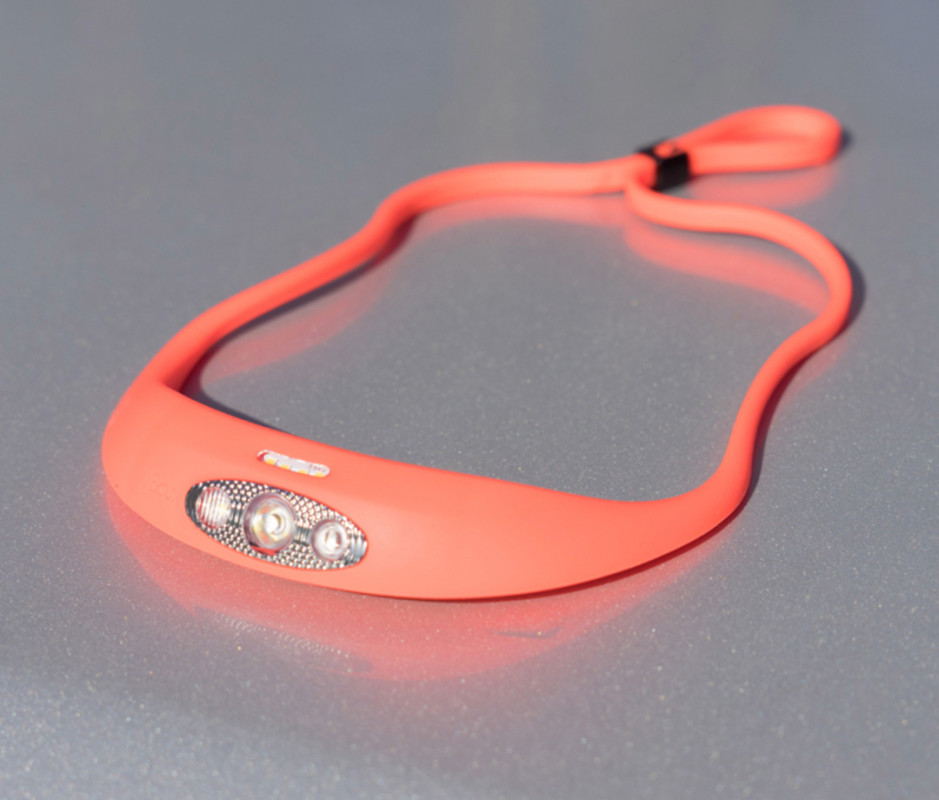
Headlamps are one of those pieces of gear that prove to be really handy on camping trips, but their usefulness goes far beyond just the outdoors. Whether you’re working under the hood of your car, tackling home repairs in poor lighting, or getting through a power outage, a reliable headlamp can often be more practical than a traditional flashlight.
Thankfully, today’s models have come a long way from bulky, low output battery-powered models of the past. Modern headlamps are lightweight, powerful, rechargeable and in my eyes Knog’s headlamps are the perfect example of that evolution. I’ve been testing their Bilby 400 headlamp for the past few weeks and it genuinely feels like it sits in a category of its own.
Knog paved its own trail by replacing the traditional bulky elastic strap with a low-profile, grippy silicone headband. The result is a much more comfortable and secure fit, light enough to forget it’s there, stable enough for jogging or cycling and compatible enough to wear with hats or helmets.
While many higher end headlamps max out at 250 lumens the Bilby 400 stretches way past that with its 400-lumen output. A light this powerful can extend beyond 100 feet in the right conditions and is great for illuminating as much or as little as you want thanks to its variable incremental settings. Other mention worthy features include IP67 water resistance, a battery indicator to help you stay on top of charging and convenient USB charging capabilities.
The Bilby 400 is not your average headlamp, but if you’re looking to upgrade yours to a powerful, versatile, and comfortable option to wear for extended periods, it’s a worthy investment.—Peter Matlashewski, contributor
[$32; us.knog.com]Heel Roam 350 Virtual Dog Leash
My year-old rescue dog was the perfect outdoor companion until she discovered the joy of chasing squirrels, rabbits, moose, and deer. All of a sudden, every off-leash hike turned into an uncertain adventure with a prey-driven dog. Enter the Heel Roam 350 Virtual Dog Leash. This e-collar acts like a moving invisible fence, with an adjustable radius that delivers correction (sound, vibration, or static) to your dog as you venture down the trail.
Like all e-collars, you’ll want to ease your dog into being comfortable with it and make them aware of how you use it to effectively communicate clear instructions. I’ve had great luck with the Monks of New Skete’s The Art of Training Your Dog (a classic that’s been updated with tips on using an e-collar), though many other dog-training resources are available.
The Roam acts like a standard e-collar with the added function of being able to set a “virtual leash” to keep your dog within 10-, 25-, 75-, 150- or 750-feet. No cellular or GPS is required, the battery for the control and collar charge quickly via USB, and the system is hands-free. The main drawback is that the collar unit is only water-resistant and not rated for submersion.—Conor Mihell, contributor
[From $399; heel.dog]Dyson WashG1 Wet Floor Cleaner
When it comes to testing new Dyson products, expectations are naturally high and after a few months with their WashG1, I can confirm it lives up to the Dyson name and reputation. Let’s start by redefining it: This isn’t your typical vacuum. The WashG1 is best described as a wet floor cleaner, built to handle both liquid spills and solid debris whether it’s food scraps, spaghetti sauce, muddy footprints, or even dog kibble. While it doesn’t rely on traditional vacuum suction, it does have counter-rotating rollers supplied with fresh water that effectively tackles dry or wet spills at the same time.
Like most Dyson cleaning appliances, it lives on the charging dock so it’s always ready when you are. No hassle, no cables, just grab it and go. This model also comes with a self-cleaning function, however it’s important to know that you will still need to manually remove the baseplate and wash out any solid debris it may have picked up.
I’ve been in the middle of redoing a bathroom over the past few weeks and the WashG1 has been really handy for cleaning up at the end of the day. It’s handled dust from drywall and plaster while also managing dirty boot tracks from constant in-and-out traffic. With three adjustable water flow settings, you can tailor the “mopping” intensity to match the mess—whether it’s light daily maintenance to something heavier and caked-on.
What I like about the WashG1 is It’s much faster than whipping out a mop and bucket for those quick spot cleans. It’s also a huge time saver when cleaning my hardwood floors, but I would caution using it on yours without doing the proper research because not all floors respond the same way to moisture and the relatively powerful rotating rollers.
Like any cleaning appliance, it does require some upkeep and maintenance to keep it in top shape. If you have young kids, pets, or an overall accident-prone household, you’ll certainly see the value in getting a WashG1. That said, with its premium price tag, it’s not a necessity for every household, but it certainly bridges the gap between a vacuum and a mop—though it doesn’t entirely replace either.—Peter Matlashewski, contributor
[$700; dyson.com]Week of April 14
YETI Ranchero 27L Backpack
There was quite a stir in the die-hard backpack crowd back in the fall of 2024 when cooler-colossus YETI bought Mystery Ranch, the much-beloved, hard-wearing backpack company with roots in tactical and hunting bags. Started by Dana Gleason, founder of Dana Designs—an innovative and also a well-loved backpack company—Mystery Ranch specialized in made-in-the-U.S.A. packs (and eventually other gear) that were known for its top quality, durability, and intensely loyal fans.
So it was no surprise that there was a huge (relatively) outcry from the hardcore Mystery Ranch lovers when YETI took over, with most worrying that the brand would kill or otherwise pervert the independent pack company into a shell of its former self. YETI seemed to indicate that Mystery Ranch will still offer most of the current line-up into 2025 but may eventually fall back to just selling their core bags focused on the military and wildland firefighters.
What eventually transpires remains to be seen (though there are rumblings washing across the internet, natch), but YETI’s newest backpack, the Ranchero (in 22L and 27L), just dropped in March and to no-one’s surprise it looks very similar to a few Mystery Ranch models—notably the Coolee, Assault, and Catalyst packs—with its tri-zipper front.
So, with that lengthy exposition out of the way, how’s the pack? The DNA of both brands mixes in the bag (thought that’s mostly Mystery Ranch heritage at this point) to create a solid backpack that’s filled with nice features, which is not shocking given the parentage. It’s made from a mix of durable and water resistant nylon (called TuffSkin by YETI) and a TPU-like base to protect against damp areas. That base is also stiffened so it allows the pack to sit upright by itself for easier loading and unloading.
There’s the aforementioned three-zipper front, or RipZip in YETI lingo (MR’s calls it 3-ZIP), which works just as good as in the original versions, letting your pull open the bag with one hand to have access to the entire interior, or lets you select one of the three zippers to get to whichever portion of the bag you need to. The inside of the main compartment (the 27L gets a separate, padded computer section in the back) has three high-mounted zippered pockets for small essentials, and there are two open pockets on either side down low. There’s also a top zippered lid pocket with key lanyard and two stretchy outside bottle pockets on each side.
It comes with three compression straps that easily clip into to the very front of the pack, or to the side, to let you vary how much compression you need. I mostly rocked it without the straps as it doesn’t really need them and, with the structured base, don’t really compress that much. One niggle was that clipping into the most rearward loops made the plastic hooks stick out some instead of laying flat so they could contribute to chafing or irritation on your back or arms.
The shoulder straps and back pad are covered in a neoprene-like material that’s comfortable and durable, and are stiff enough to offer some structure. A stretchy webbing belt with buckle sits low on the back which can dig into you when hoisting a heavy load. It’s billed as a luggage strap, but I’m not sure why the buckle is included, besides allowing you to capture the shoulder straps.
As to be expected from the cooler giant, it’s a well-thought out, bomber (so far), and, of course, over-priced backpack. For YETI heads it’s a no-brainer, and, for those holding a torch for Mystery Ranch, luckily they can still pick up a Catalyst—a near-equivalent pack—on their site for $100 less…for now.—Adam Bible, Gear Editor
[$275; yeti.com]Particula GoChess Lite Modern
If you like playing chess but often find yourself without a partner to play with, the Particula GoChess set might become your most valuable companion yet. Whether you’re playing face-to-face with a friend, challenging AI, or competing online through your favorite chess app, this smart board does it all.
GoChess isn’t just an opponent, but it can also be a patient and intuitive teacher. You can turn on AI assistance to guide your decisions, suggesting optimal next moves or highlighting the best placement for each piece by illuminating select squares the moment you pick it up. This feature can be toggled on or off depending on whether you’re in regular mode or trying to outplay a stronger opponent. Another useful feature is game-saving. If you need to step away mid-match, this board remembers your exact setup so you can pick right up where you left off.
When playing against AI, you can select your difficulty level on a scale from 1 to 32, making it an excellent fit for everyone from absolute beginners to experienced players looking to sharpen their skills. Additionally, GoChess integrates seamlessly with many popular chess apps such as chess.com and Lichess, allowing you to climb your leaderboard while enjoying the tangible experience of playing with real pieces instead of a smartphone screen.
In short, the Particula GoChess set isn’t just for competitive players—it’s great for anyone looking to learn, practice or level up their game. Chess is one of the games that takes time, patience and practice to master. With GoChess, you can play as many games as you like, anytime you like. Pair that with a powerful AI opponent and you’ve got every opportunity to improve—it all comes down to how much time you’re willing to invest.—Peter Matlashewski, contributor
[$300; particula-tech.com]Pelican ATX 22” Hard-Sided Carry-On Luggage
Pelican originally earned a name in the outdoor industry by building rugged gear ready to survive a rough-and-tumble life. But recently, the company decided to focus on the more typical travel equipment that makes up a much more significant part of my life, since I spend about half my time on the road traveling for automotive and motorcycle launches, as well as attending motorsport events.
Previously, I used a two-wheeled Pelican Air Travel for a few months, but wound up leaving it behind on most trips because I missed the convenience of a four-wheel roller. The advantages of an upright roller clearly inspired Pelican to introduce the new line of ATX cases, and after testing the ATX 22” Carry-On over multiple flights in the past week, I now have a new go-to in the closet.
Four-wheeled uprights rule the roost right now because they make hustling through an airport so much easier, since even slightly reduced strain on hands and shoulders versus a two-wheeled roller add up quickly over the course of even brief travel time. Slip a backpack onto the handle and a four-wheeler will happily roll along all alone, with minimal effort required versus a two-wheeler that adds, effectively, tongue weight the higher up the center of gravity sits.
The ATX lineup still employs the stiff plastics that made Pelican famous, though I noticed immediately that the clasps close much easier than on previous cases. The interior also steps up a notch when compared to the Air Travel, with a flexible liner that includes a zippered closure for the foldover, as well as a stiff mesh panel to keep shirts nicely creased.
Travel cubes aren’t my style, but Pelican also sells multiple sizes to help maximize interior volume. That’s crucial, because the 22-incher fits just barely enough to last me a week on the road, with my Ogio backpack absolutely stuffed to the brim. I almost wish I went one size larger, to the ATX 25” Check-In that I suspect will fit in most overhead bins. But the tiny puddle jumpers and economy airlines of Europe made me worried, plus I appreciate that a smaller suitcase inspires me to pack lighter.
Empty, the 22” weighs a fair amount more than either the Air Travel or my Muji hardshell roller, but the wheels still roll surprisingly silent over rough sidewalks and cobbled streets. Carpets do create a little more resistance, though, and the combo locks spin so smoothly that it’s easy to knock the digits off just while trying to pack. But otherwise, the ATX has quickly become my new go-to for any trips a week or shorter, and I fully expect this four-wheel roller to hold up well to 26 weeks (give or take) a year on the road.—Michael Teo Van Runkle, contributor
[$500; pelican.com]AKASO Seemor-200 Night Vision Goggles
Color night vision goggles are no longer a thing of the future. After testing the Seemor-200s from AKASO, I can confirm they deliver an impressively accurate image, even in total darkness. These goggles use a combination of AI-ISP and CMOS technology to capture low-light scenes and enhance visibility where the naked eye would otherwise fail.
I’ll admit, I was a bit skeptical when I first read about the technology behind these goggles, but the concept sounded too intriguing not to try out. As someone who loves bringing binoculars everywhere I go, these were right up my alley. Not only could I spot movement and wildlife in the distance at night, but I could record high-quality videos and capture photos as well.
Another interesting feature is the 3-inch LCD screen, which replaces the traditional two-barrel design. There is also a focus adjustment wheel for fine-tuning clarity along with a powerful 16x digital zoom. Under the right conditions, the Seemor-200s can extend its range of sight beyond 1,000 feet although the resolution gradually decreases the further you zoom in.
The Seemor-200s brings out your inner spy and are a whole lot of fun to use—not just at night but also during dusk, when lighting is often challenging for traditional binoculars to perform. For the price, they deliver an impressive number of features that is just not possible to find in equivalently priced binoculars. Whether you’re looking to enhance security around your property or you’re a camping enthusiast eager to observe what comes alive beyond your campfire, the Seemor-200 Night Vision Goggles are a lot of fun to bring along.—Peter Matlashewski, contributor
[$204; shopakaso.com]Week of April 7
Revo Sonic 3 Bluetooth Sunglasses
It seems like every little product we come in contact with these days has WiFi or Bluetooth integrated into it, for better or for worse. Mostly it’s for worse as trying to setup and figure out all of the extra features can be frustrating. Smart glasses (and sunglasses) have been trying to become a thing for awhile now, but I found that these new Revo Sonic 3 Bluetooth Sunglasses are actually a good way to get into the wireless action without having to worry about too much tech. They basically just mated the high-quality lenses that Revo is known for to a thicker frame to house some touch controls and two speakers.
What you get with the Sonic 3 is a pair of sunglasses that look good, work well in their primary task of filtering bright sunlight (a polarized brown-based, light green mirror-coated lens), and have the added novelty of being able to take calls and listen to music wherever you are. Revo added directional stereo speakers that are decent, considering that they aren’t jammed in your ear but floating just above them. Listening to music is a bit underwhelming, especially if you have any bass-heavy tracks on. I found that genres like jazz, classical, metal, and classic rock sounded best, though if you are wearing a hoodie, just pop that puppy up and your bass experience will increase tenfold. The touch-sensitive controls on either side of the sunglasses temples are easy to use and figure out, but, like all new gadgets, takes a bit of time to remember how to use.
Taking calls on the Sonic 3s was a joy, with my fellow callers commenting on how crips and clear our conversations sounded whether outside, in a car, or just walking the dog. I’m not a huge earbud user, so I often found myself using them at night to take calls when I needed my hands free—even though I could barely see. Revo says they use special tech to cancel out ambient noise and amp up your voice, and I believe them as all of my convos using them went off flawlessly. (I did not try them on a Zoom call though…yet.)
Other neat features I appreciated was the magnetic charging port (though that’s also just another proprietary charging cord you hope you don’t lose), the long battery life—I got close to the 10 hours for music but didn’t try to test the estimated 7 hours of phone calls—and the sensor that turns off power after a few seconds when you set the sunglasses down upside down. I found that was a clever and intuitive way to make sure you don’t waste the battery when not on your head.—Adam Bible, Gear Editor
[$379; revo.com]GearWrench Magnetic Fender Cover
Two of my trucks have been cursed with a kind of starter motor plague lately, somehow suffering some sympathetic symptoms with each other. Luckily, starters aren’t too hard to work on, but they do require either diving deep into engine bays from the top or climbing beneath to access from the underside. In the middle of struggling to find the right angle to get a wrench on stuck bolts or unclipping finicky wiring harnesses at the top of the starter, the last thing I want to worry about is scratching up my fenders. For almost any job that requires leaning over into an engine bay, this GearWrench protective mat is the perfect tool, because it makes fiddling with other tools even easier.
It’s cheap and easy, essentially a thick vinyl or almost neoprene material with a lip sewn on one side. Magnets in the lip hook onto the edge of the engine bay, then the rest of the cushioned material drapes 15.275 inches down over the fender. Installation takes approximately four seconds or less, and the same for removal—though it’s just 34.25 inches long, so larger vehicles may need to scoot forward or aft depending on the location of the engine or transmission work.
This mat is still a gamechanger nonetheless, precisely because it allows me to stop worrying about my belt buckle or jacket zipper while leaning on the car for support. The magnets keep the mat in place, and I’ve never had a problem with it squirming out from under me at the wrong time. The thick material also repels liquids like oil or brake fluid, which might cause paint damage too.
I do think that a little pocket to house those easy-to-lose-tools (like that pesky 10-millimeter socket) might make a nice addition, but in this case, simplicity seems like the name of the game. I usually plop one on each side of the engine bay, or even just in the front over the grille if I’m doing an oil service, and then leave them on until the job is completely done. Anyone who regularly wrenches on their cars, trucks, or SUVs will find this protective mat incredibly useful, if only because it results in fewer four-letter words spewing out after stepping back at the end of a repair to appreciate a job well done.—Michael Teo Van Runkle, contributor
[$21; amazon.com]Cardo Packtalk Pro
Good communication is everything, especially on a motorcycle. For years, road riders got by mainly pantomiming gas stops, food breaks, or mechanical issues while cruising the highway. In tighter terrain, dirt bikers have also struggled with hand signals often losing each other at turns on jeep roads or single track. More recently, enduro riders have adopted avalanche radios or shoulder mounted walkies like the Rugged to communicate over short distances. While you can flag down a buddy to help you through a steep rocky section, there’s a disadvantage to not having a hands-free option as you both limp through the tough stuff.
Enter Cardo’s Packtalk system—a helmet-mounted game changer for easier motorcycle communication. For the last two years I’ve run the Packtalk Edge on a variety of rides ranging from long dual sport adventures to all-day hard enduro woods riding. I’ve found the 40mm stereo speakers to be crystal clear, amplifying the Bluetooth channel that enables me to give tips to new riders or simply chit chat with the more advanced members of our group as we debate over lines to take.
The Packtalk Pro builds on the already stellar Edge platform. Both feature the magnetic Air Mount, auto-healing mesh connectivity, and a range of up to one mile. Simple wheel controls make adjusting volume on the fly effortless, and the app makes pairing with your phone seamless—for music, calls, or intercom. While both are perfect for group comms, the Packtalk Pro empowers solo riders by incorporating an added safety measure: crash detection.
If you’re out by yourself, the Packtalk Pro tracks your movement by way of an Internal Measurement Unit. If you go down, the unit automatically detects a change in velocity and pings your smartphone with a delay giving you ample time to ignore the alert or assume a crash did happen pinging your emergency contact. The cloud-based system then sends the precise location to whoever you selected to contact the appropriate authorities. This evolution in rider communication is not only a fun way to navigate trails together but to also provide an extra safety measure for those who go out alone.—Dustin Beatty, contributor
[$460; cardosystems.com]Kifaru Box Stove
Lightweight, portable backcountry stoves may be considered specialty camping gear, but they can be a real lifesaver if you enjoy spending time outdoors in those colder, damp shoulder seasons. I tested Kifaru’s box stove over the winter while ice fishing and more recently in the spring thaw and I’ve been impressed not only by the amount of heat it generates but also how compactly it folds down for transport.
This stove does measure 12 inches long, so your wood will need to be cut down to size which may sound limiting; however, it’s far more efficient than an open fire because it’ll burn smaller amounts of wood for longer periods of time. Not only that but this stove will capture the heat for utility reasons whether it’s drying your gear out, boiling water, keeping you warm in your tent or just cooking a meal by placing a pot its surface.Its elevated and enclosed design makes it easy to build a reliable fire even in wet conditions. The front hatch allows for adjustable venting and despite occasionally using damp wood, the smoke always exited through the chimney.
Another important feature is the dual stainless-steel screen system found in the base of the chimney. This is especially important for not burning a hole in your tent should a flyaway ember make its way out while still lit. The Kifaru box stove comes with an 8-foot-long chimney pipe that has a variable diameter design. When rolled up, it measures a compact 2” by 14” long—making it ideal for packing up.
Overall, I thoroughly enjoyed using this stove. However, compact backcountry stoves like this have inherent limitations—not due to the product itself but simply by design. This isn’t a “set it and forget it” stove, meaning you’ll need to refuel it relatively often which could be a deterrent for some, but for others, it’s quite therapeutic to keep the fire alive. If you’re a casual camper, this stove may not be essential but if you enjoy the challenge of cold-weather camping or you’re an avid hunter, the Kifaru box stove is a great companion to bring along.—Peter Matlashewski, contributor
[$475; barneyssports.com]Related: Men’s Journal Grilling Awards: Meet the Best Grills of 2025
